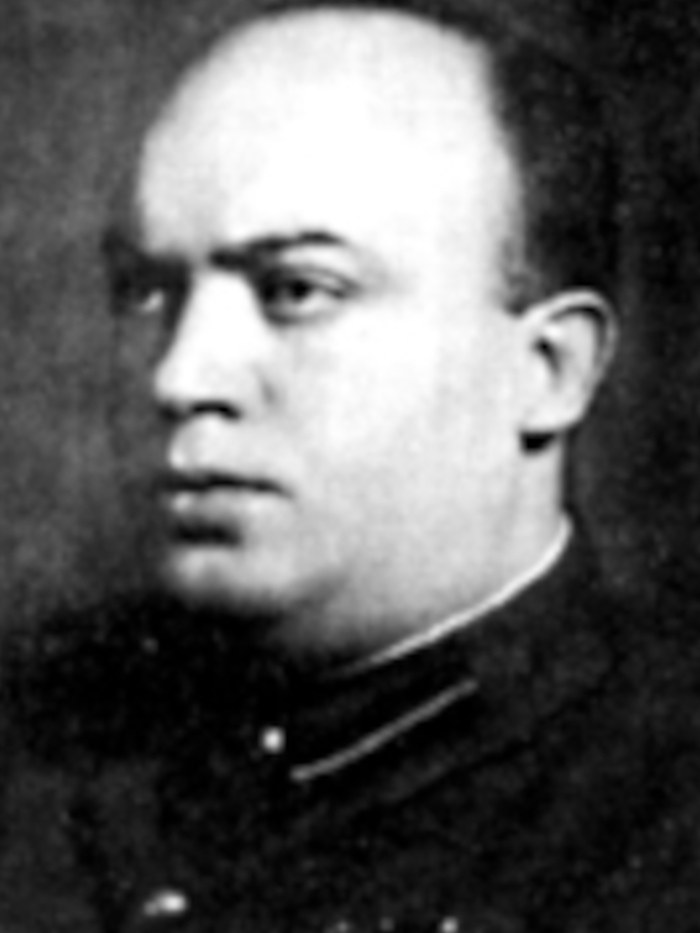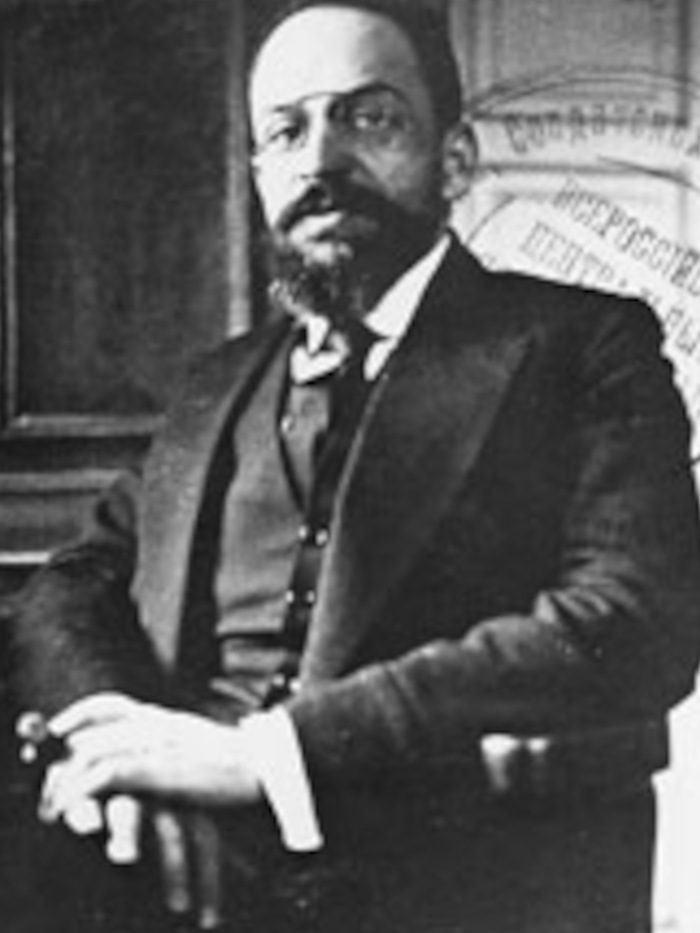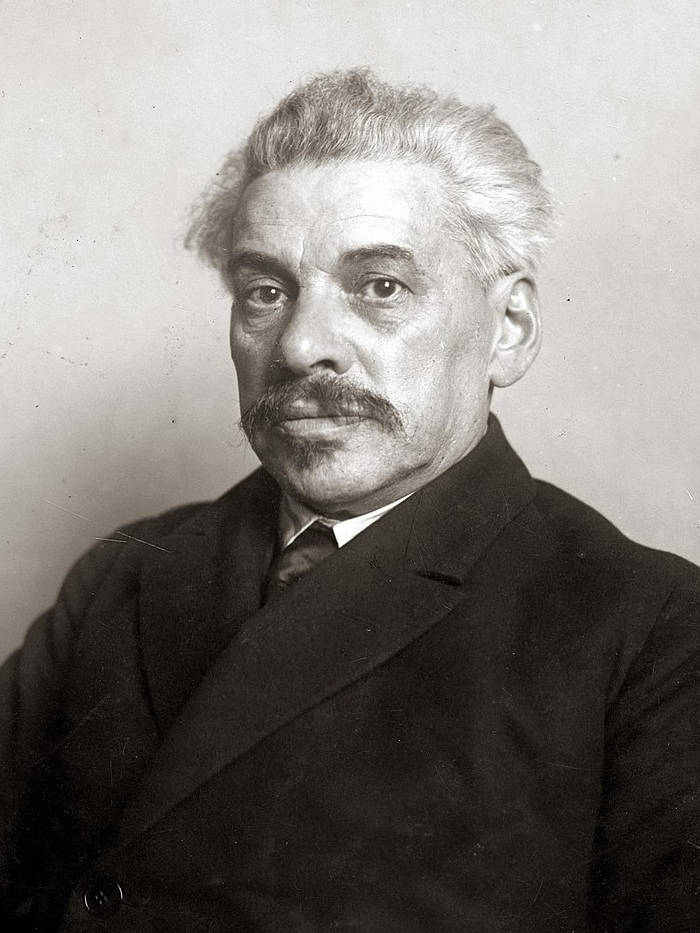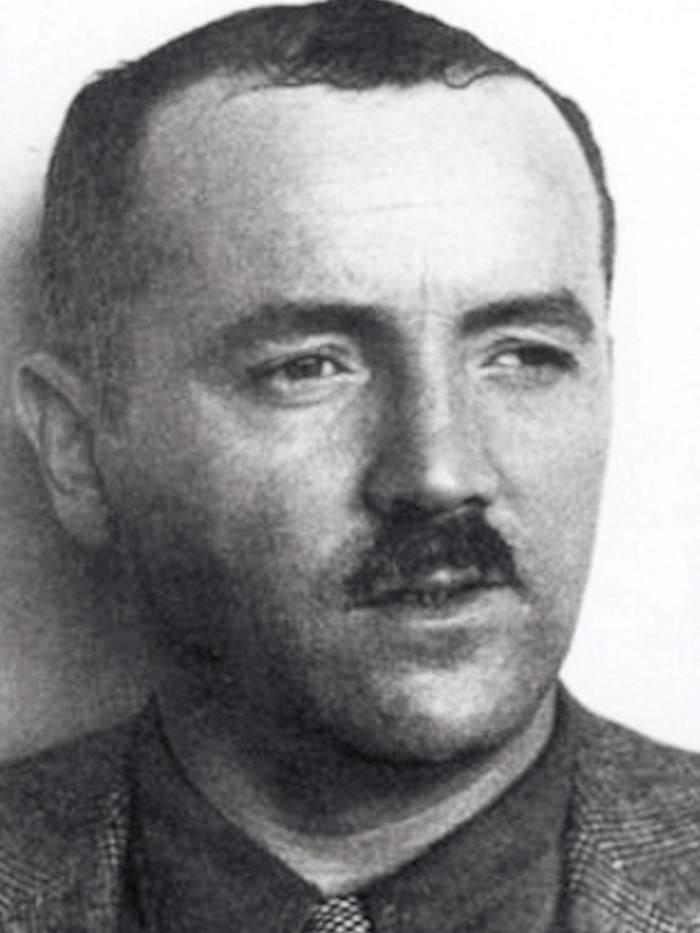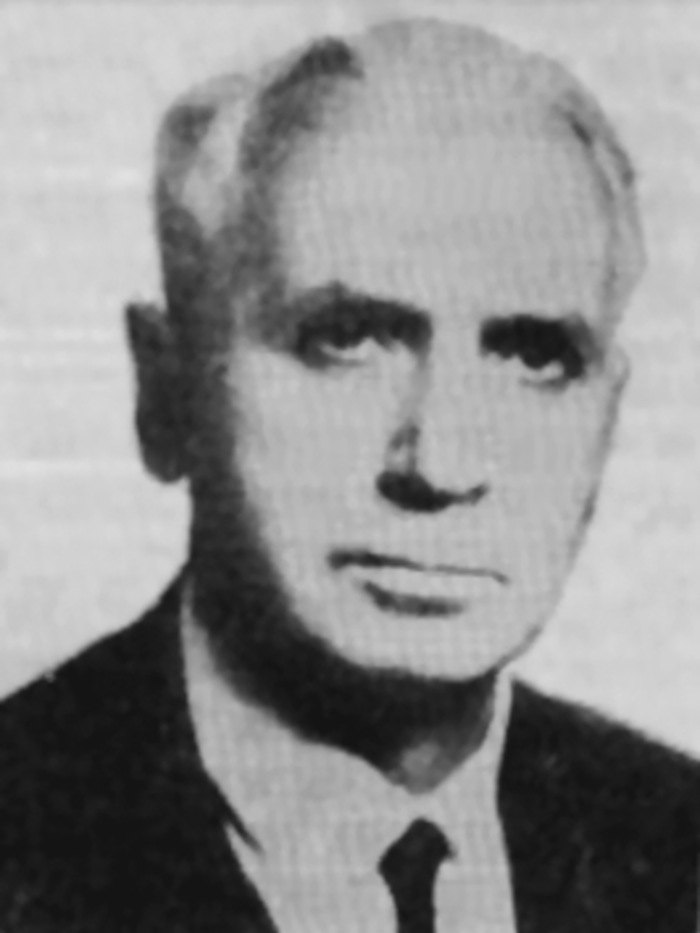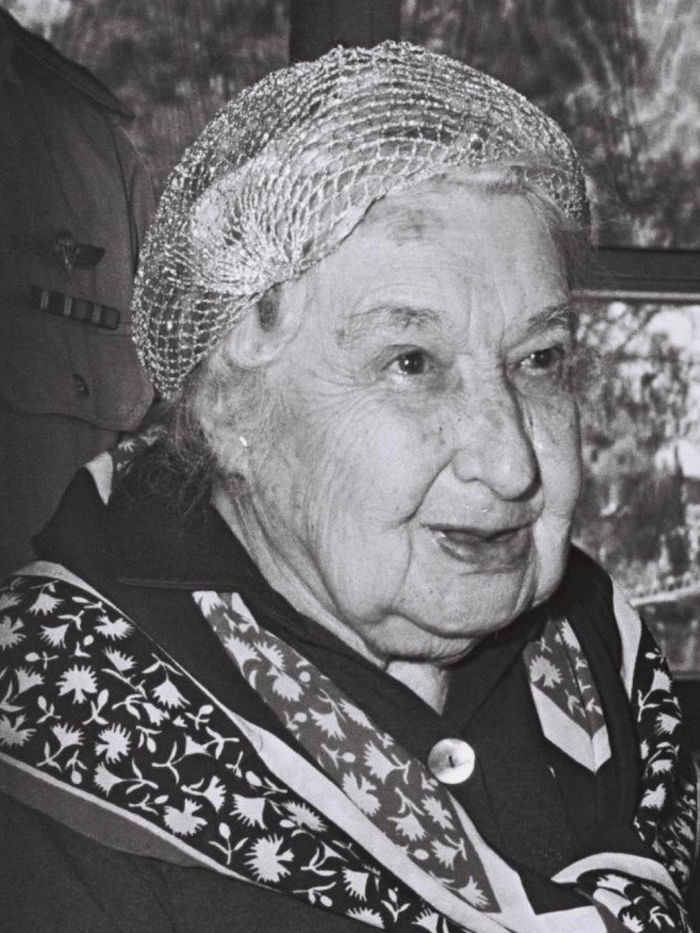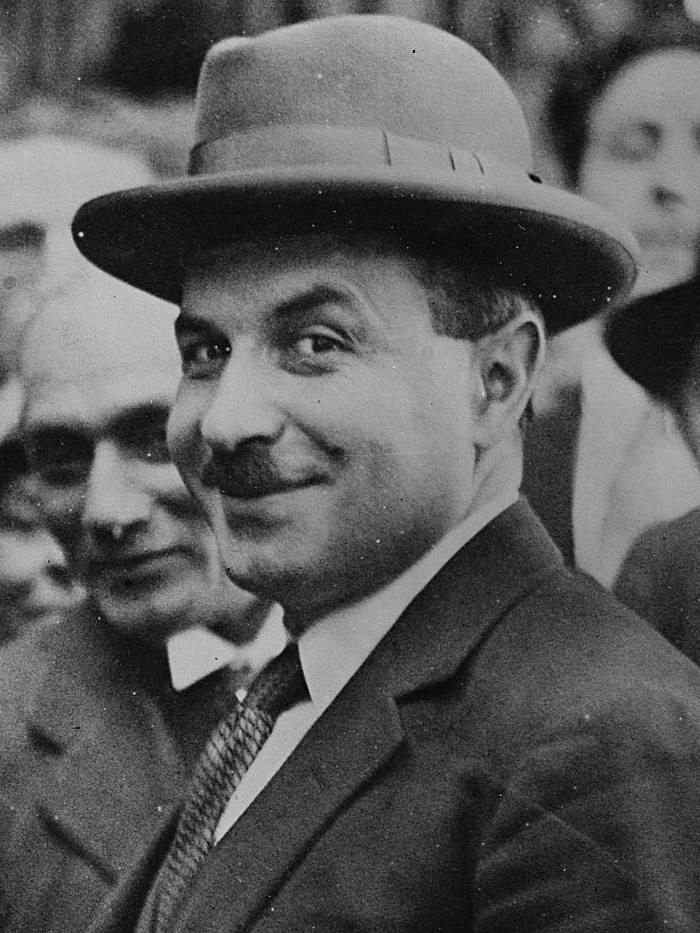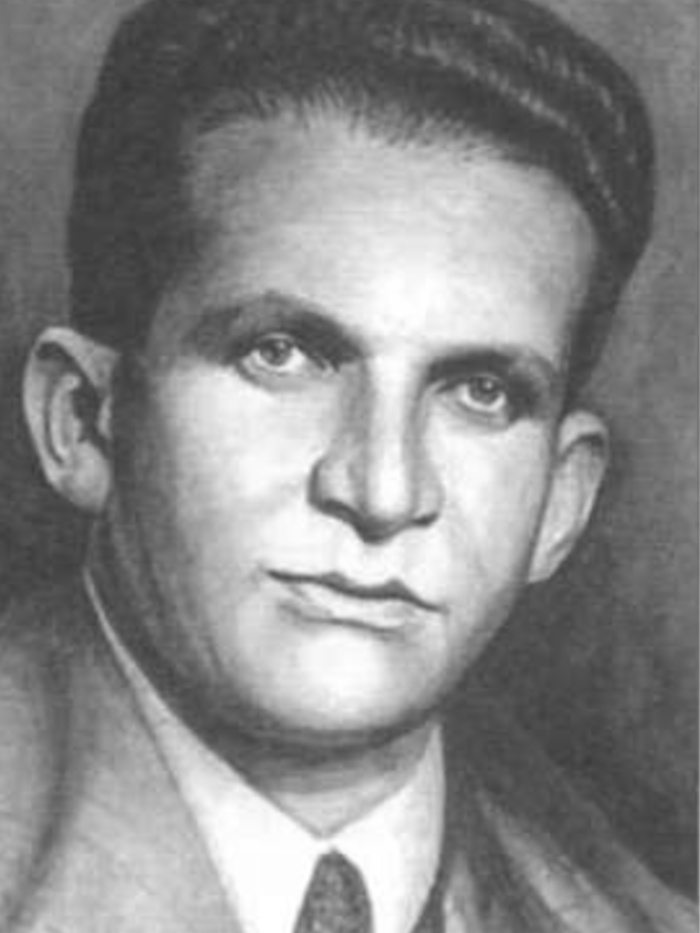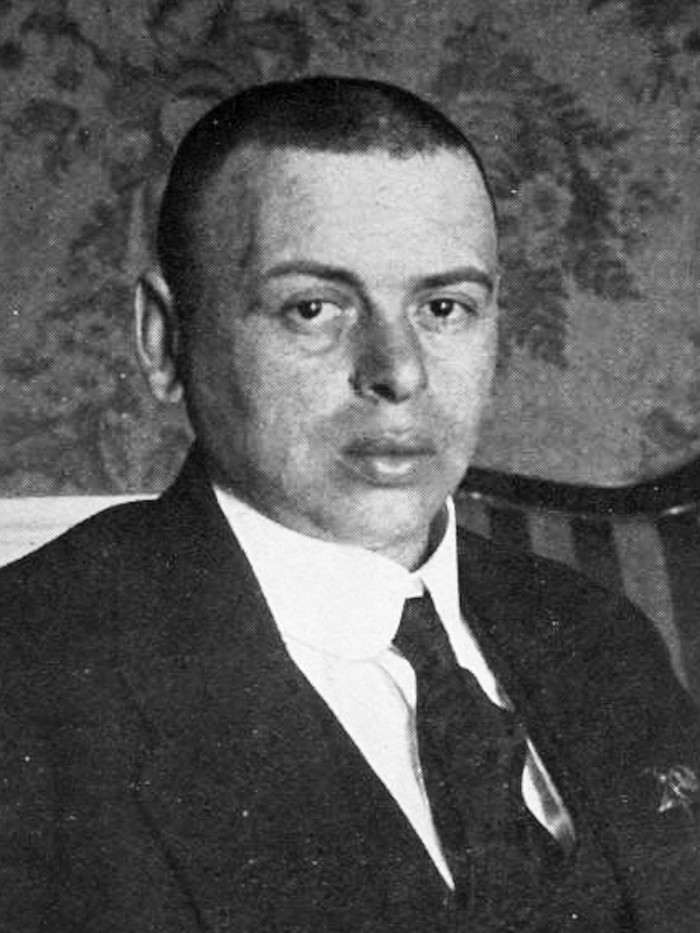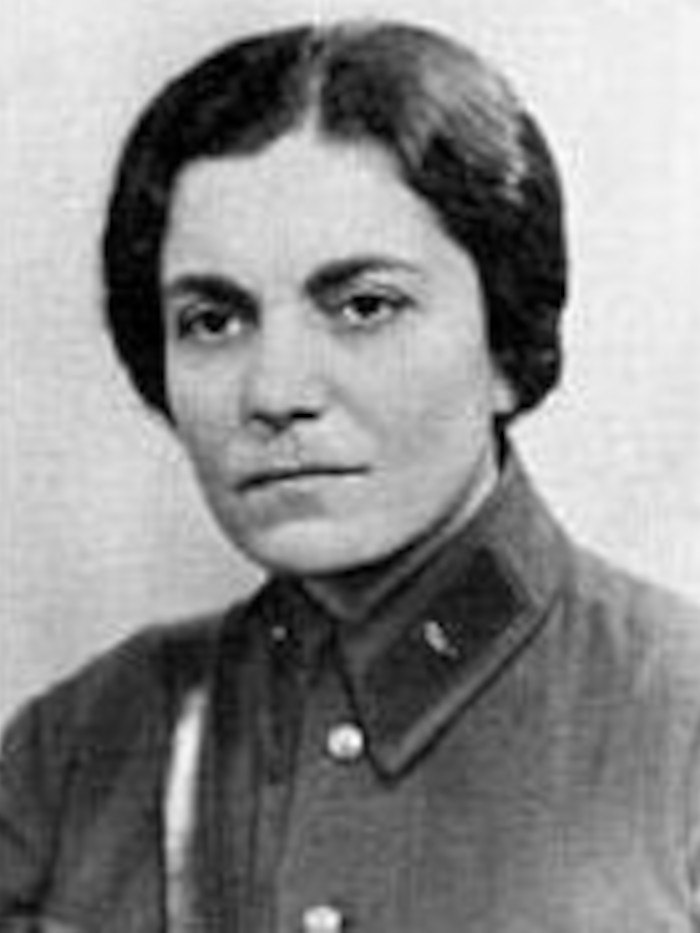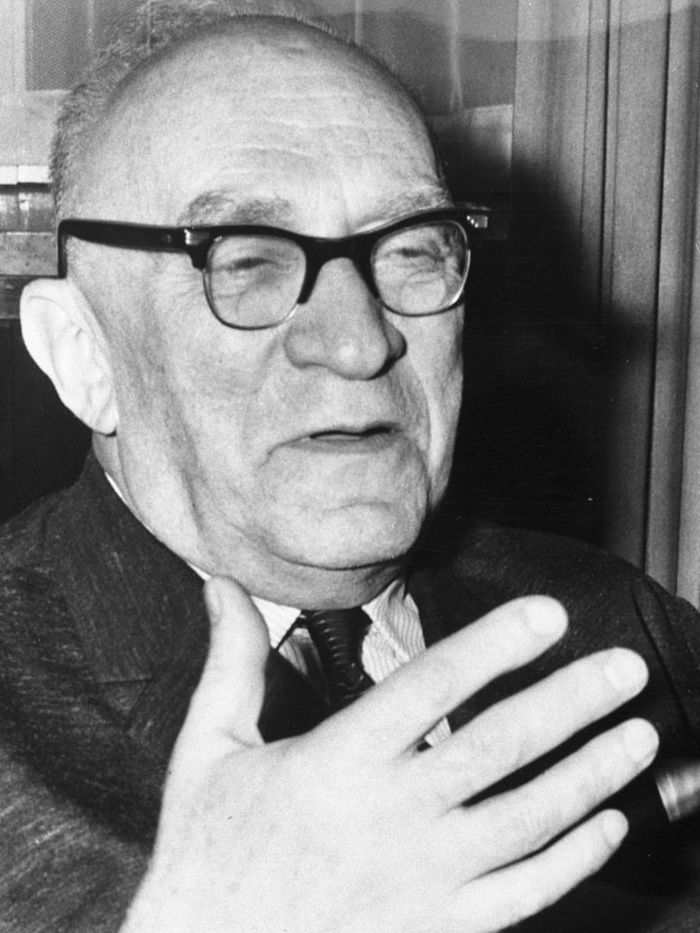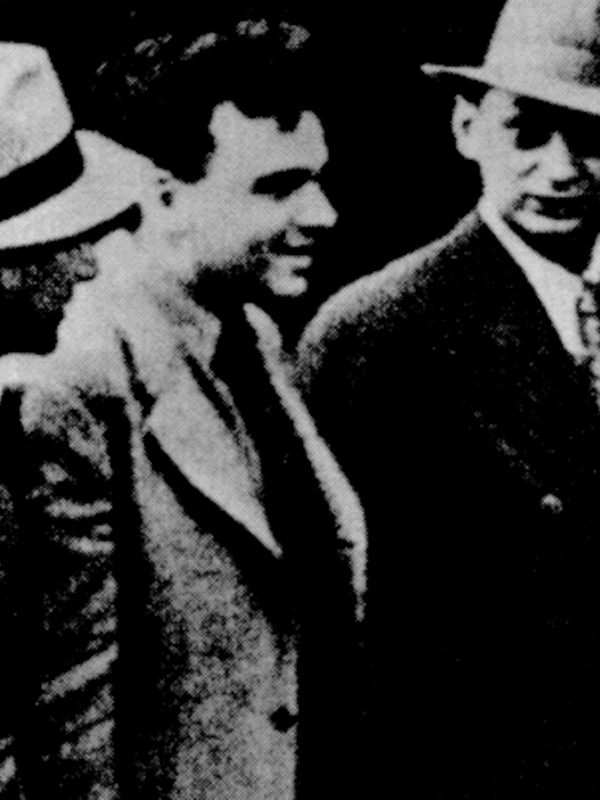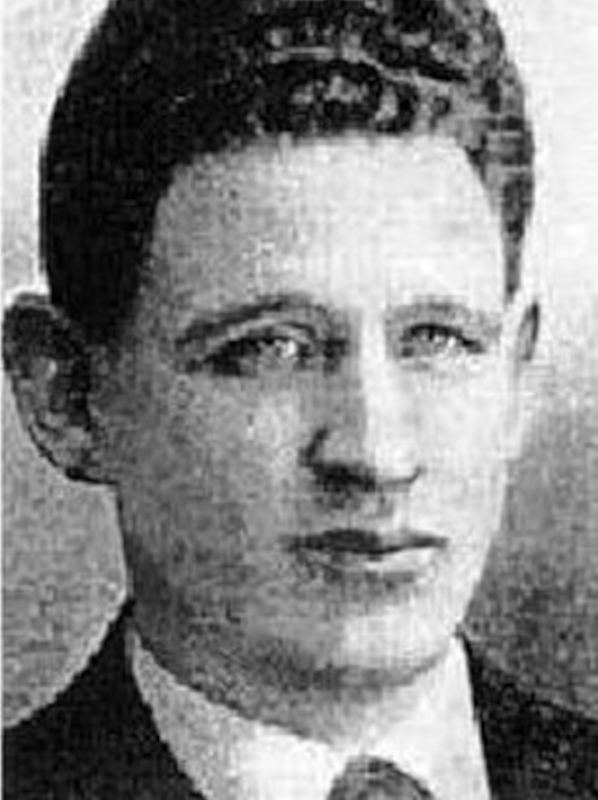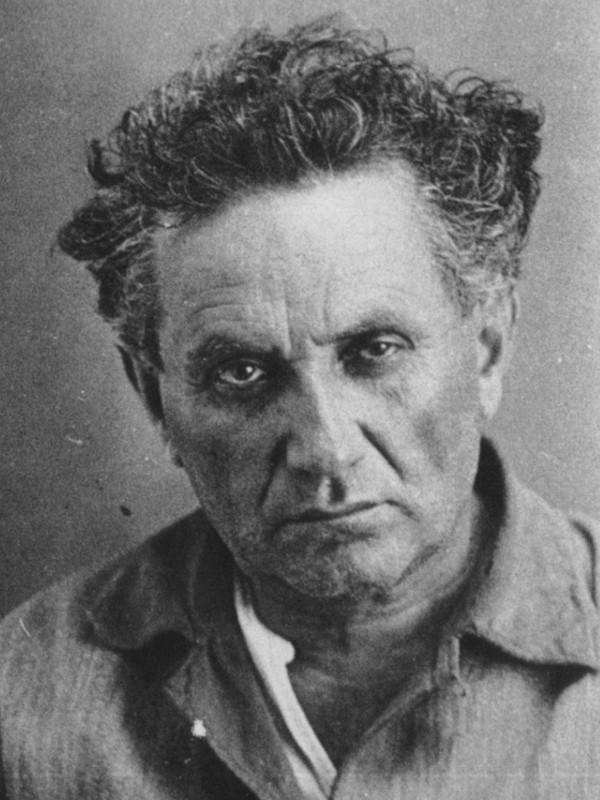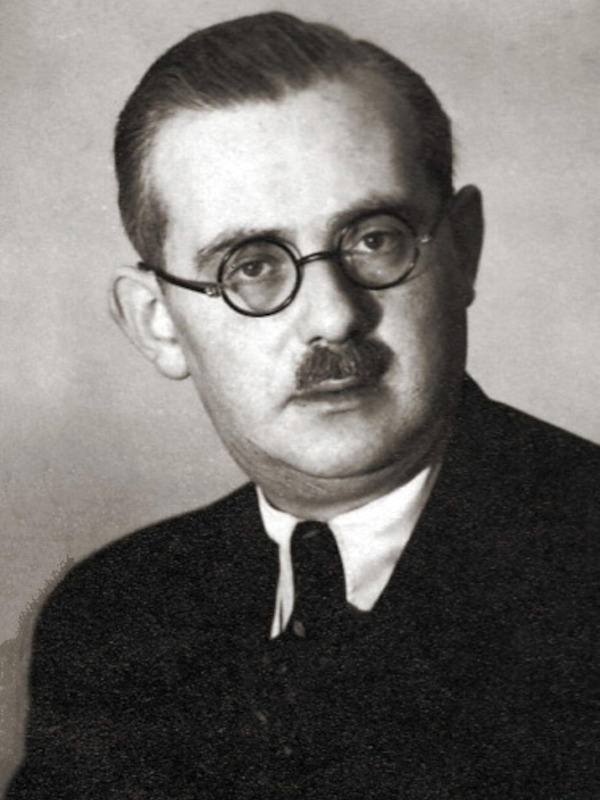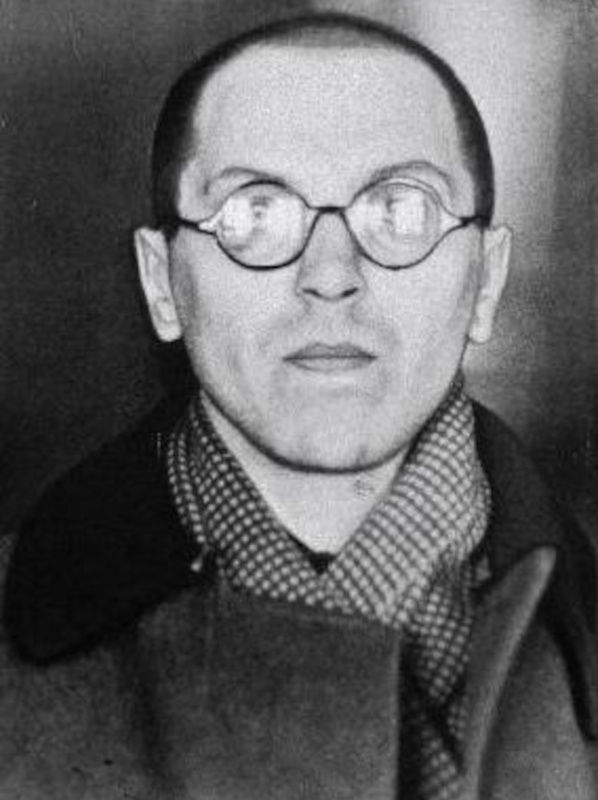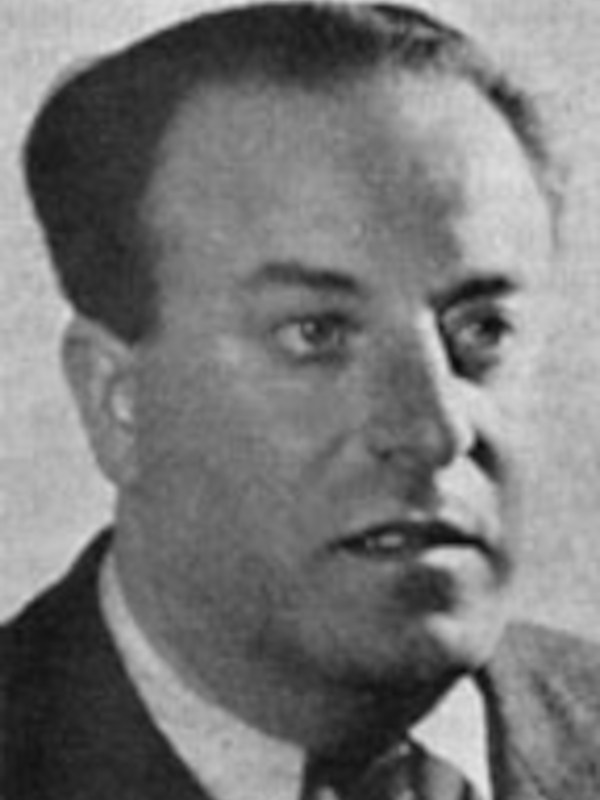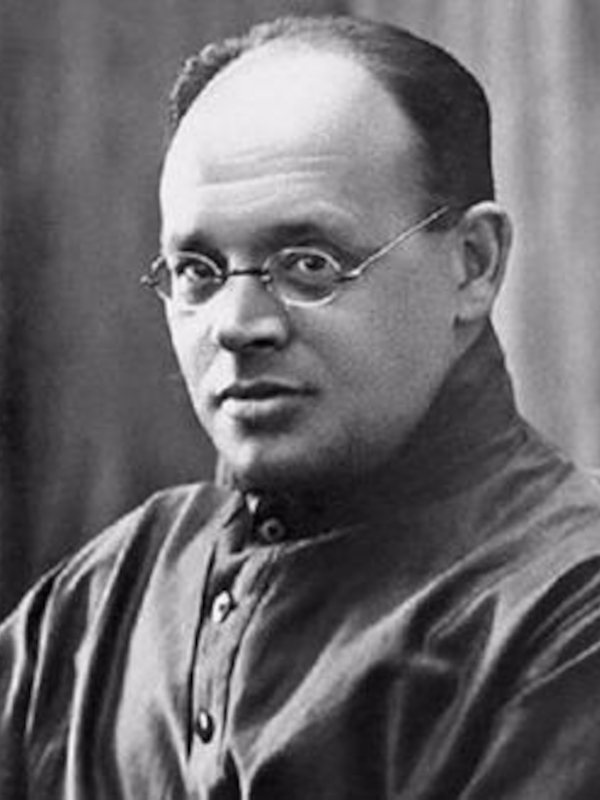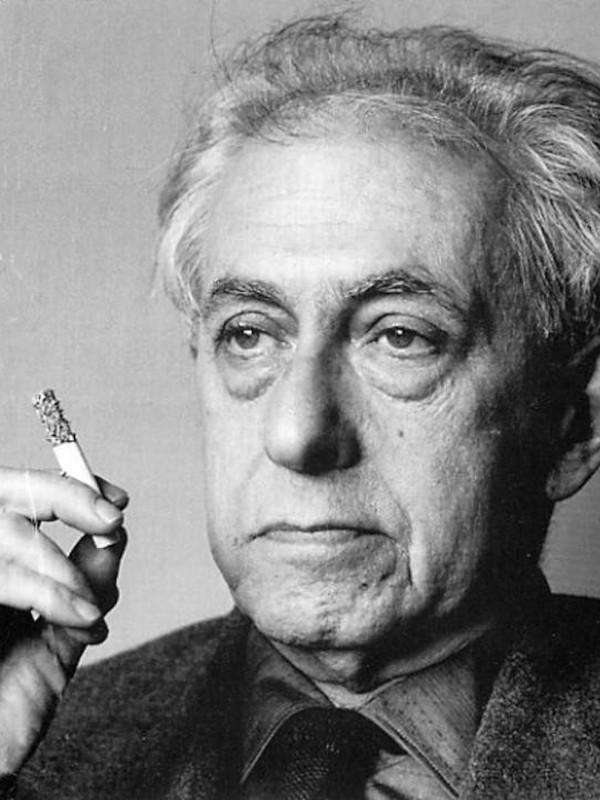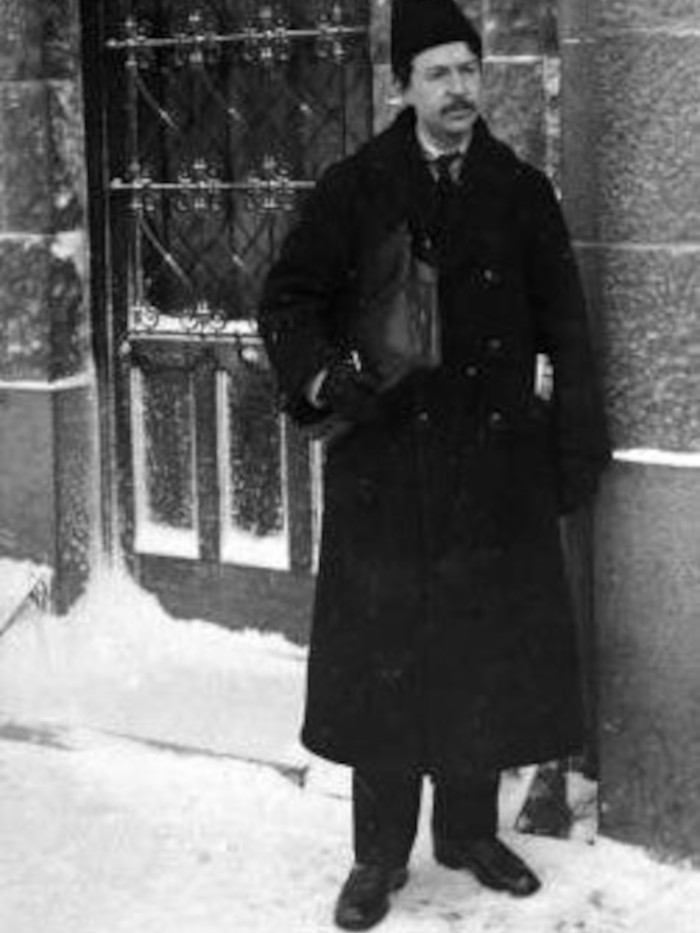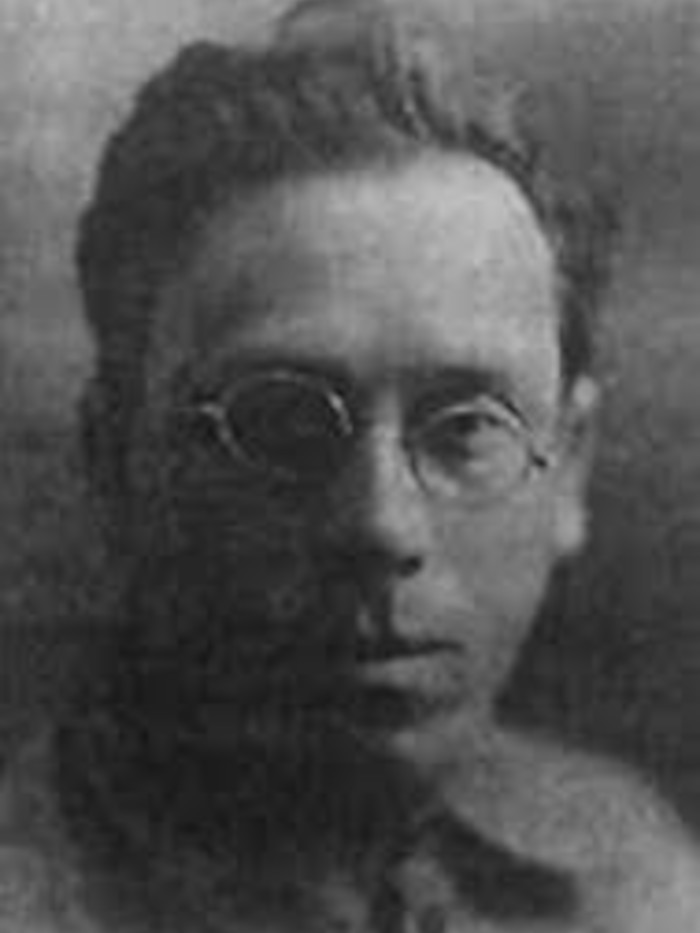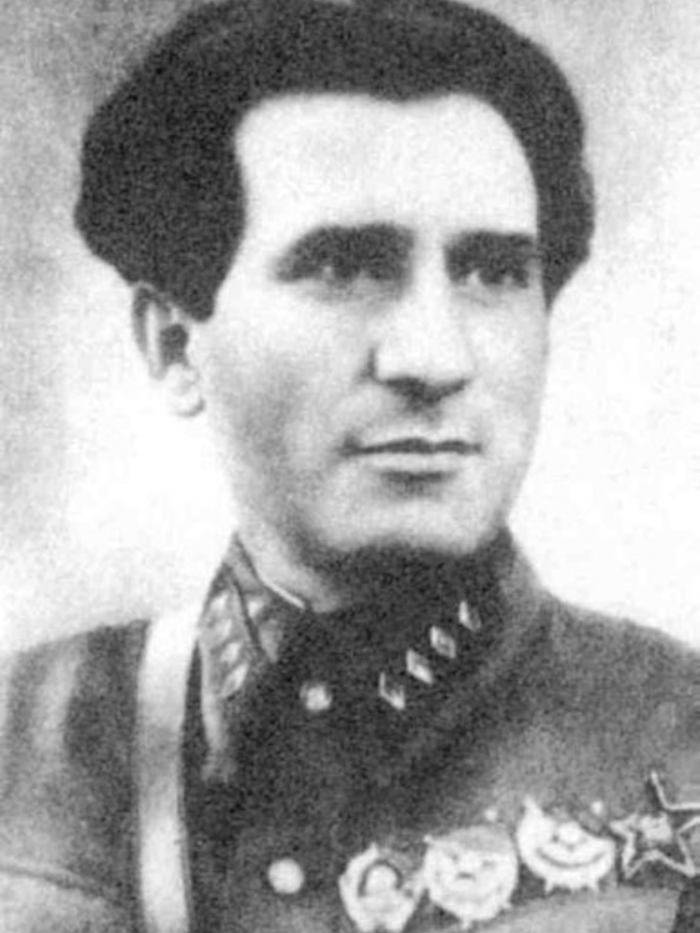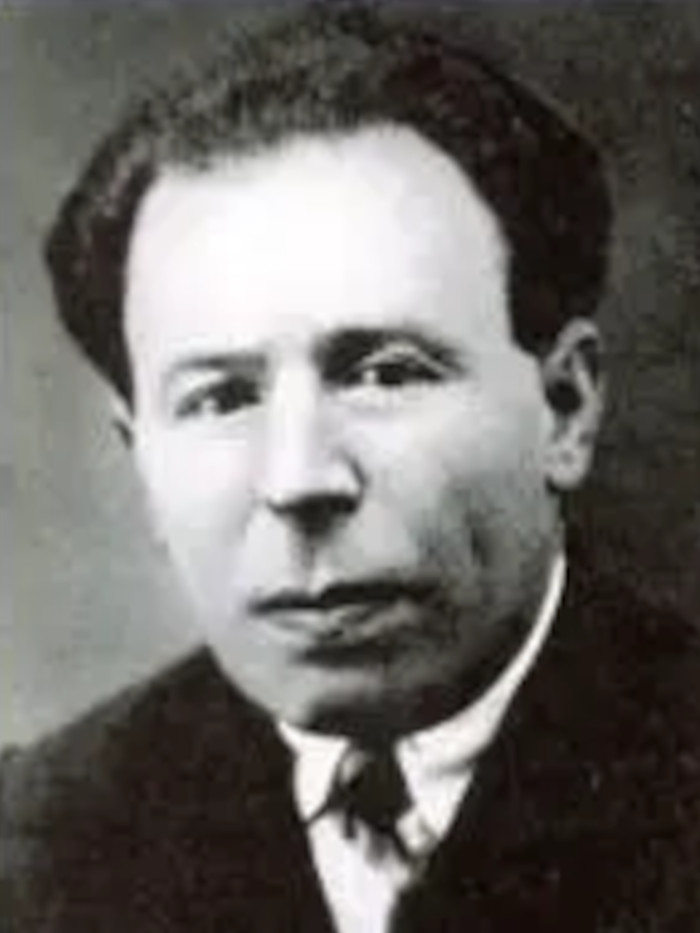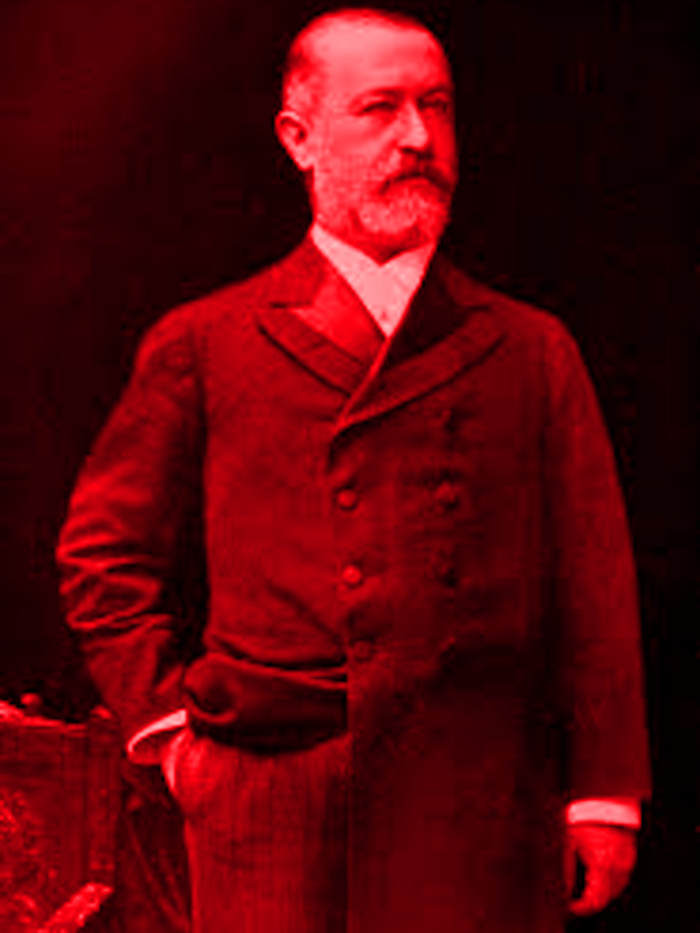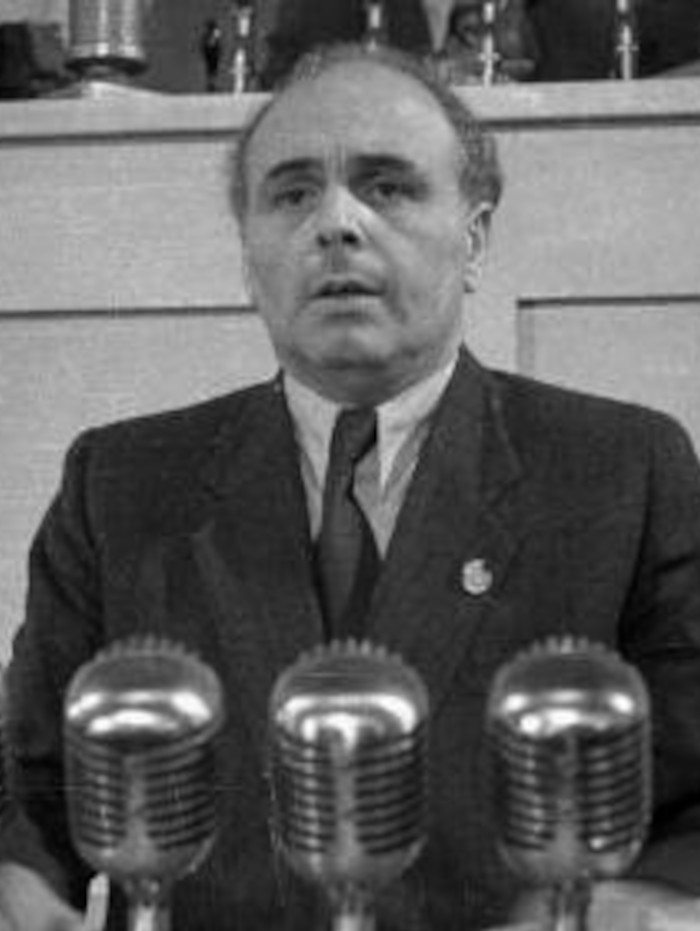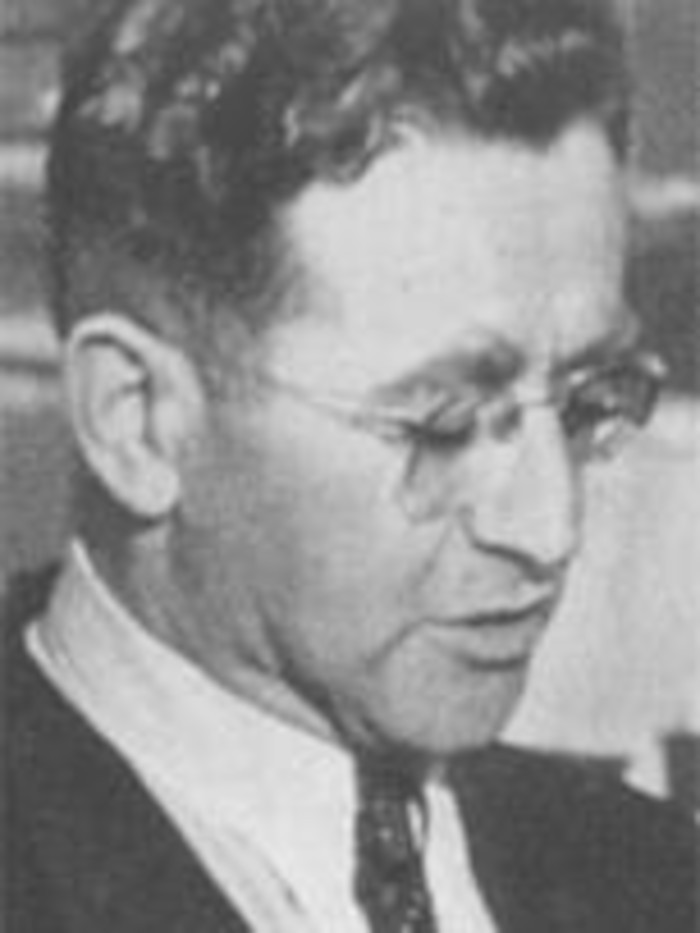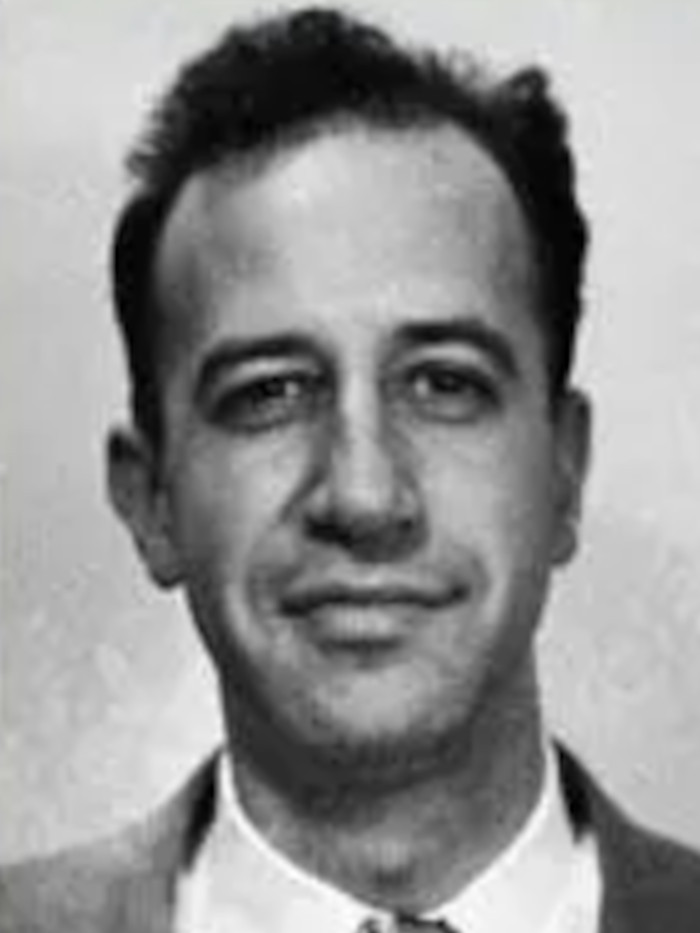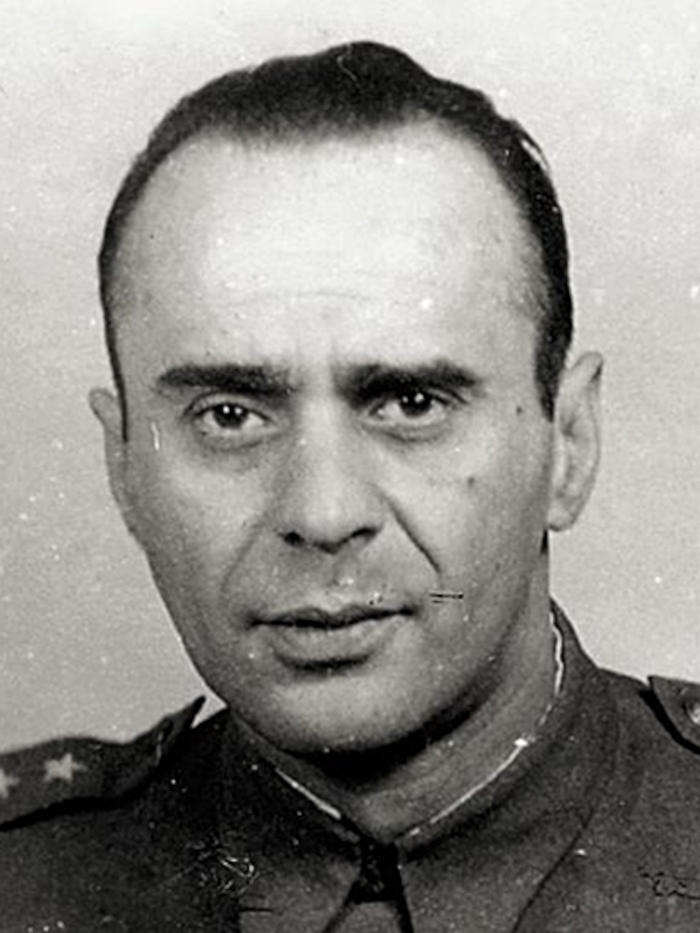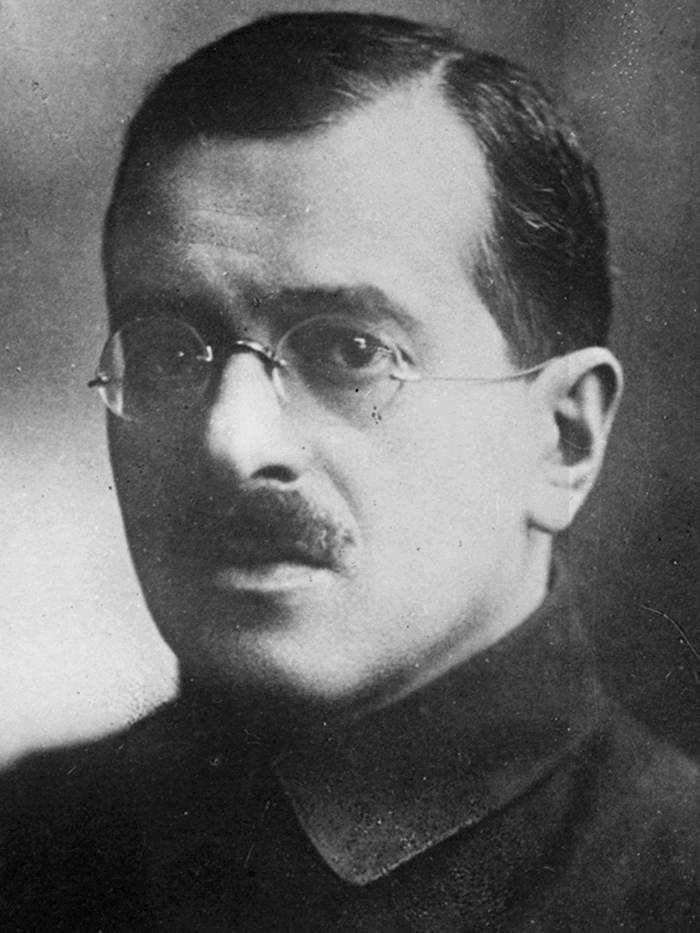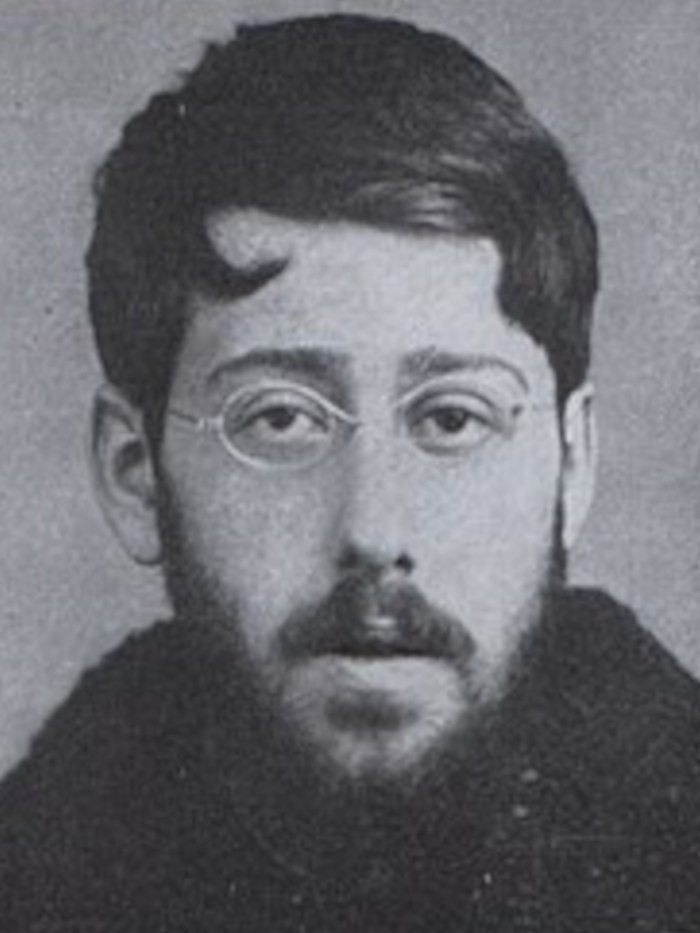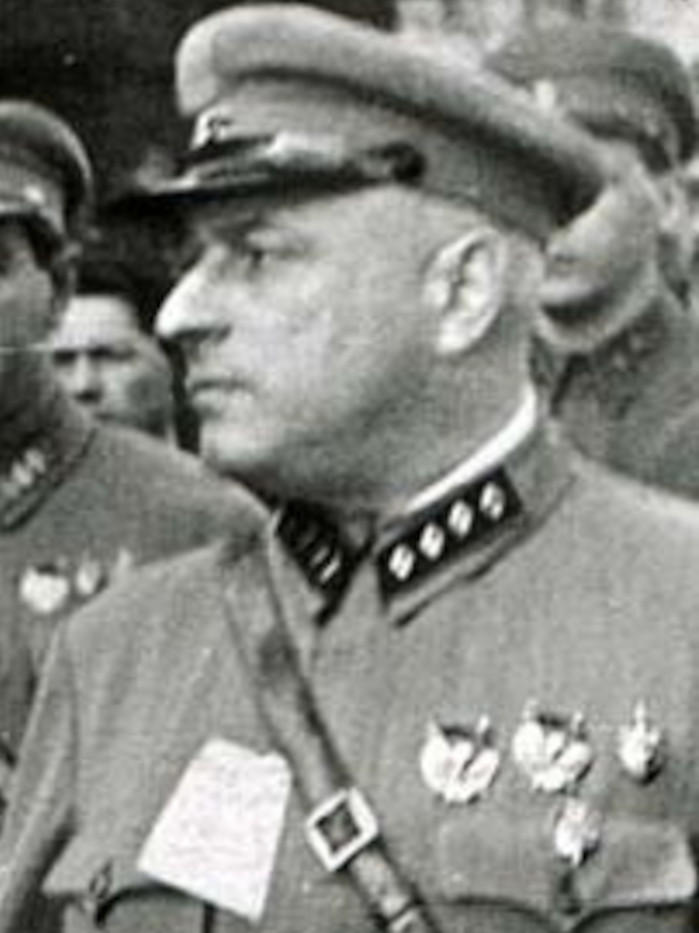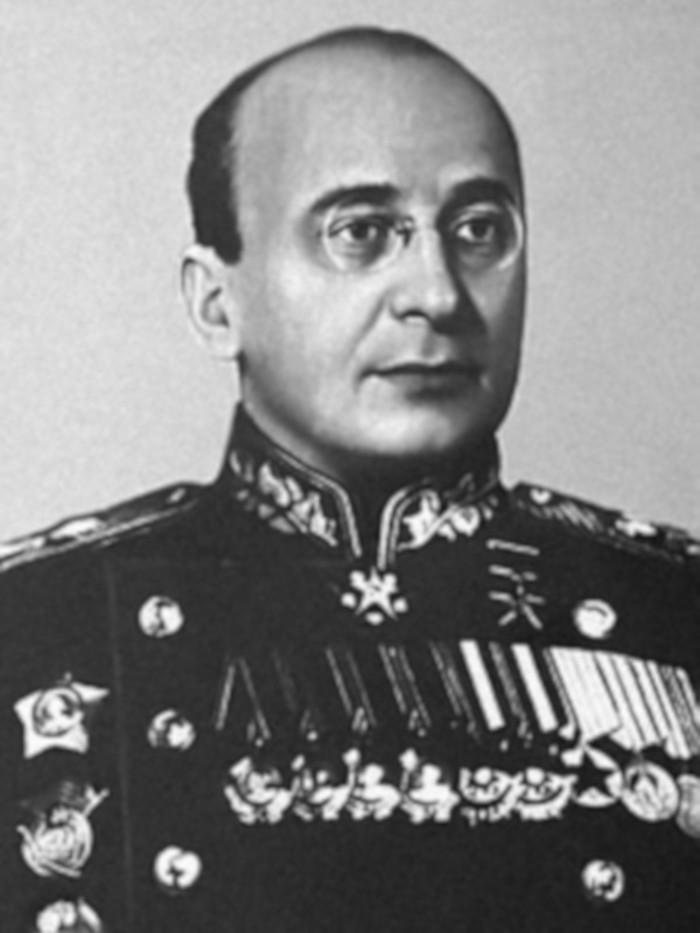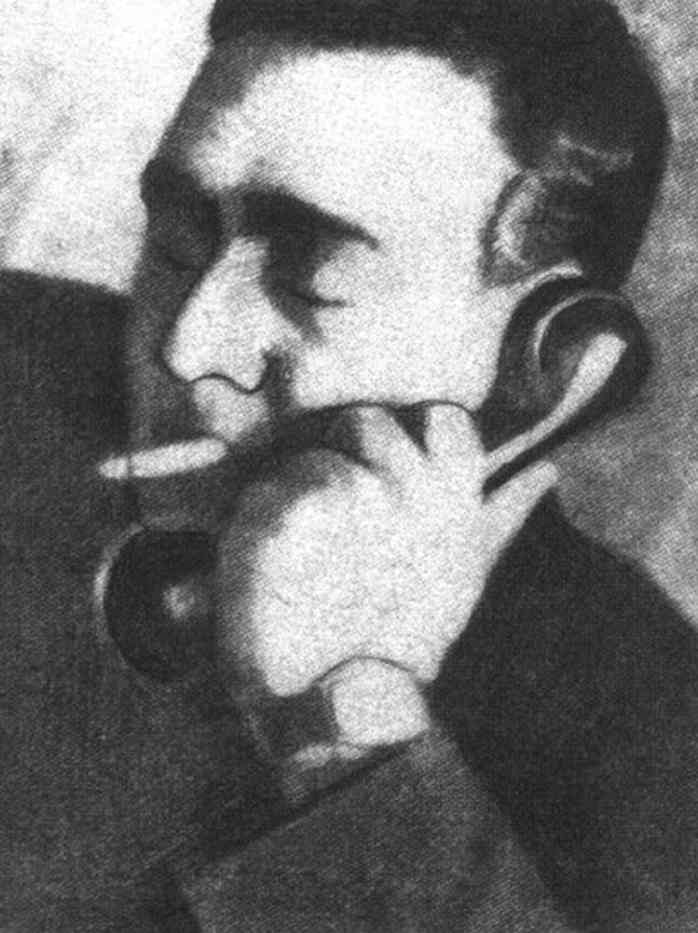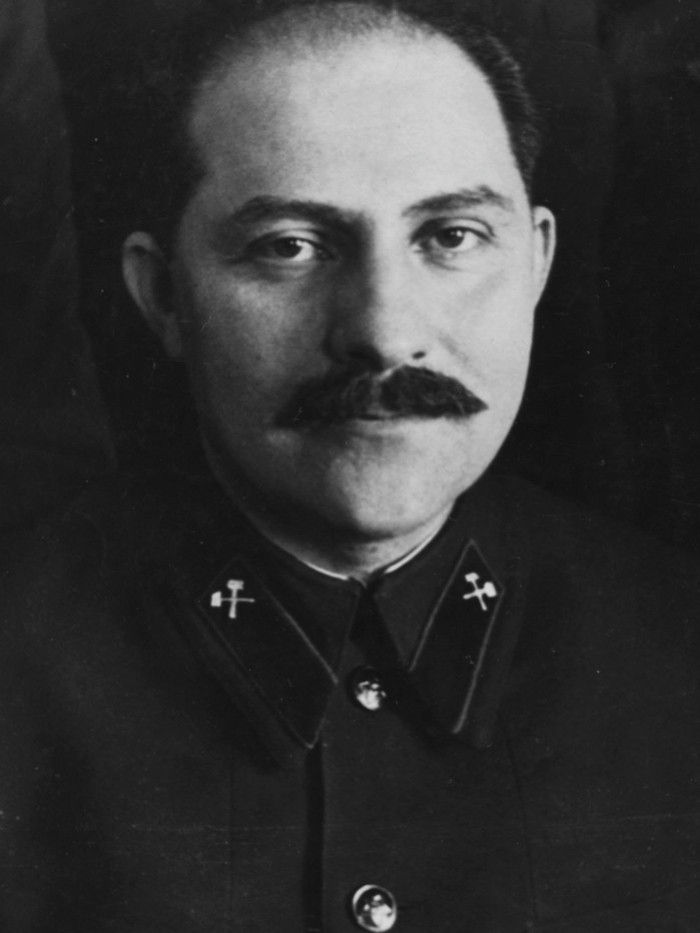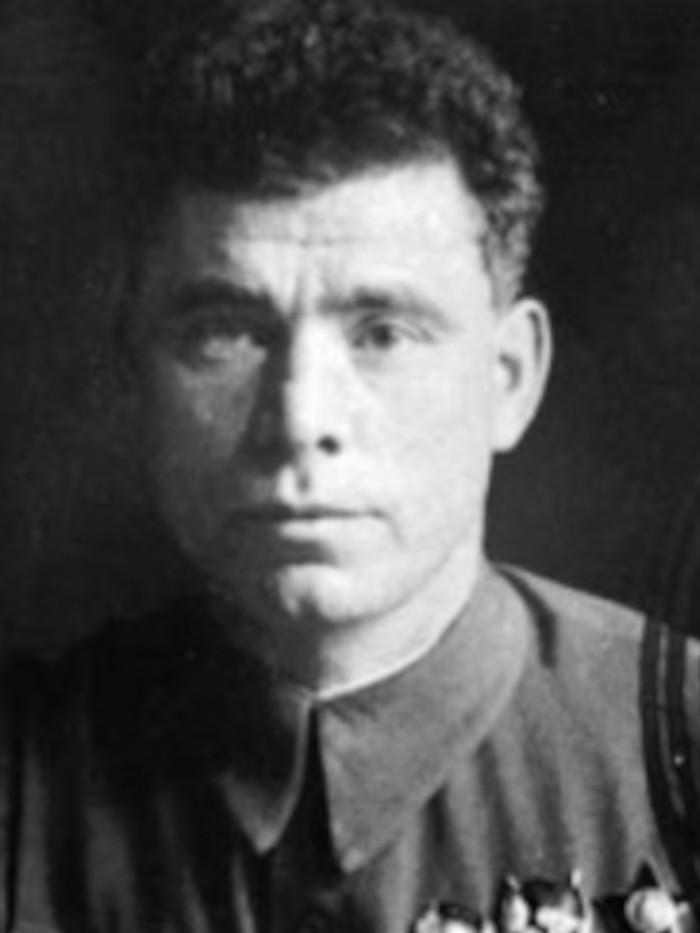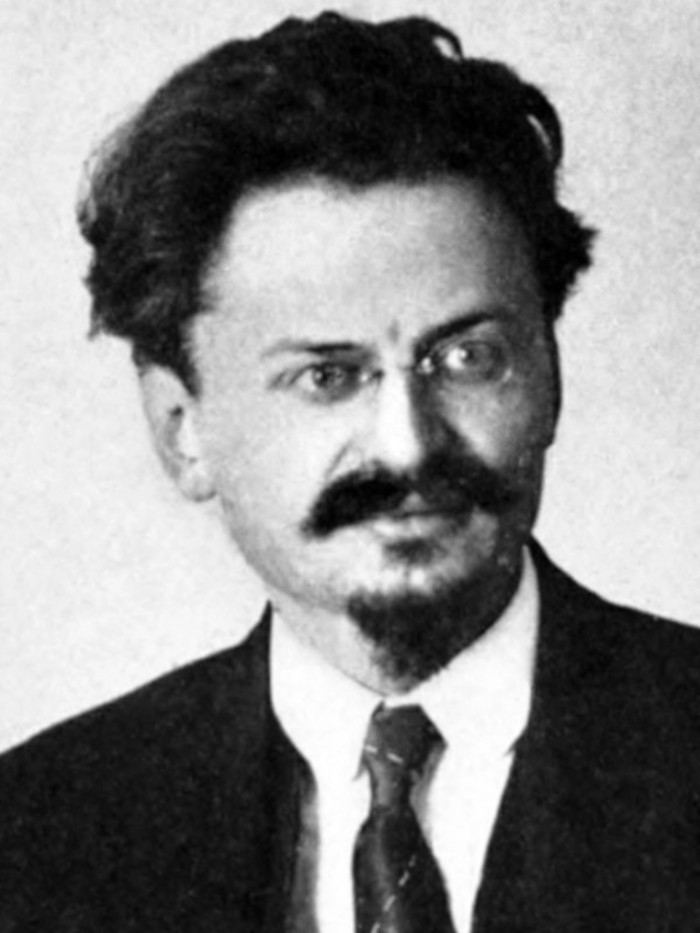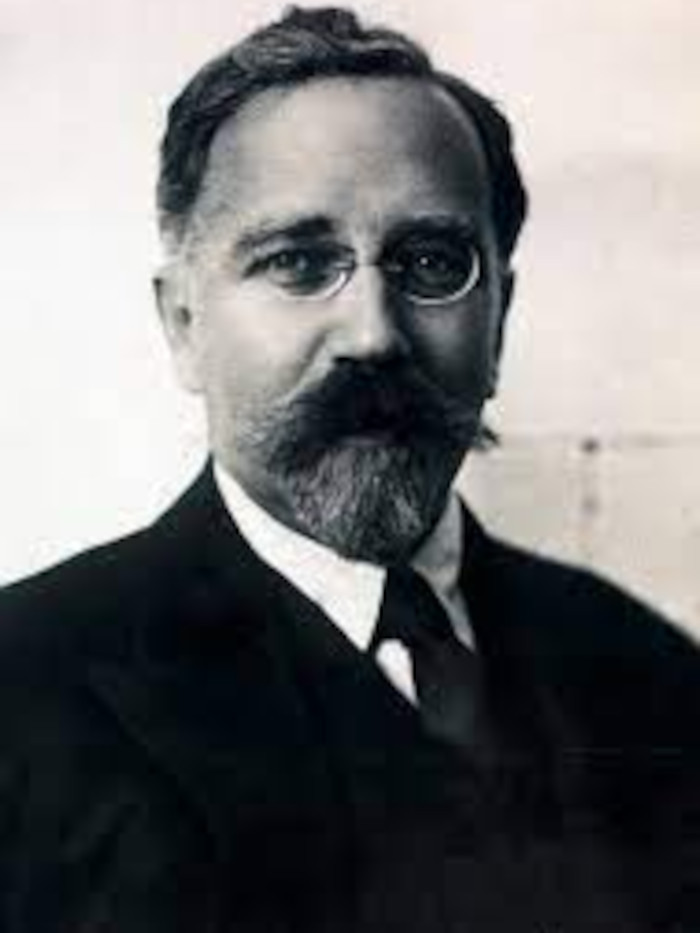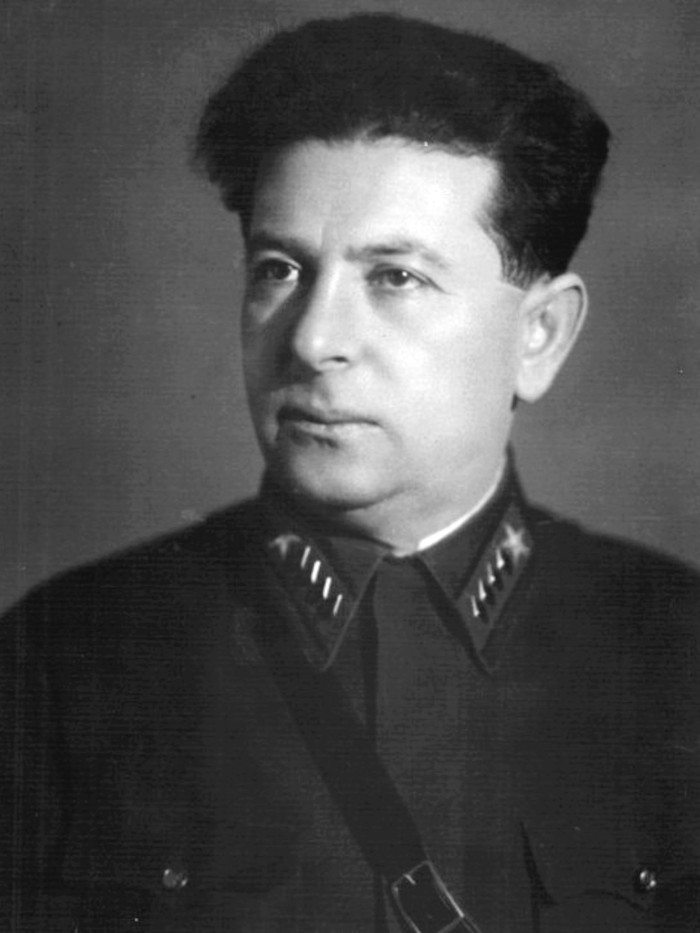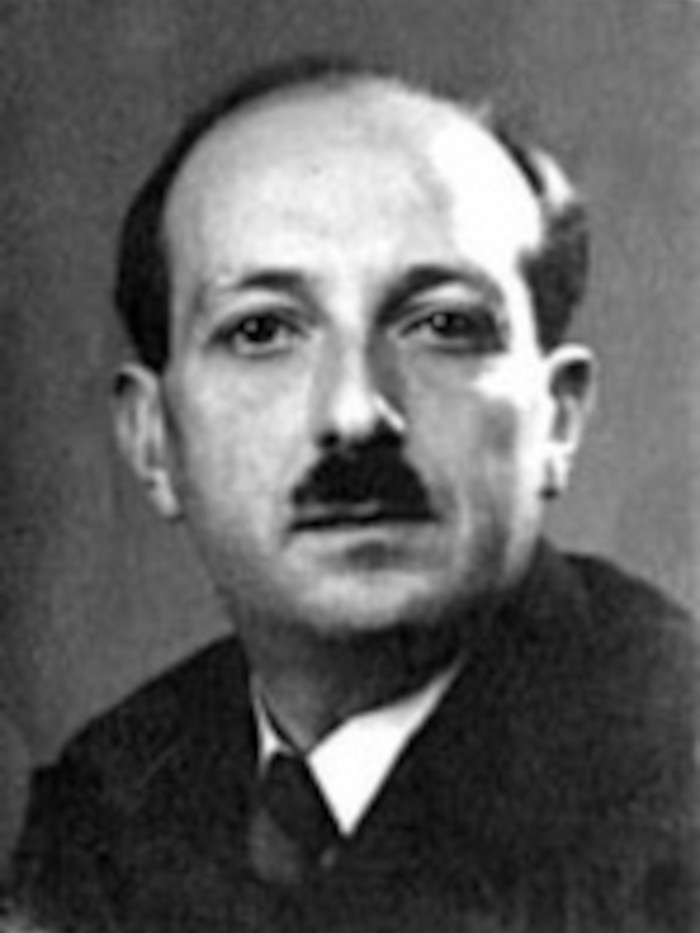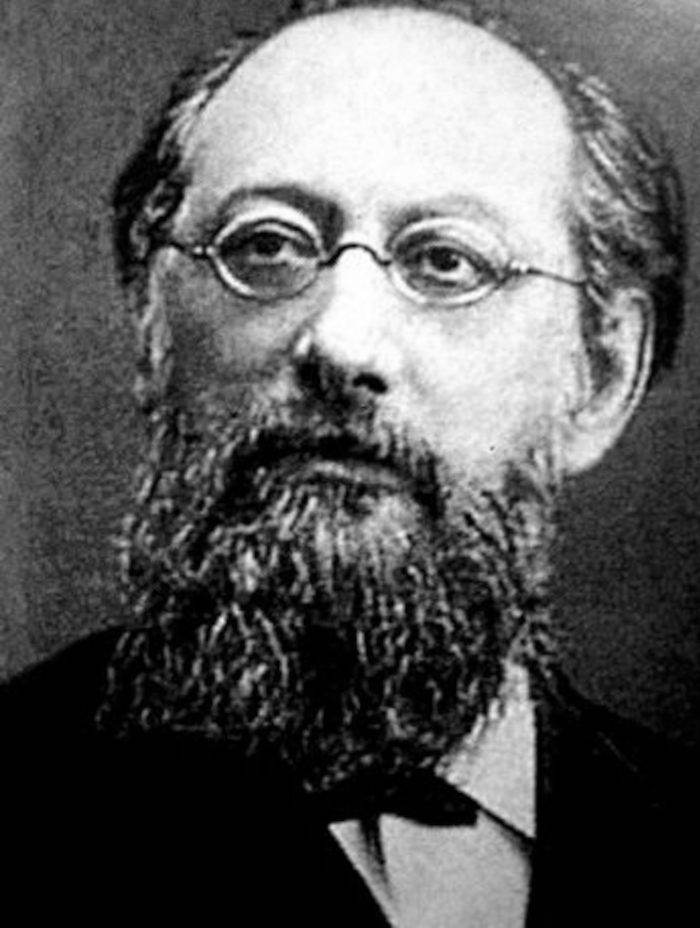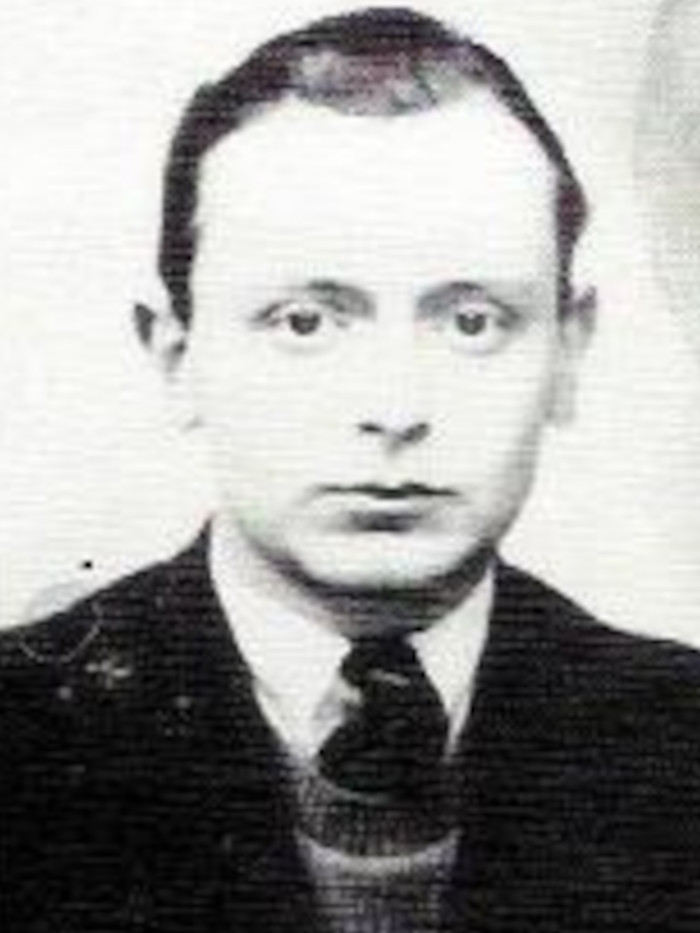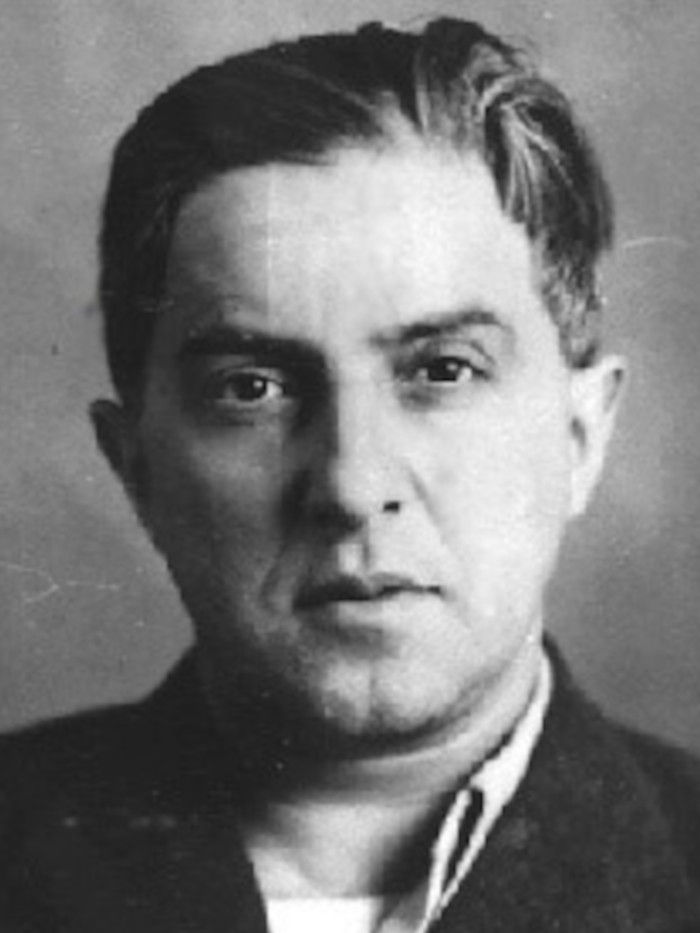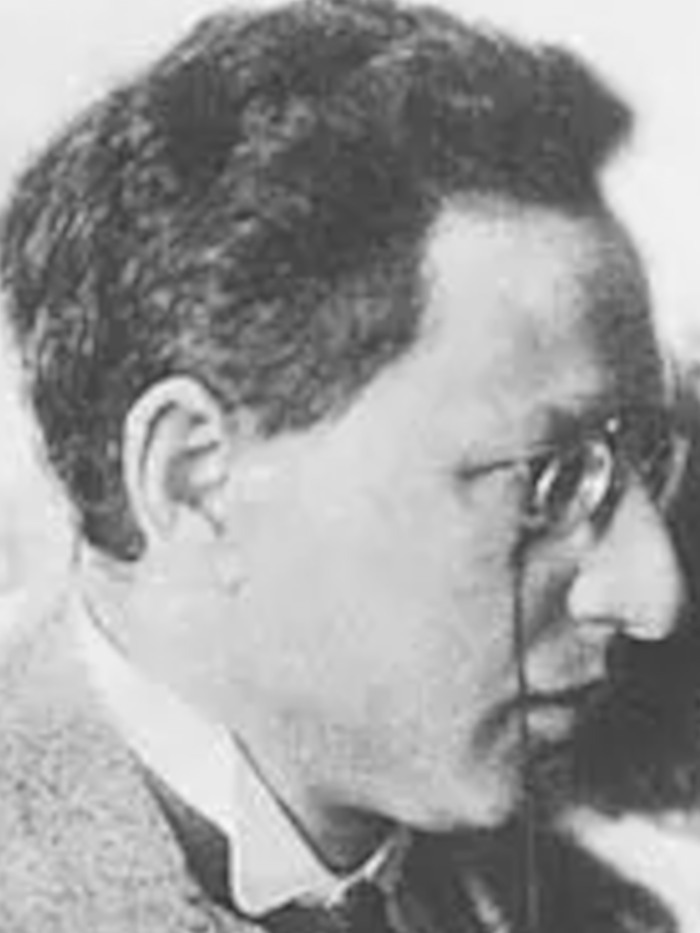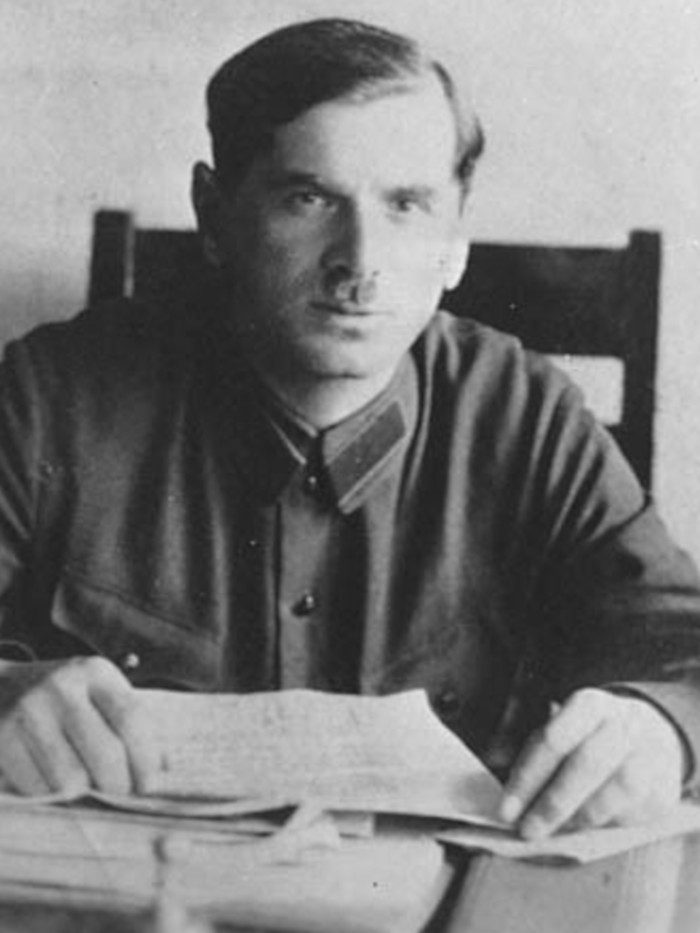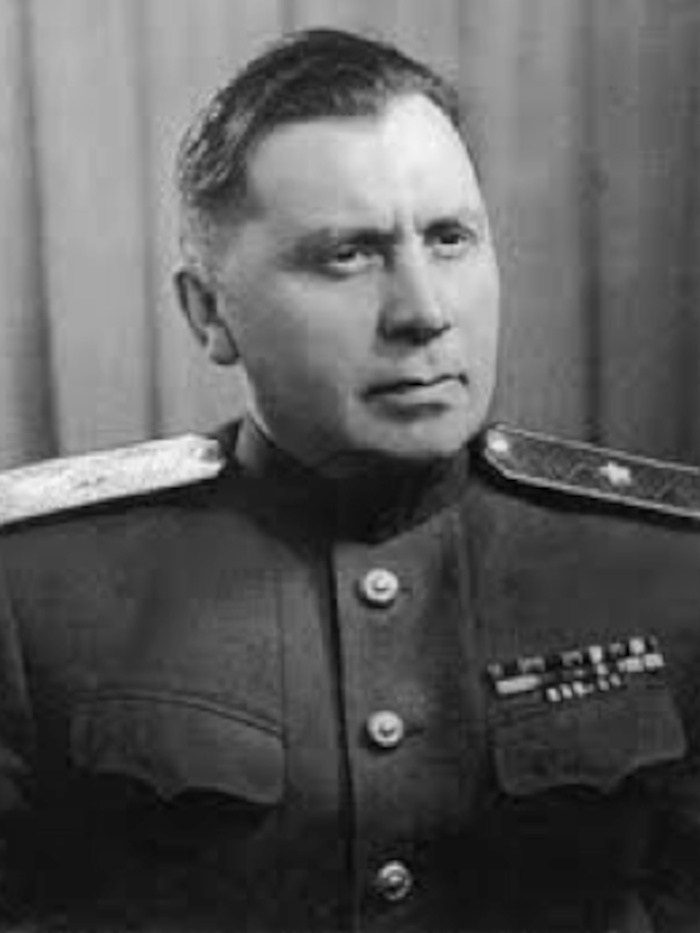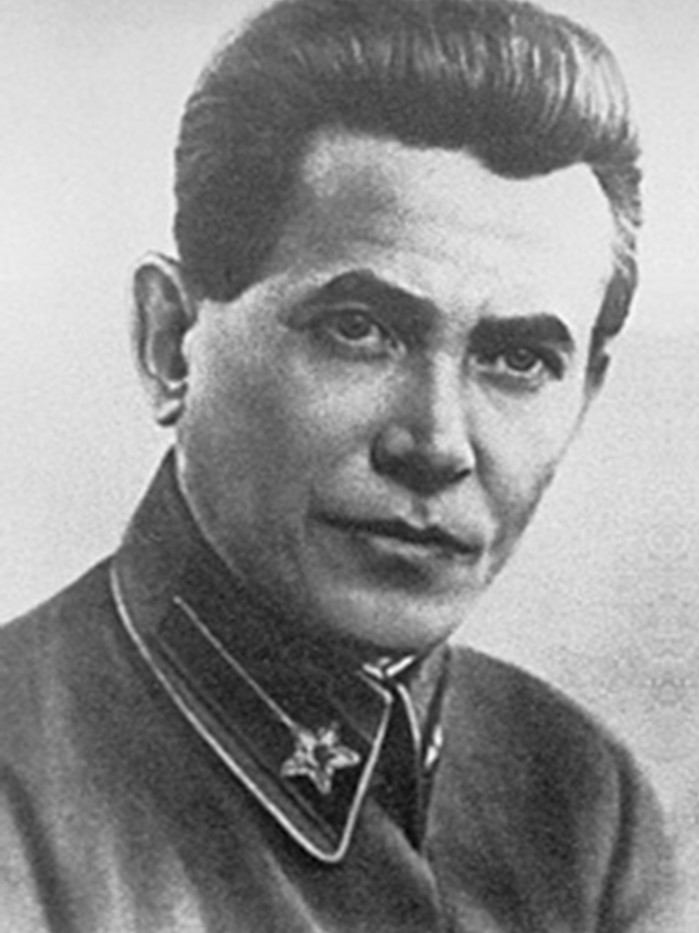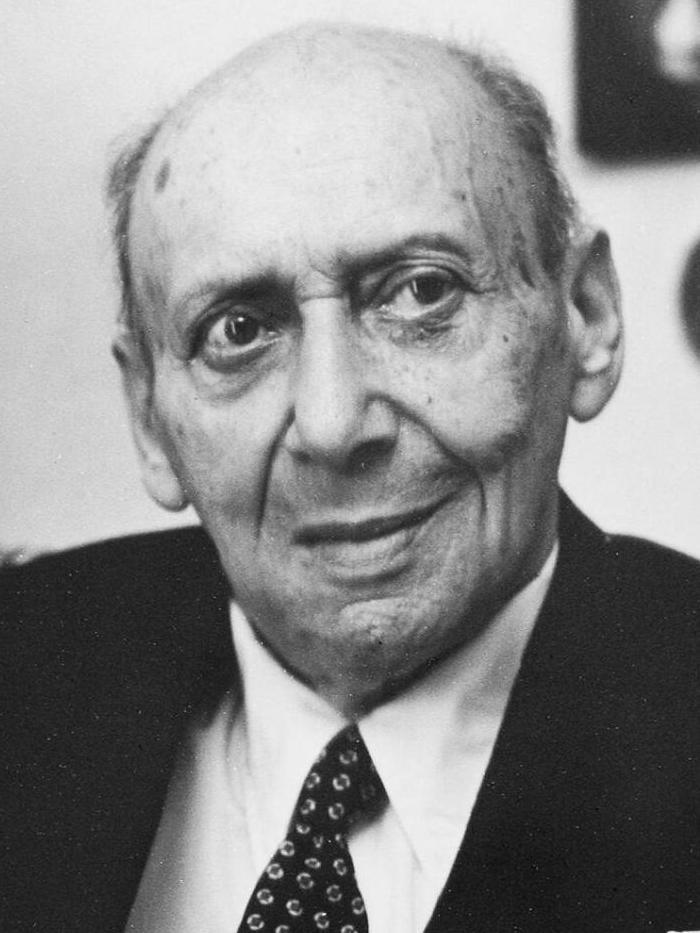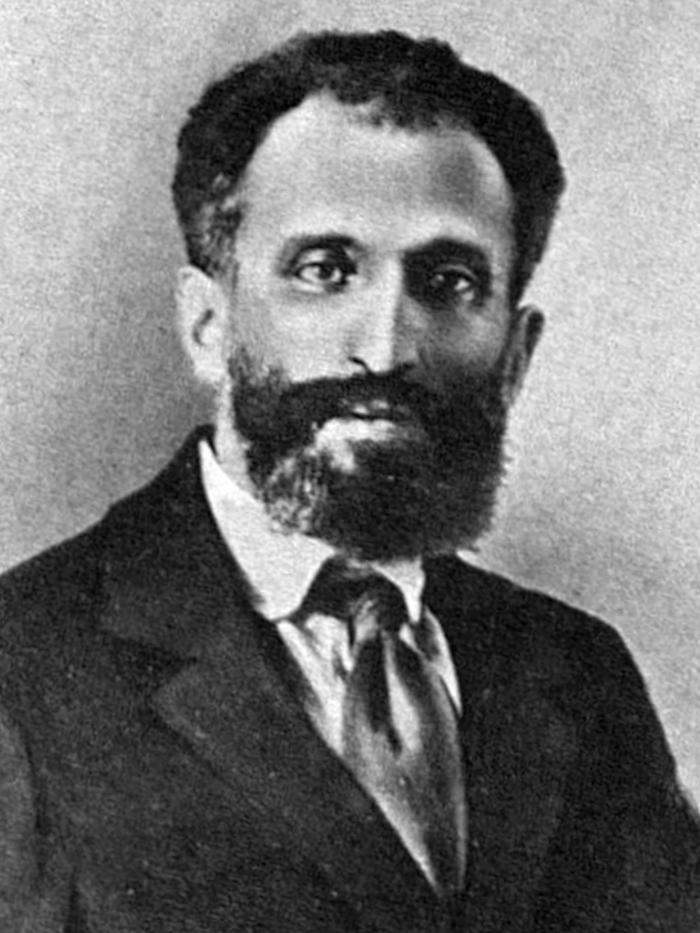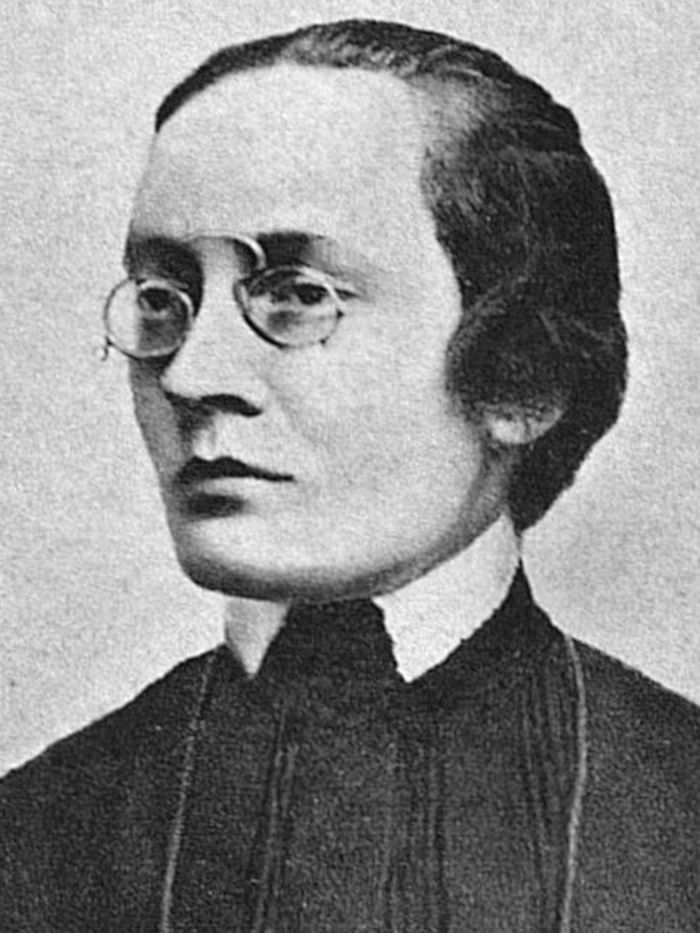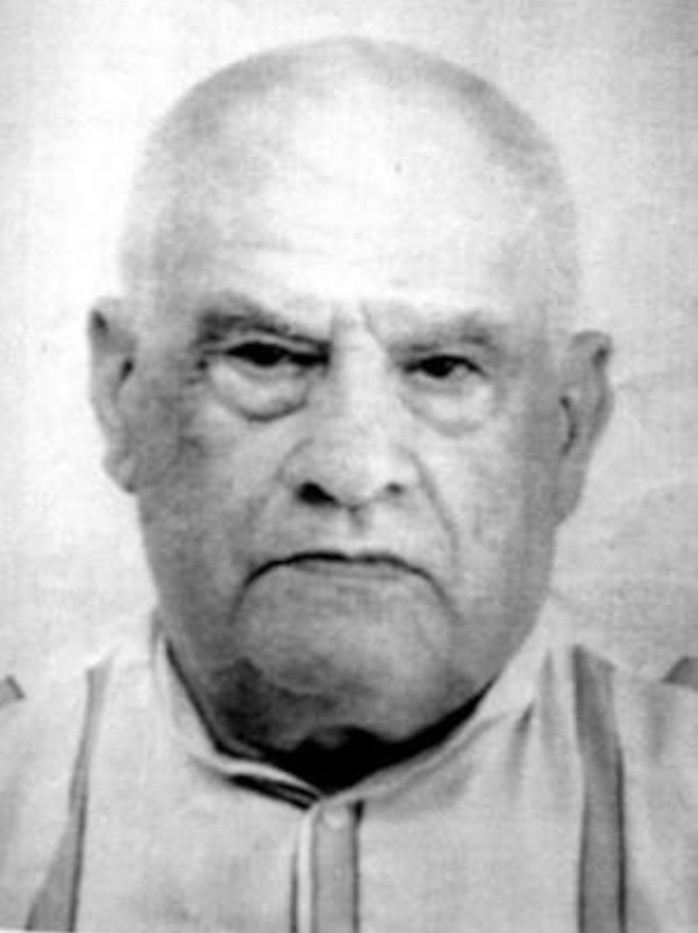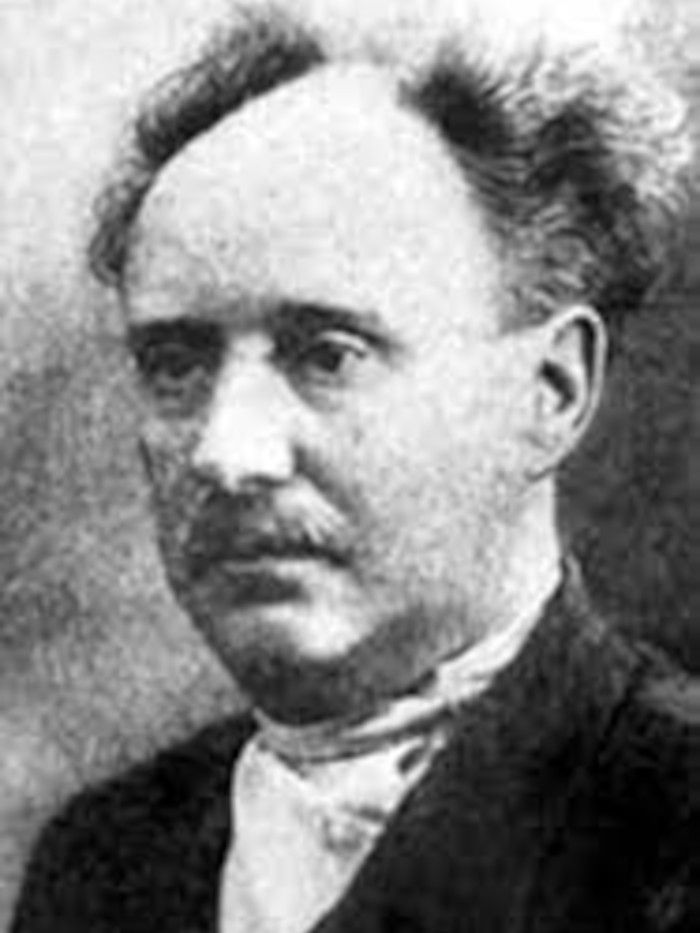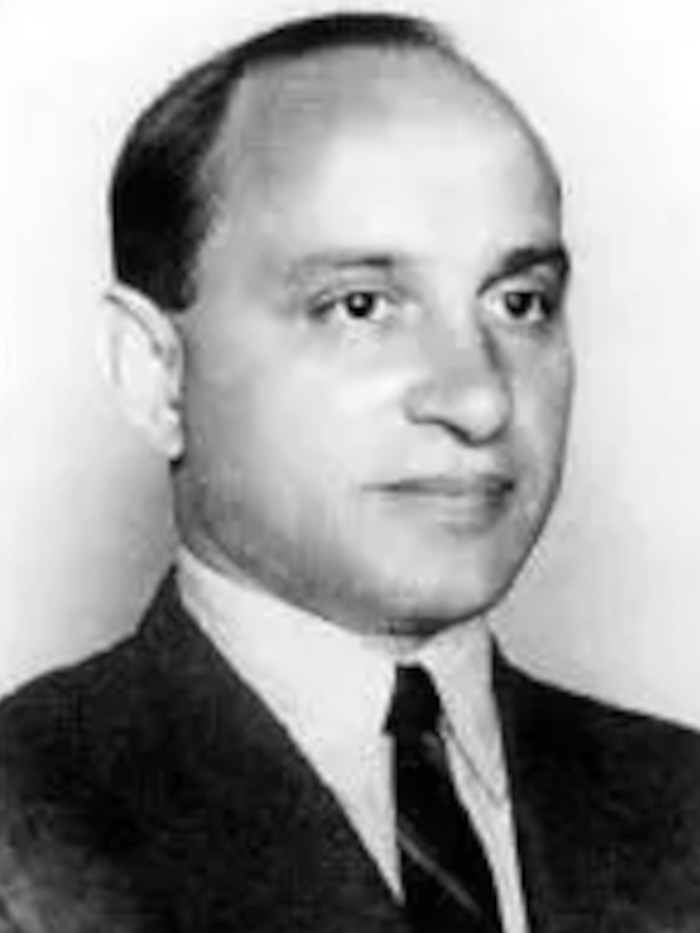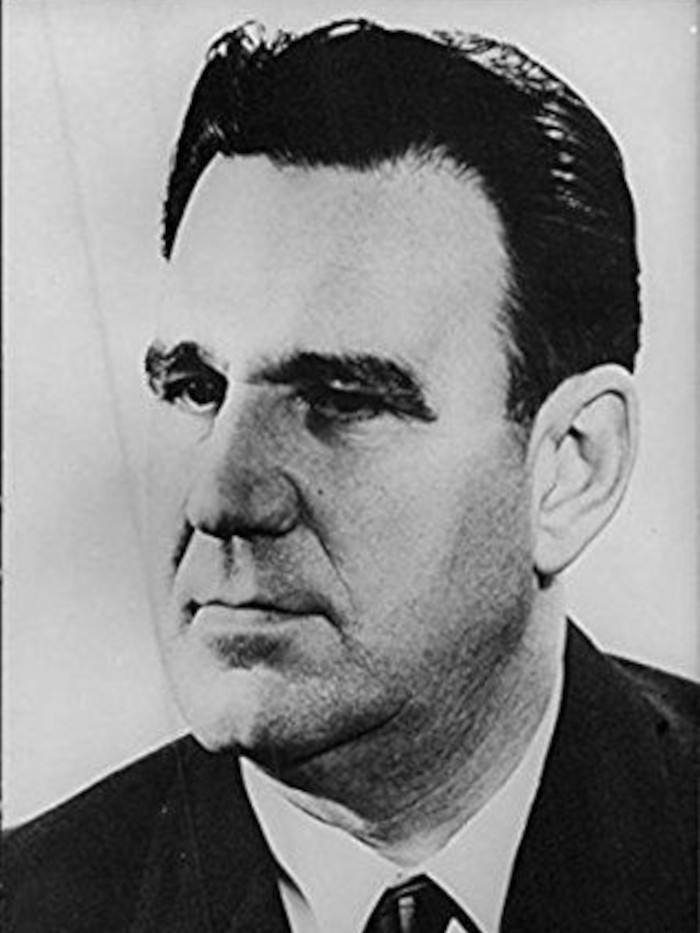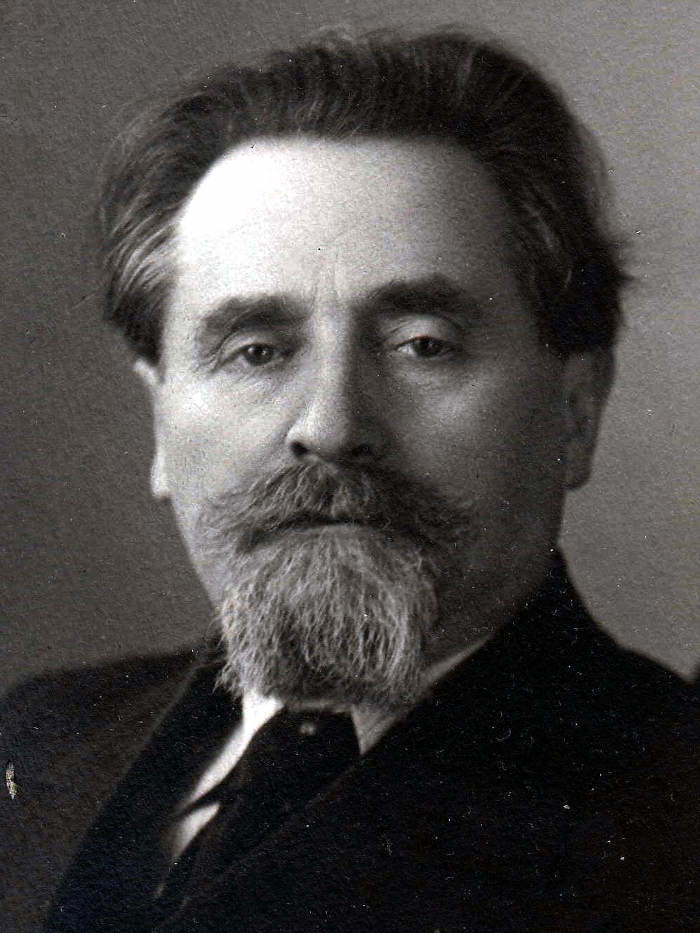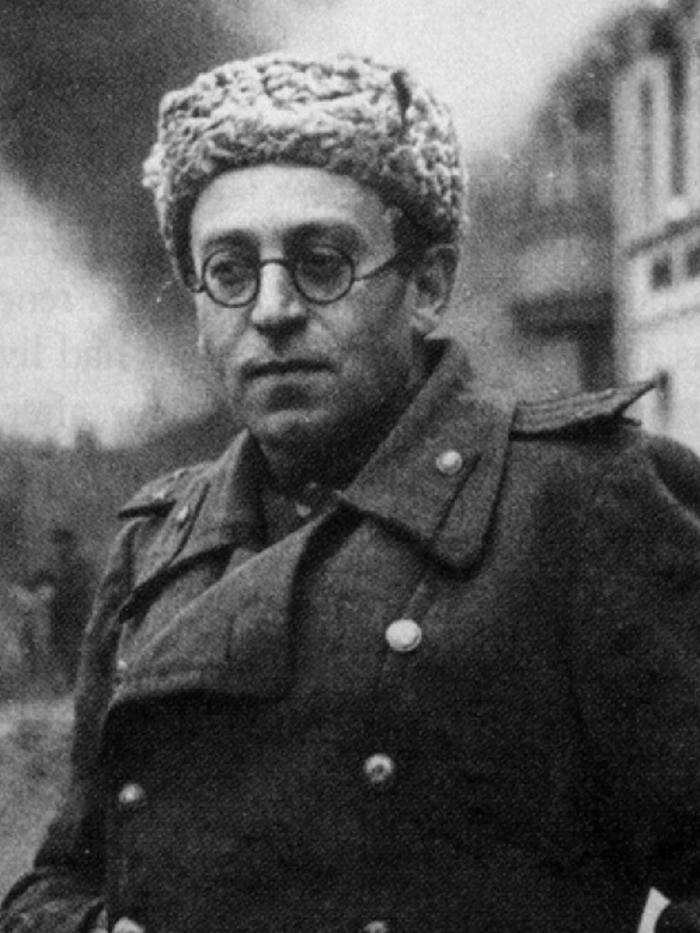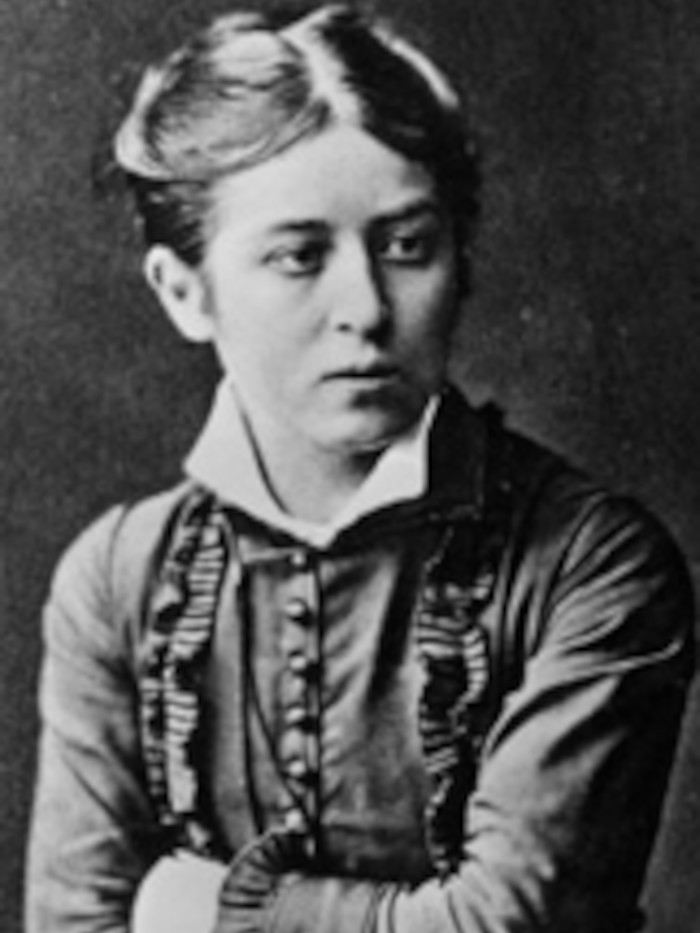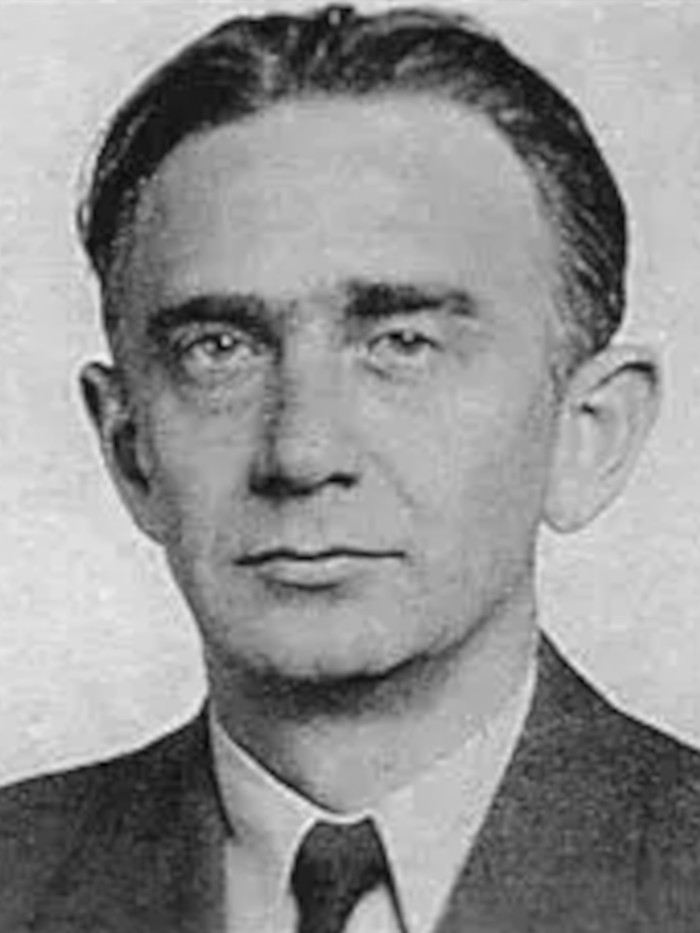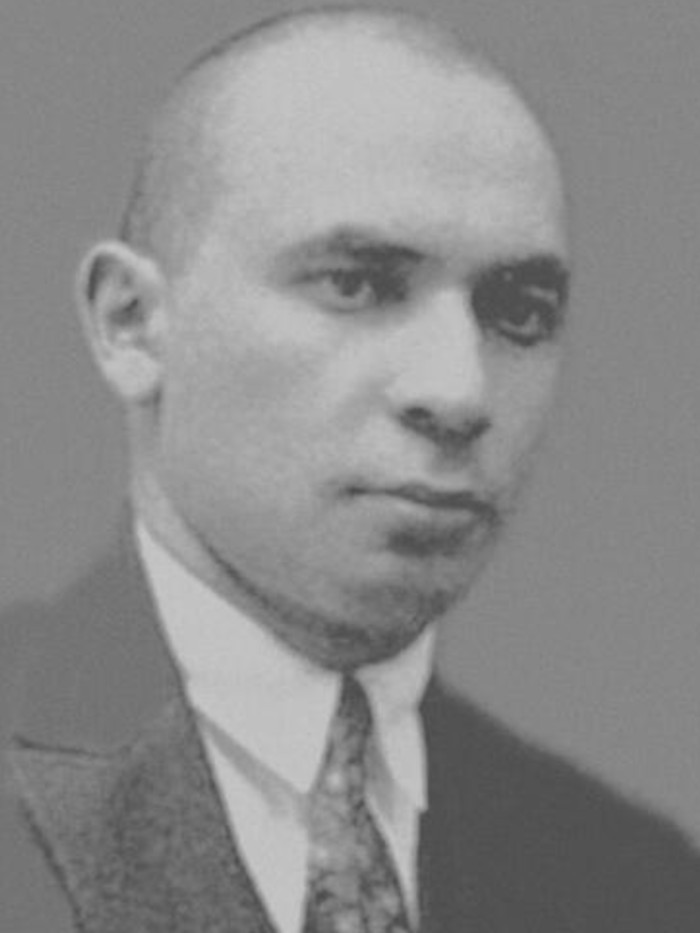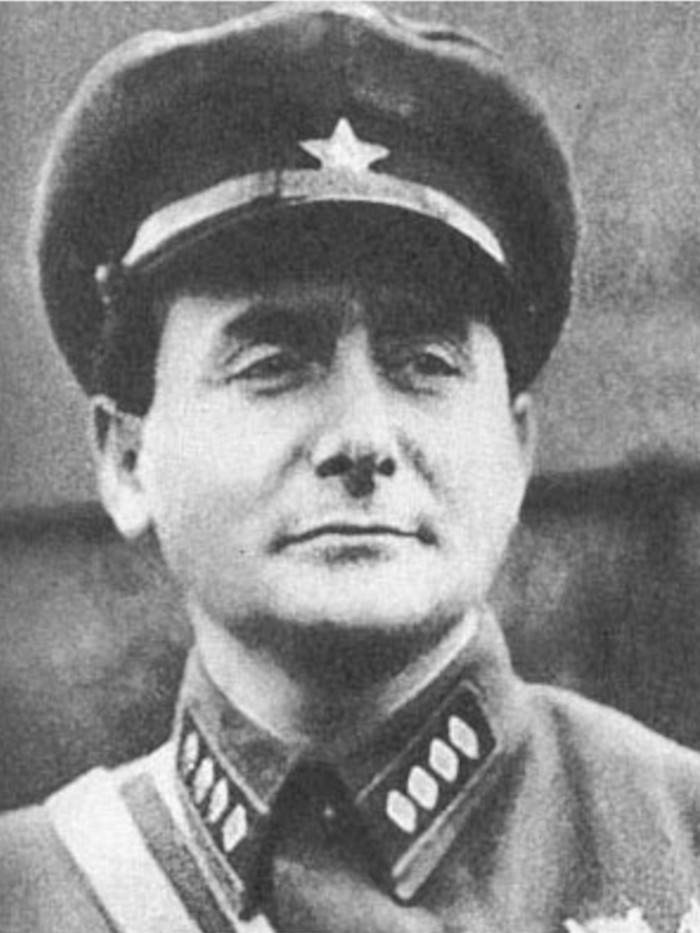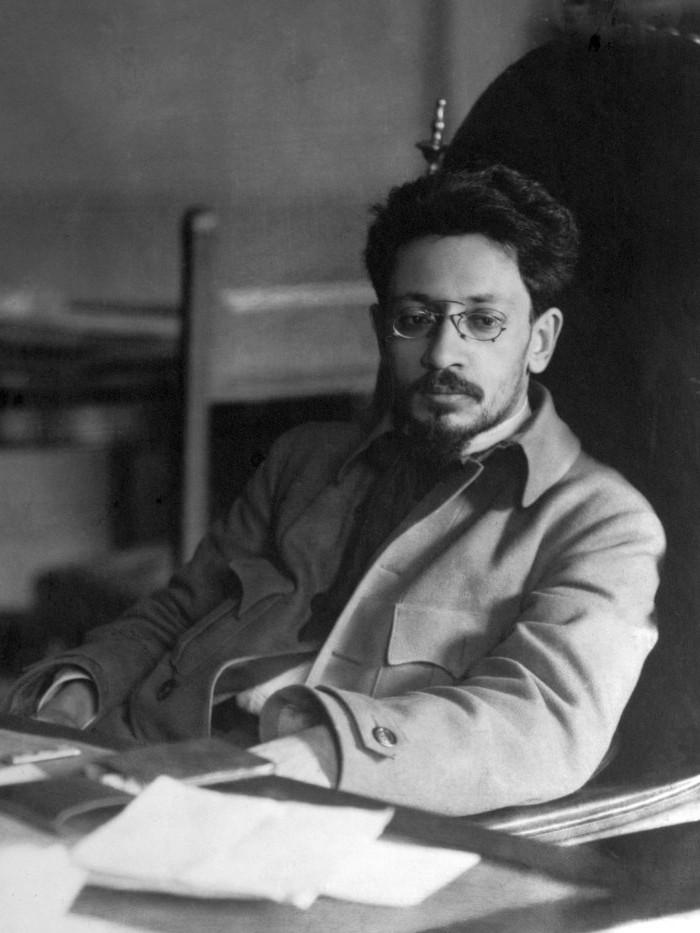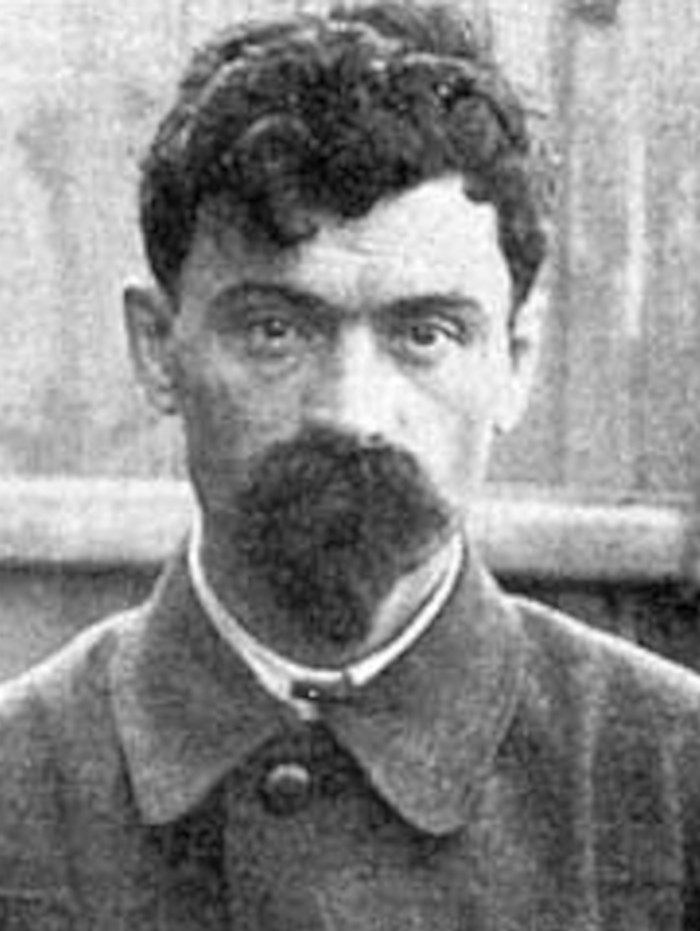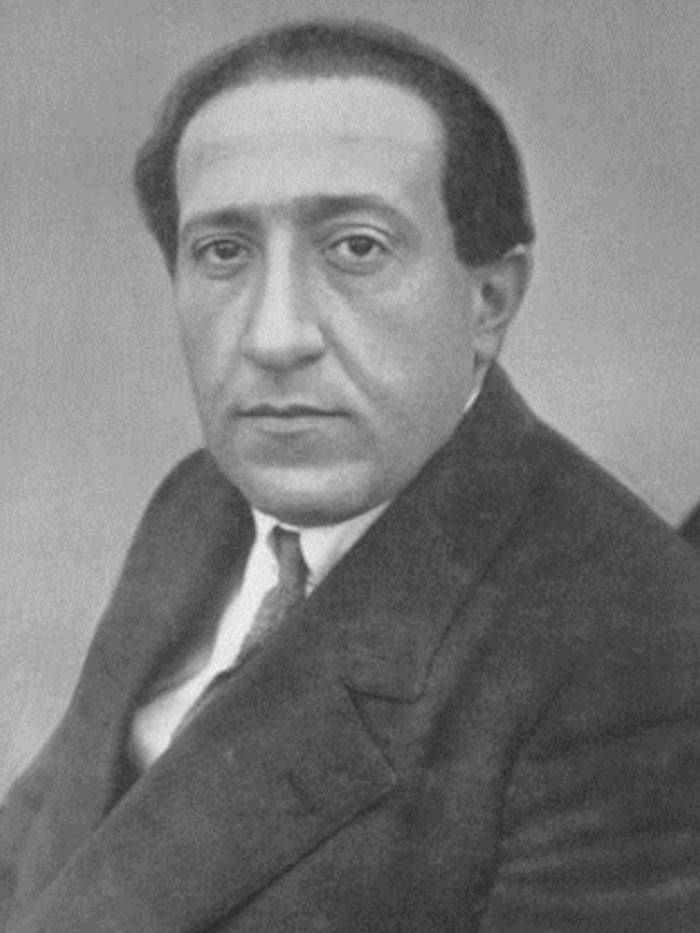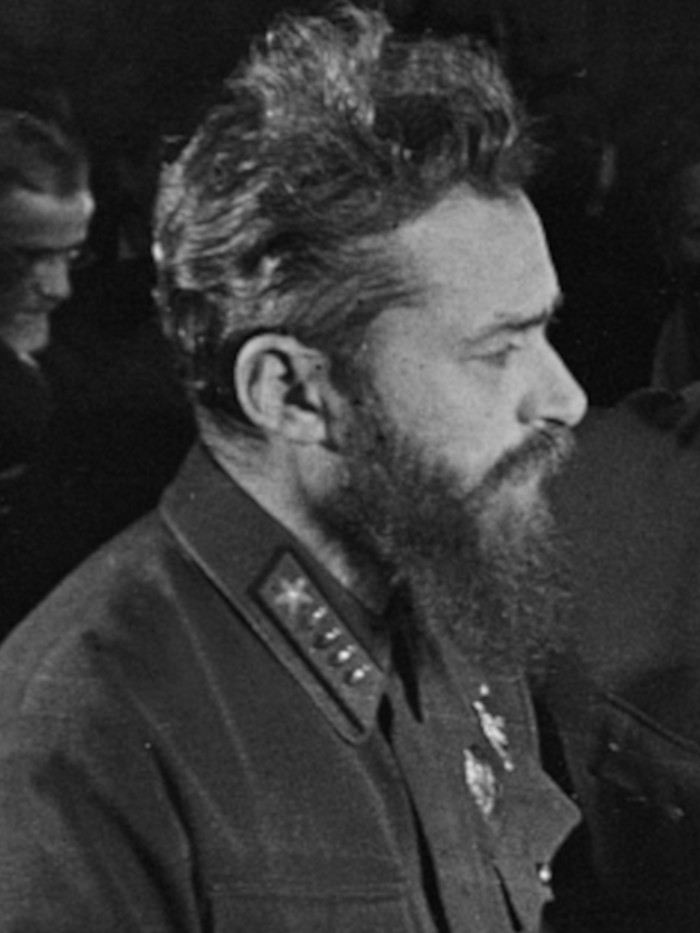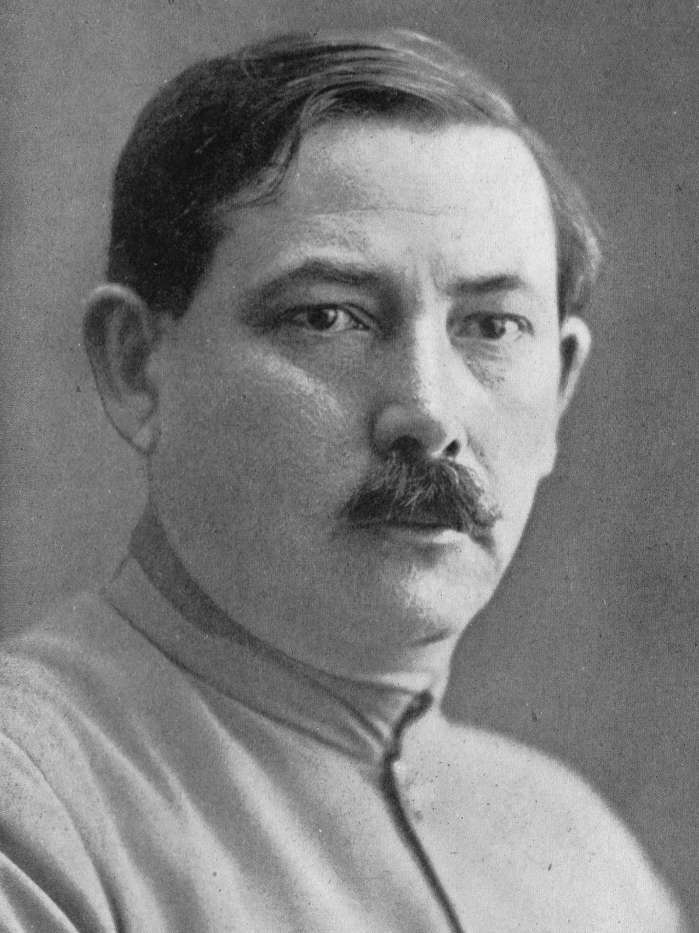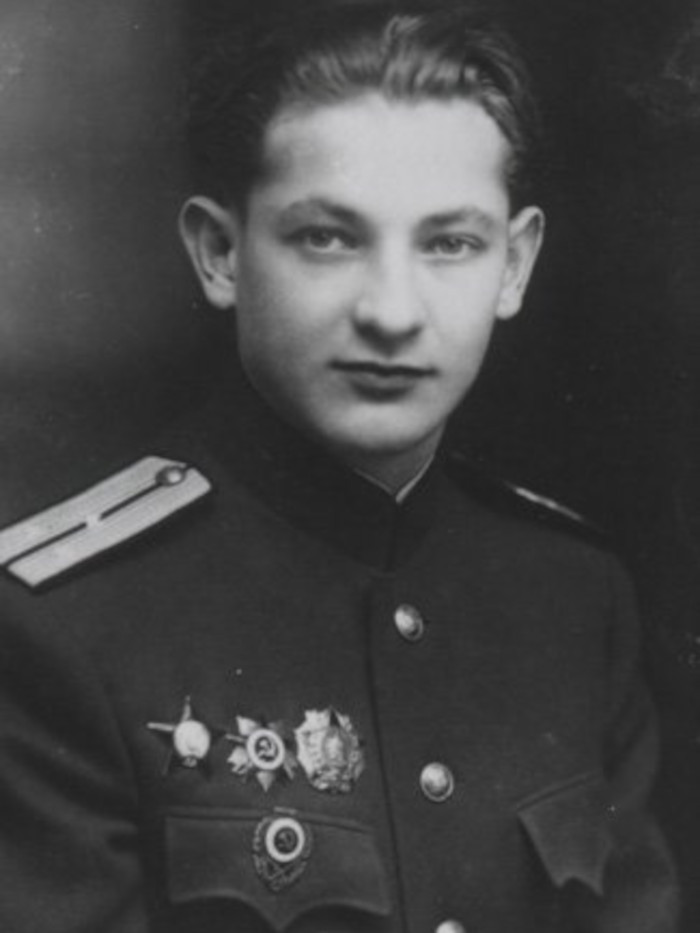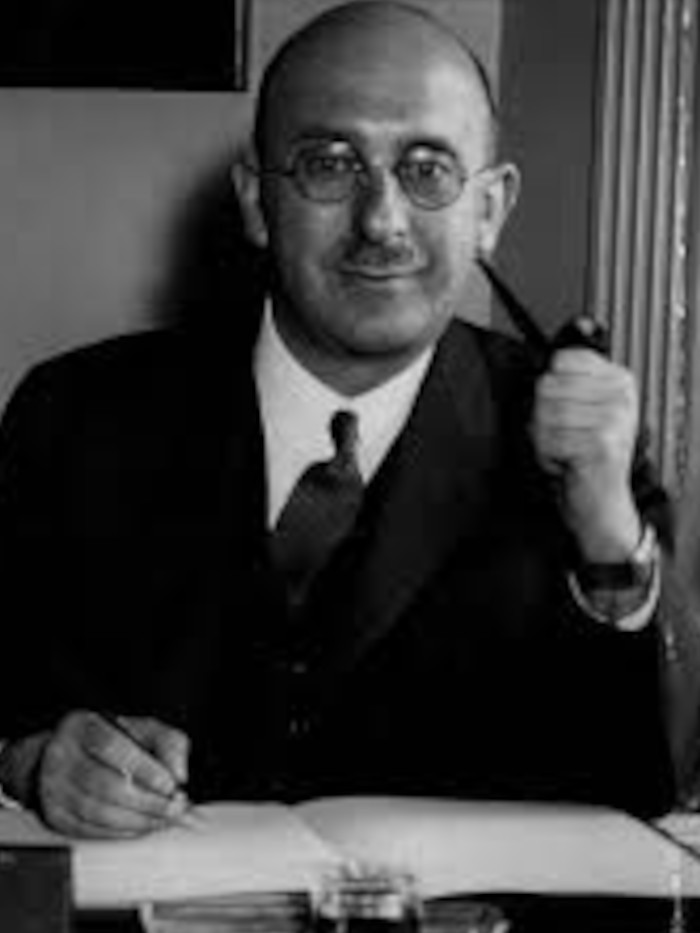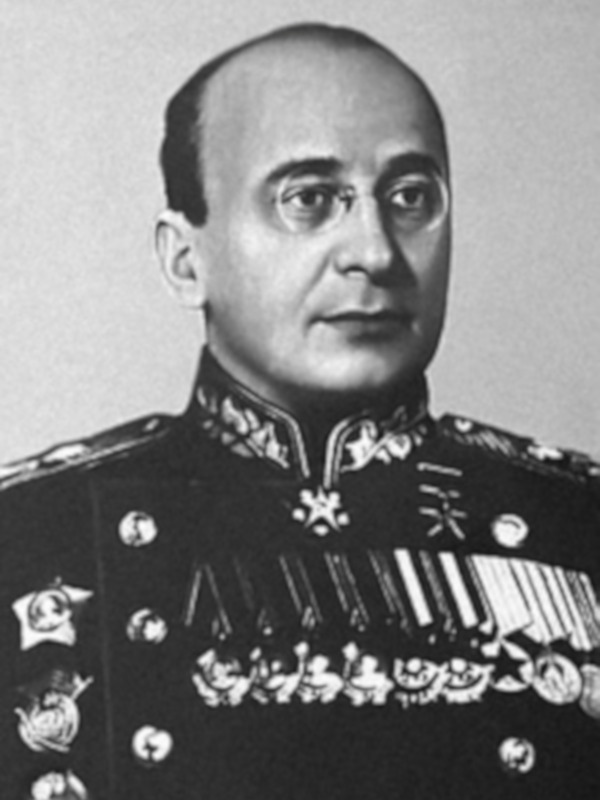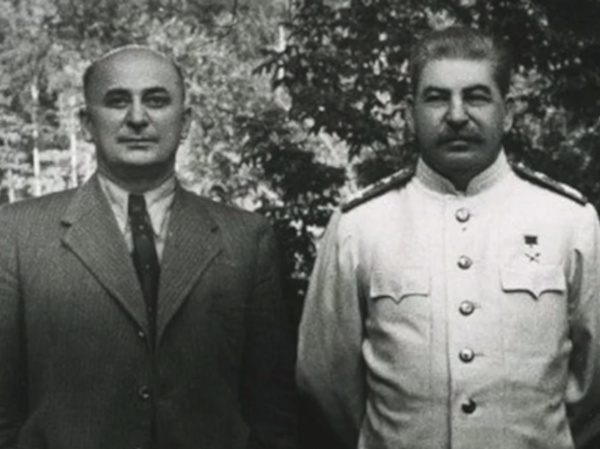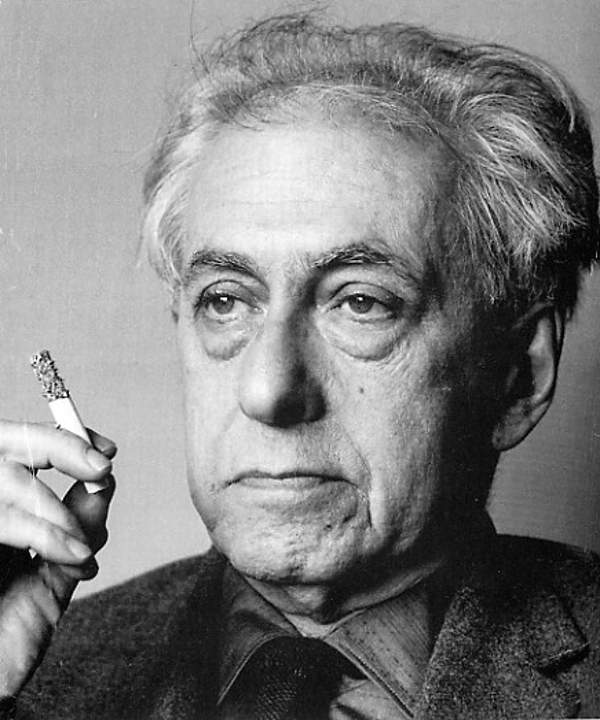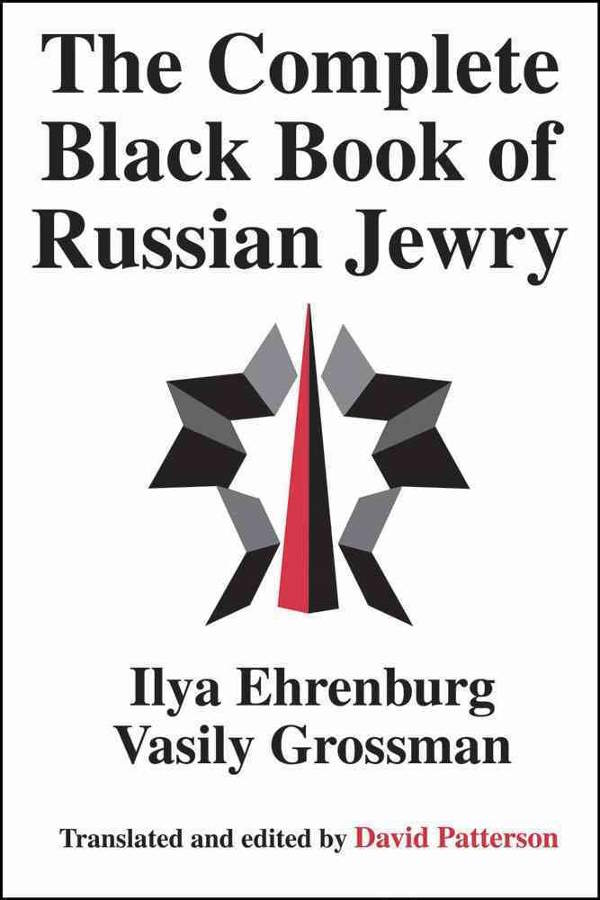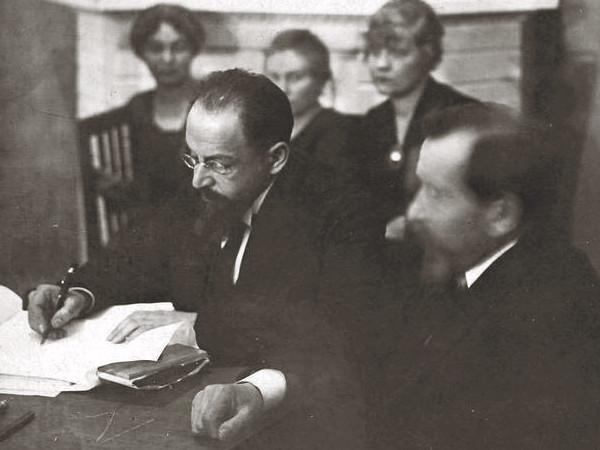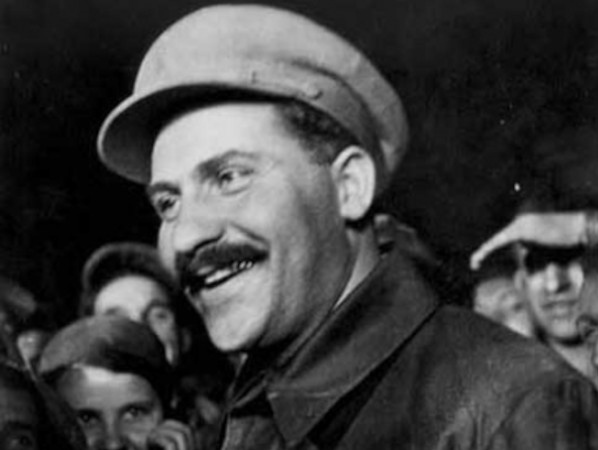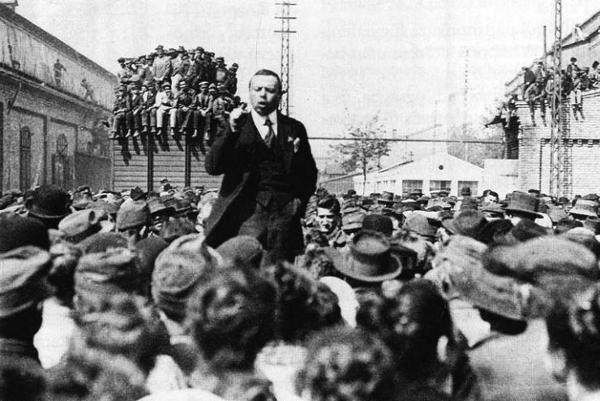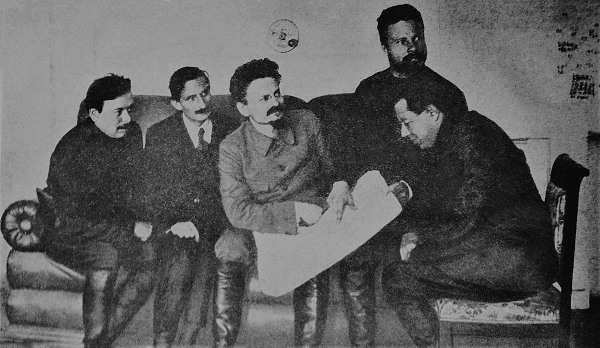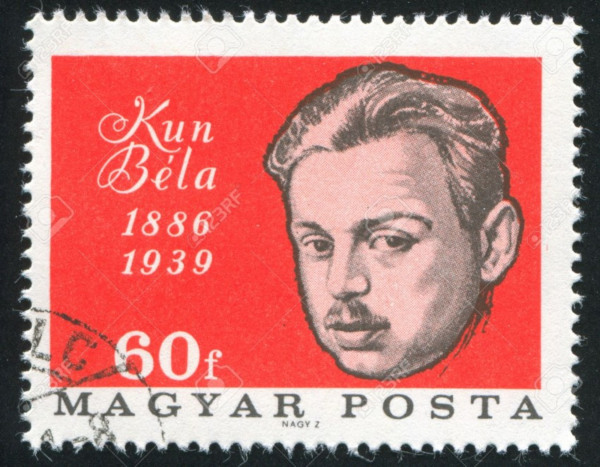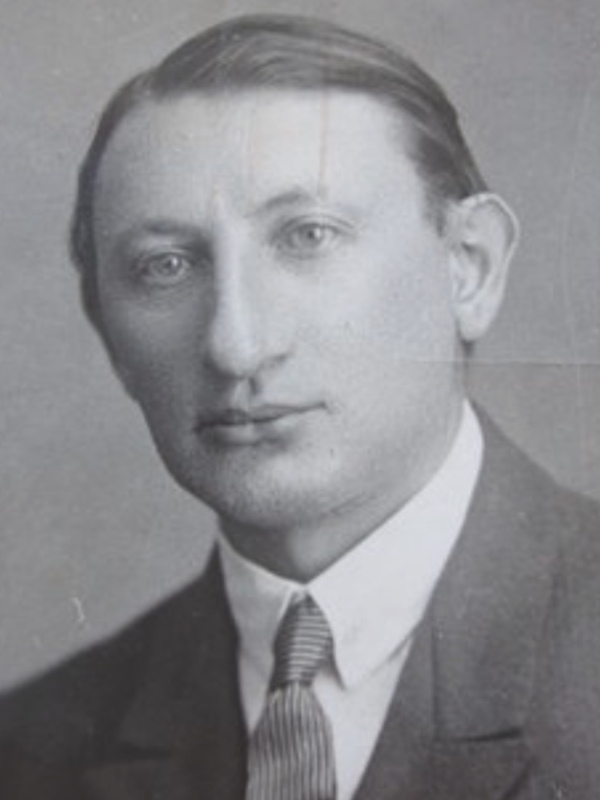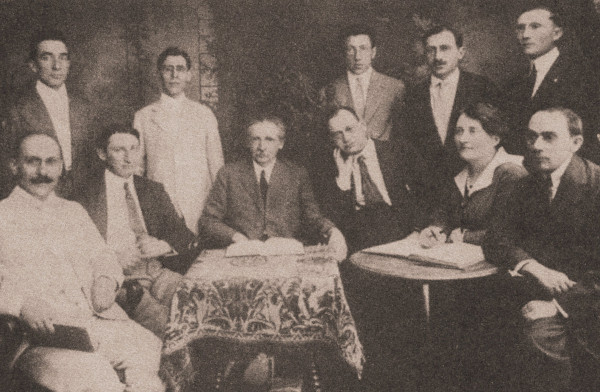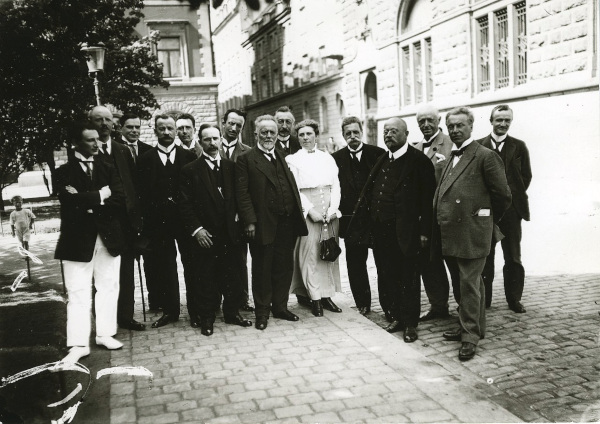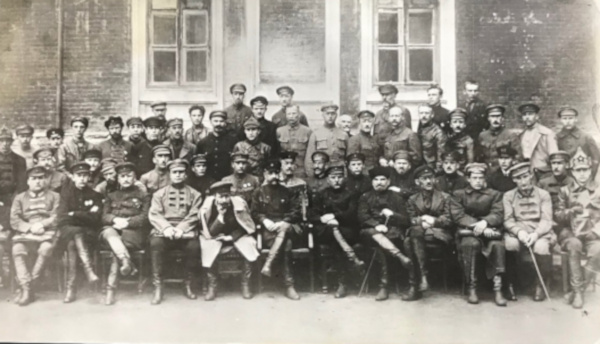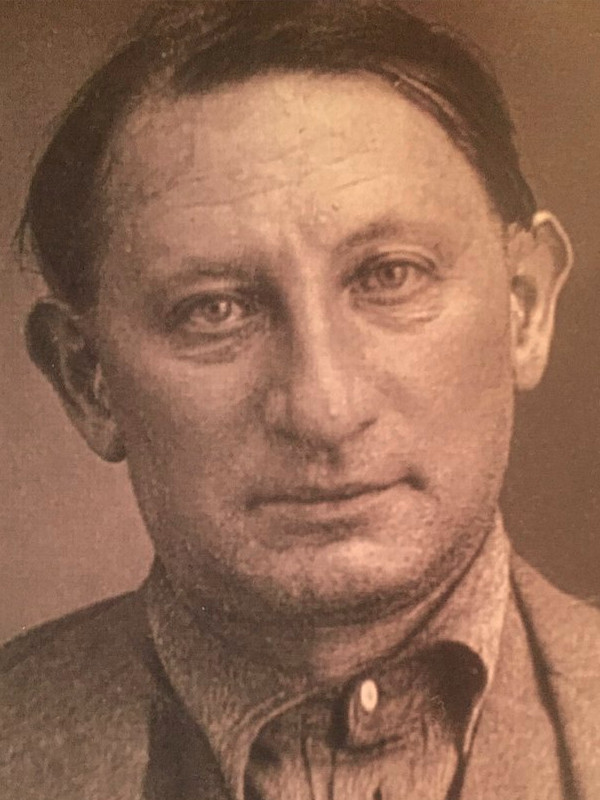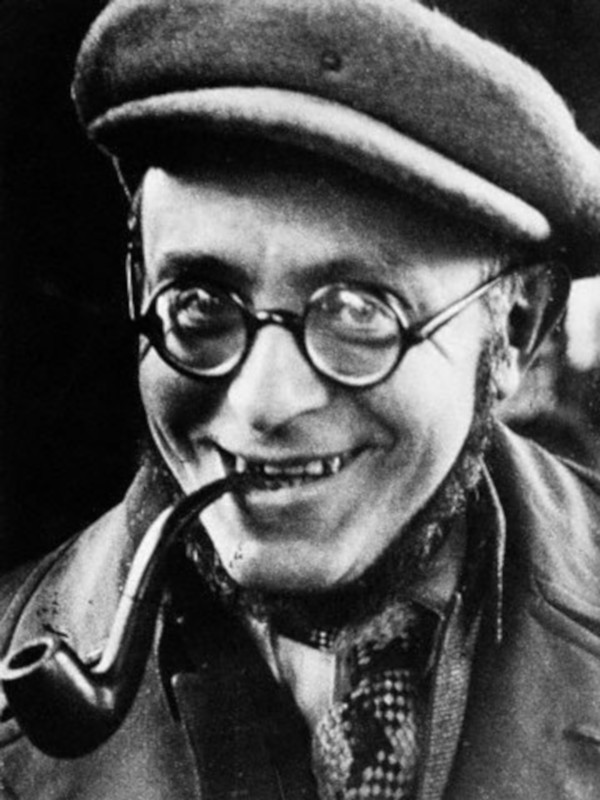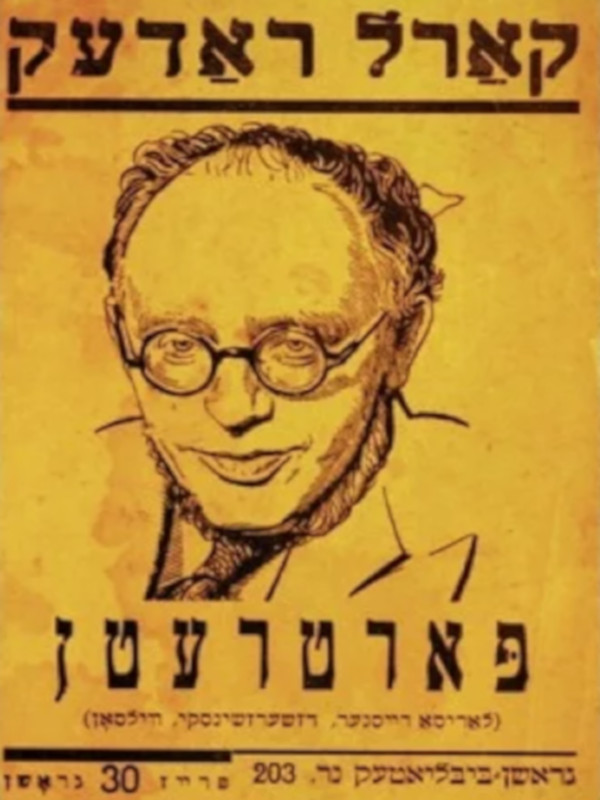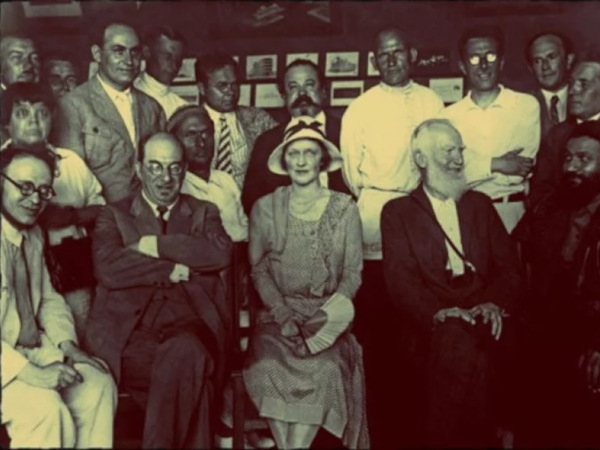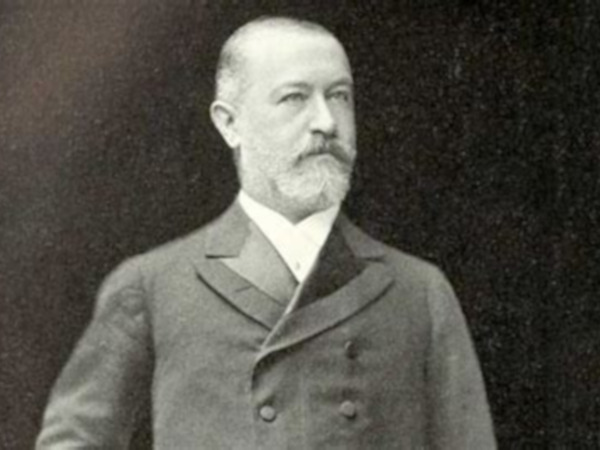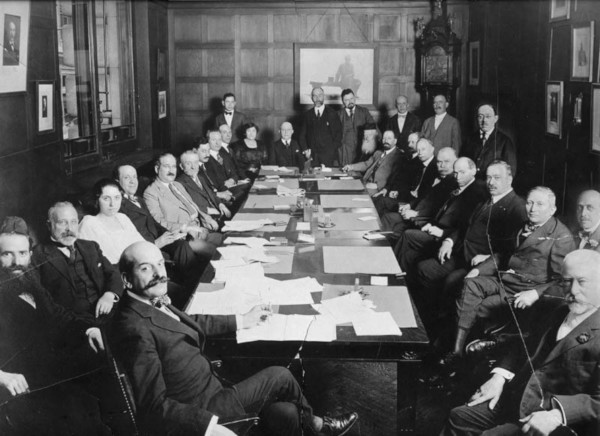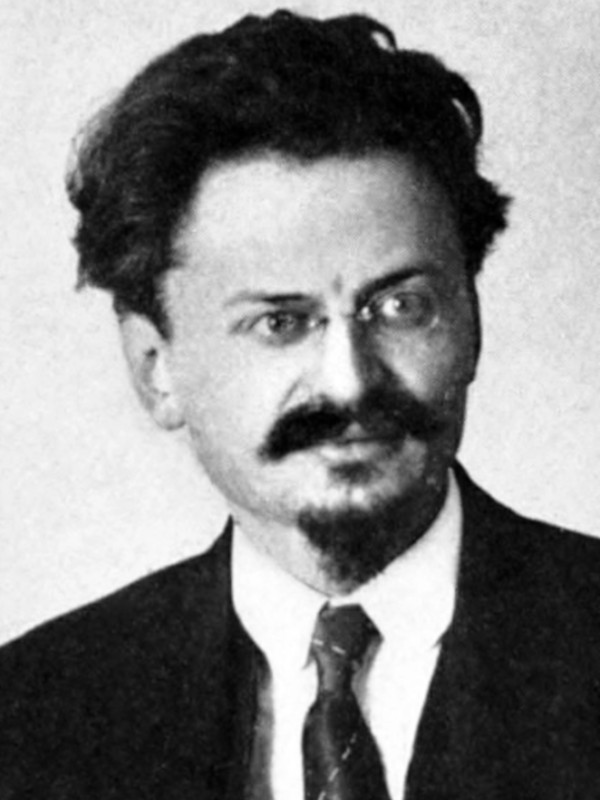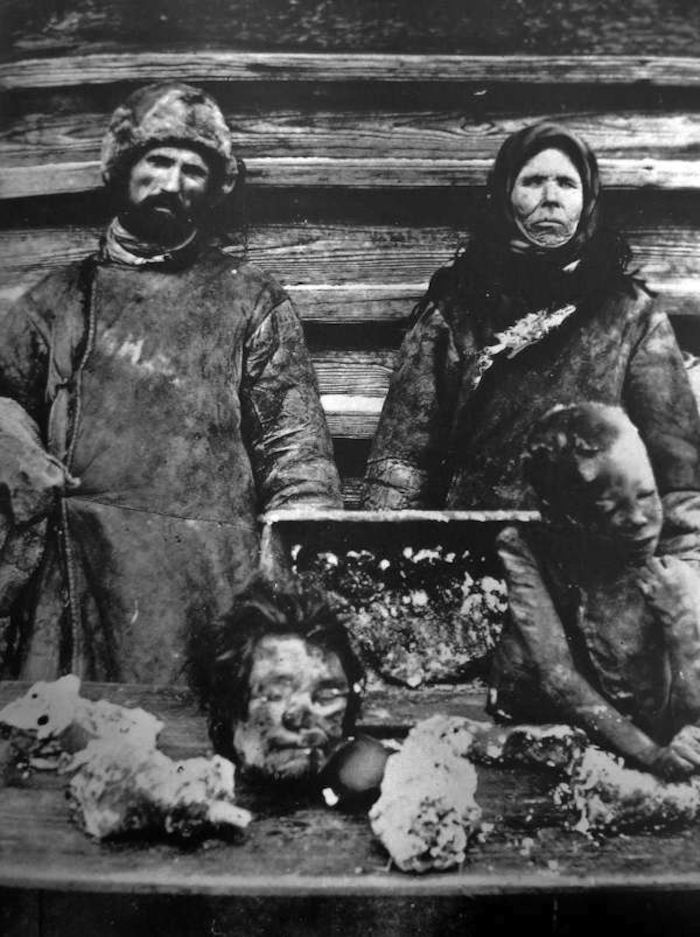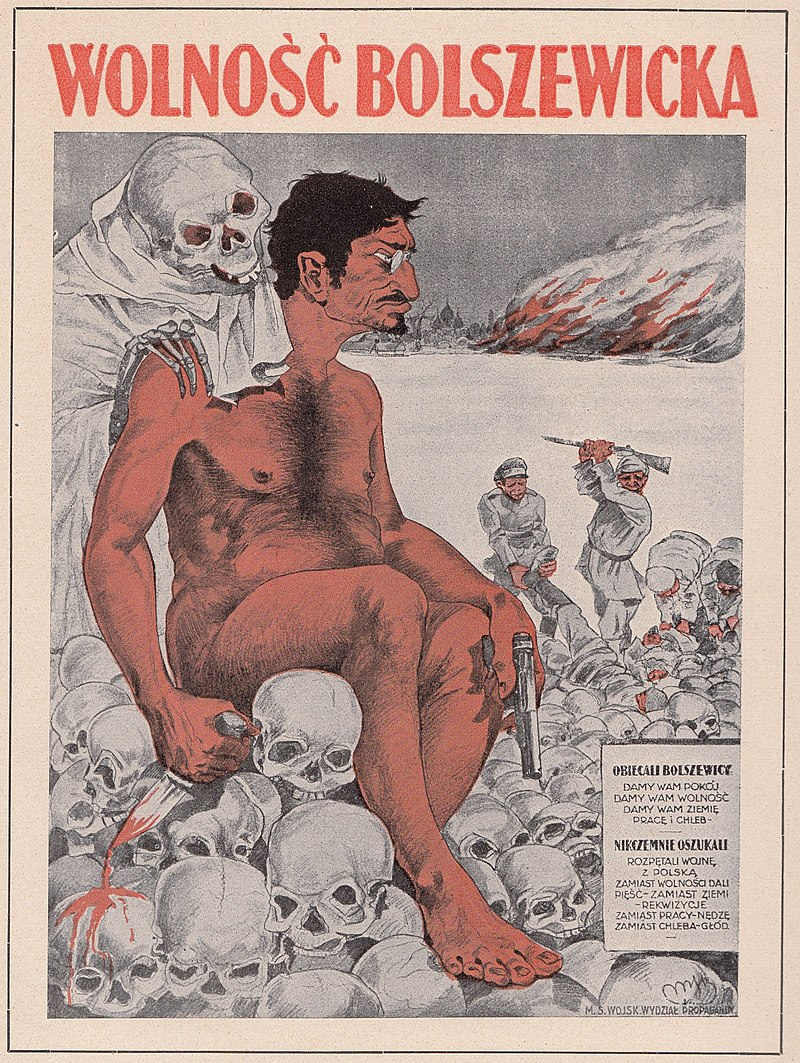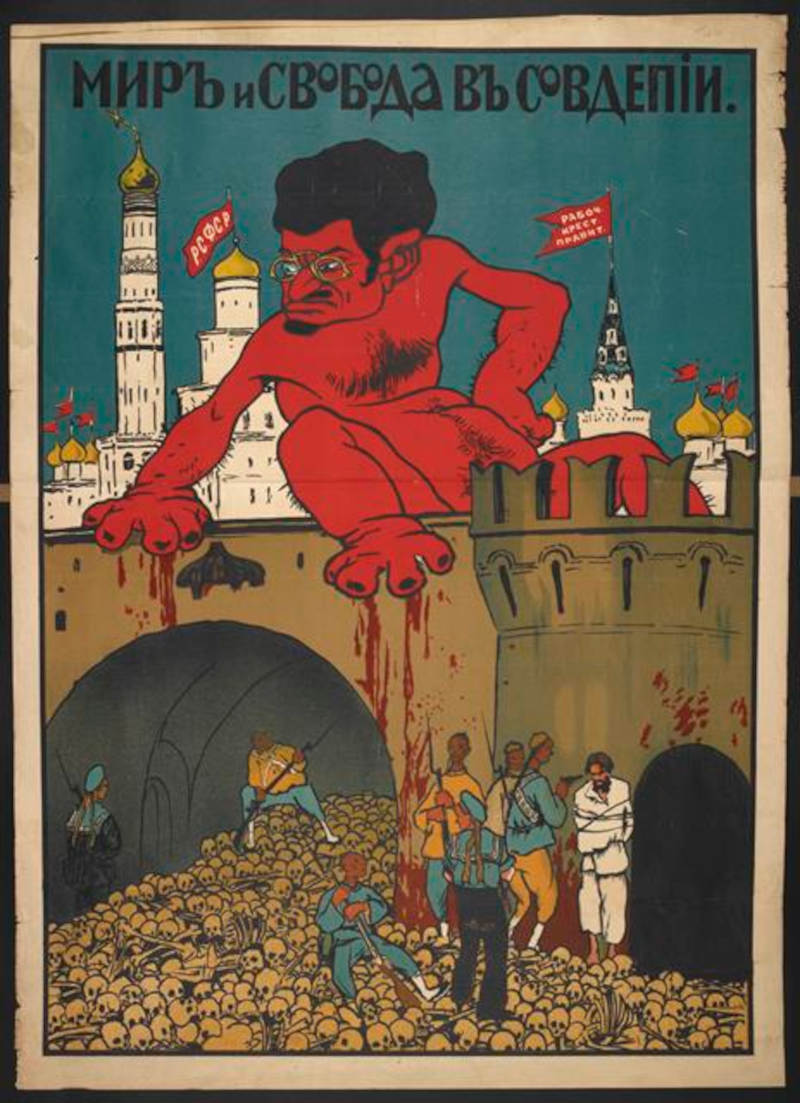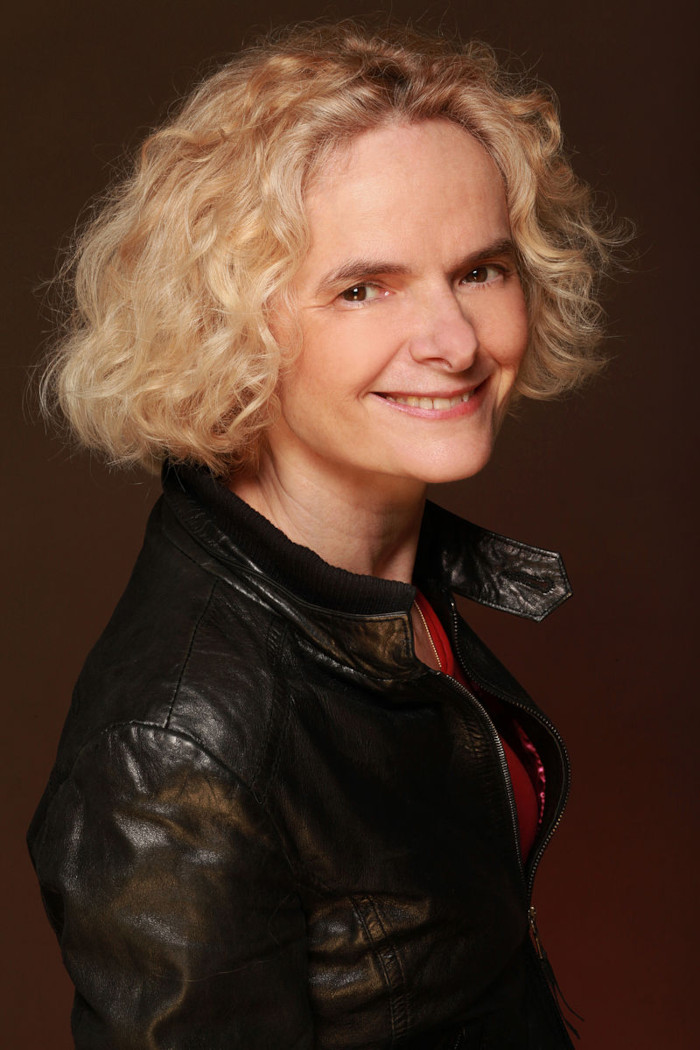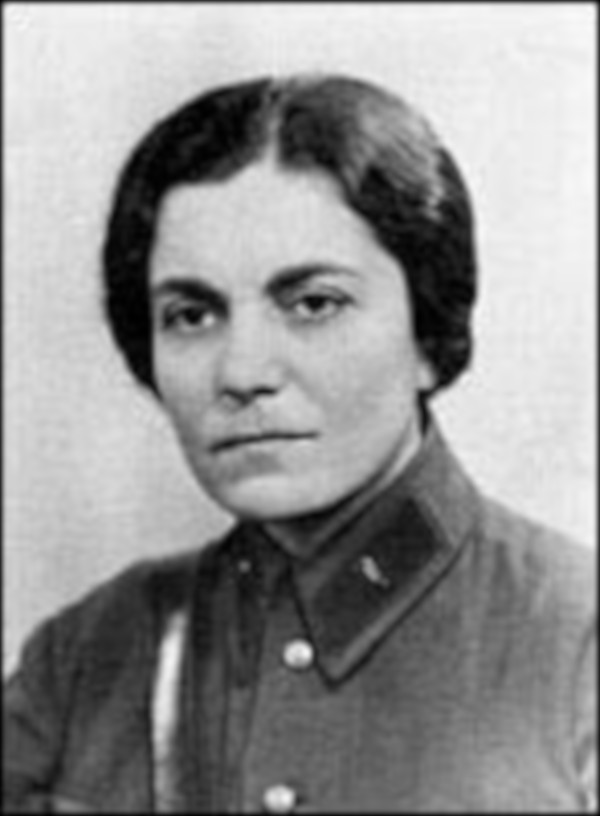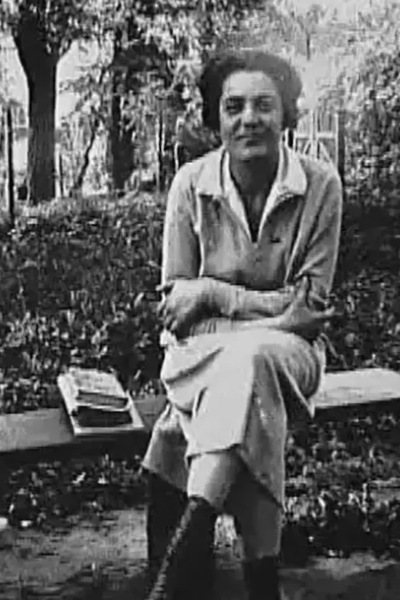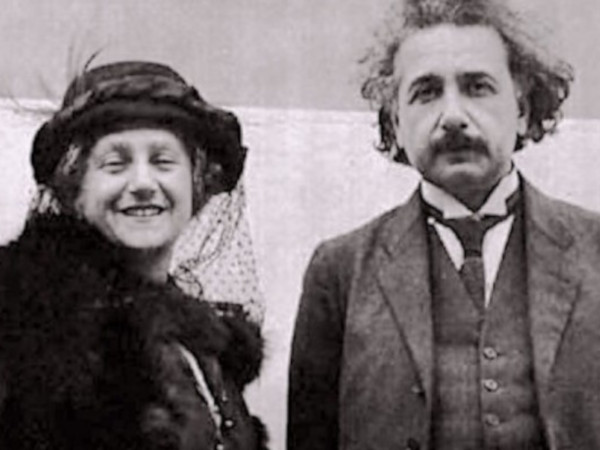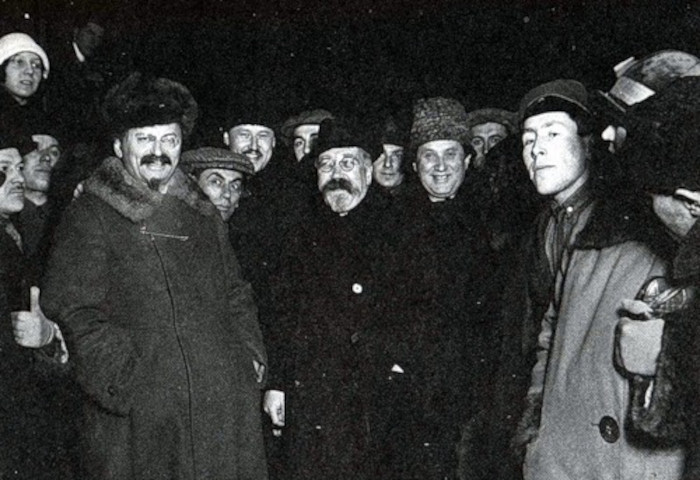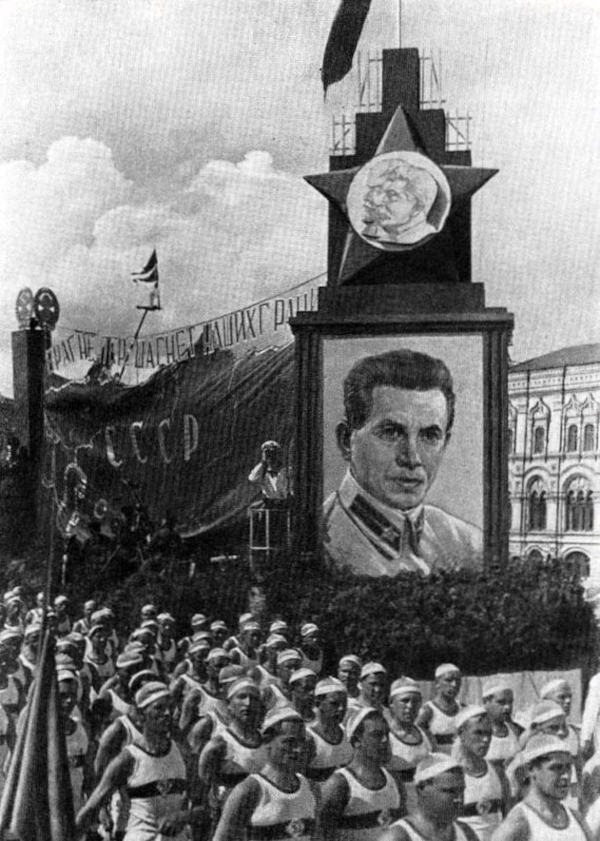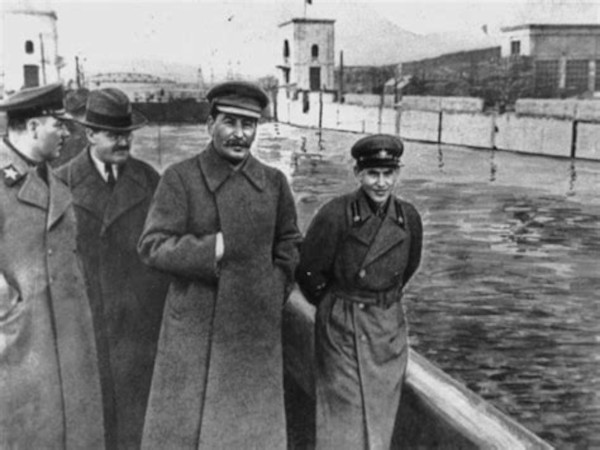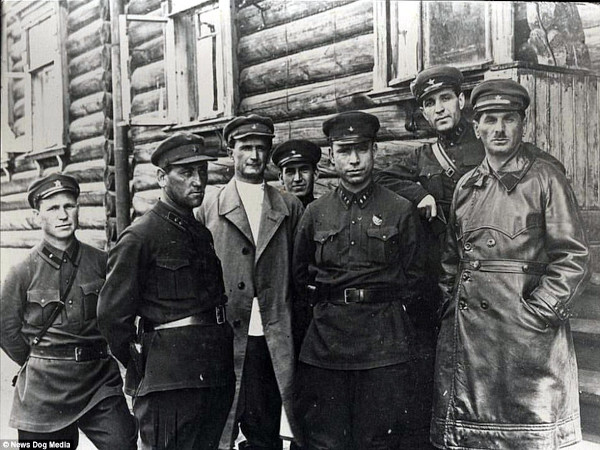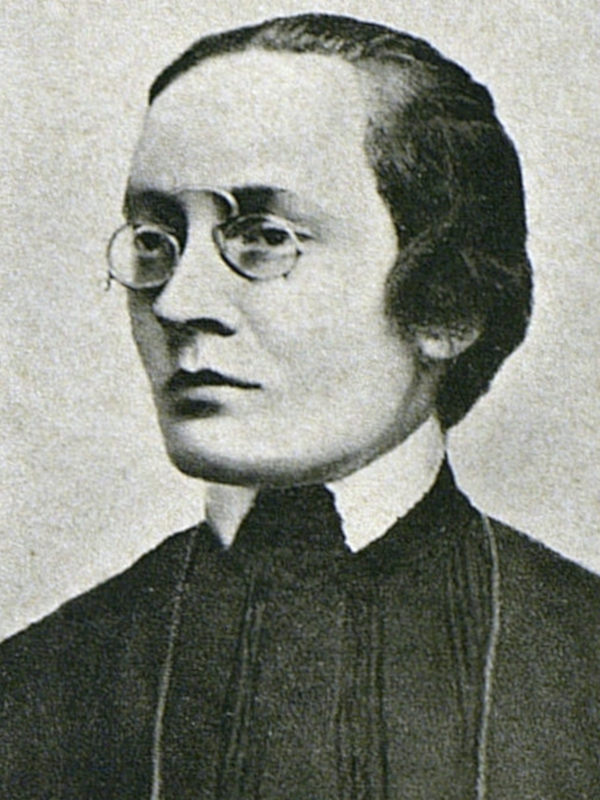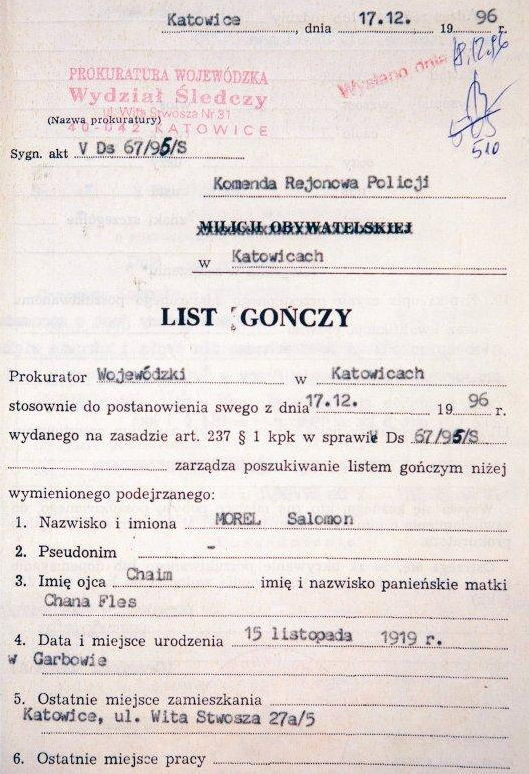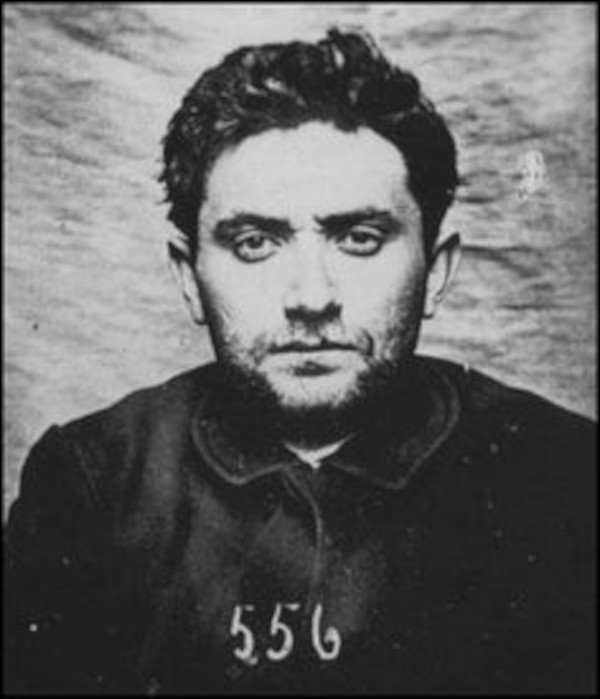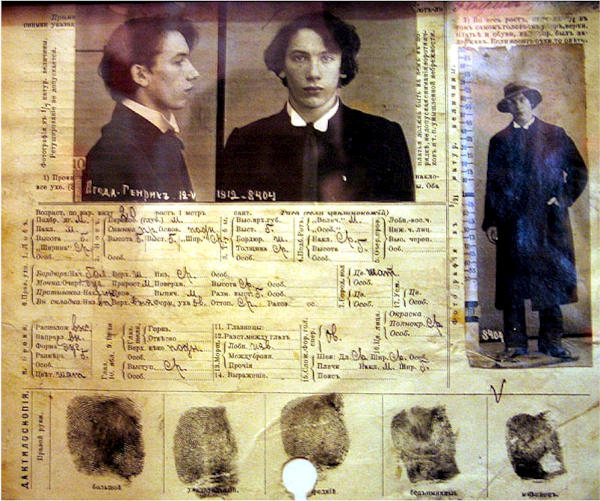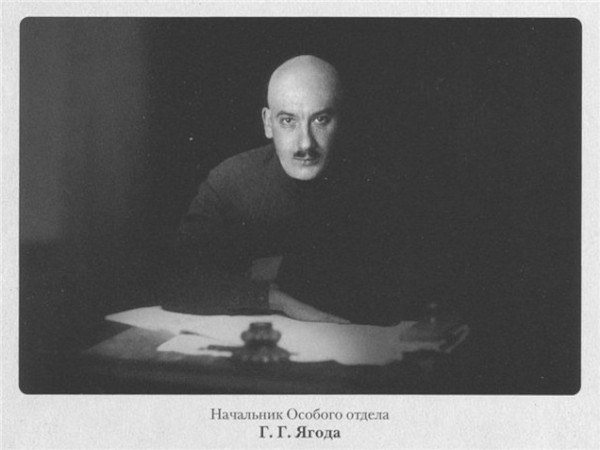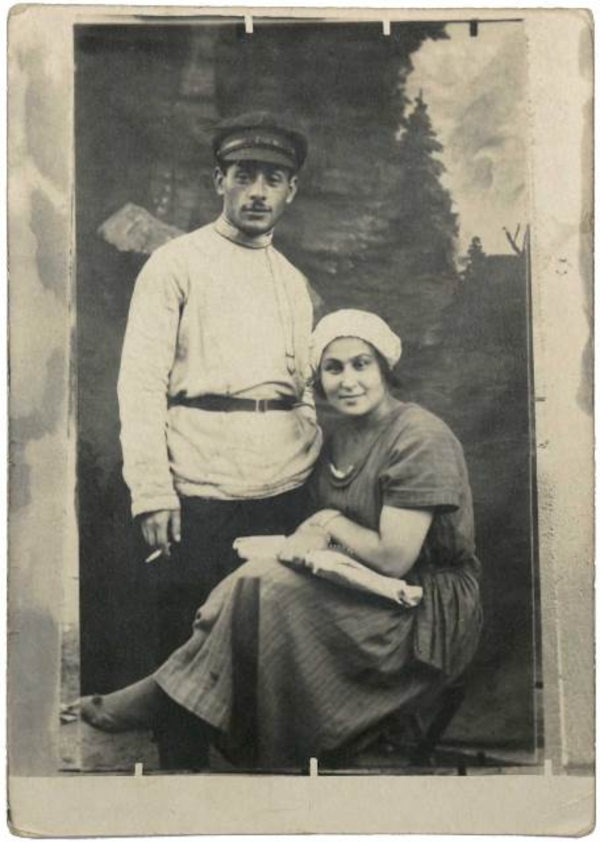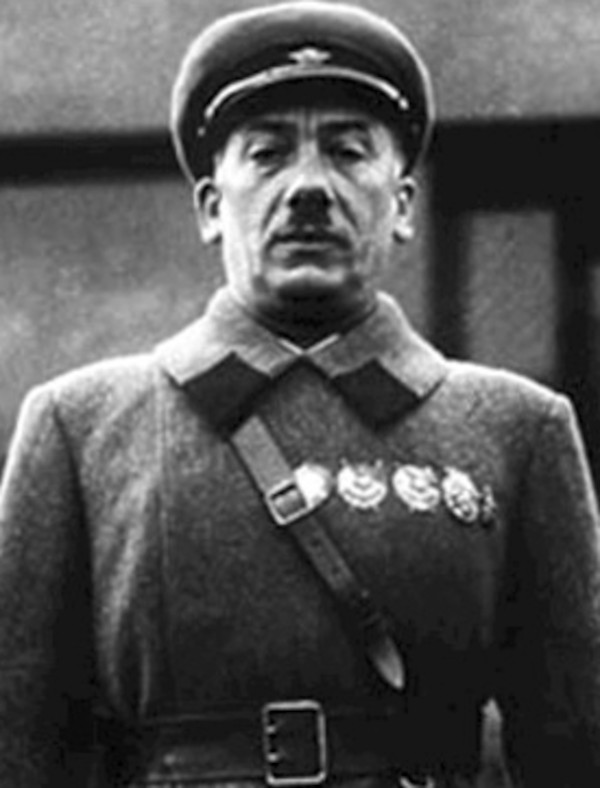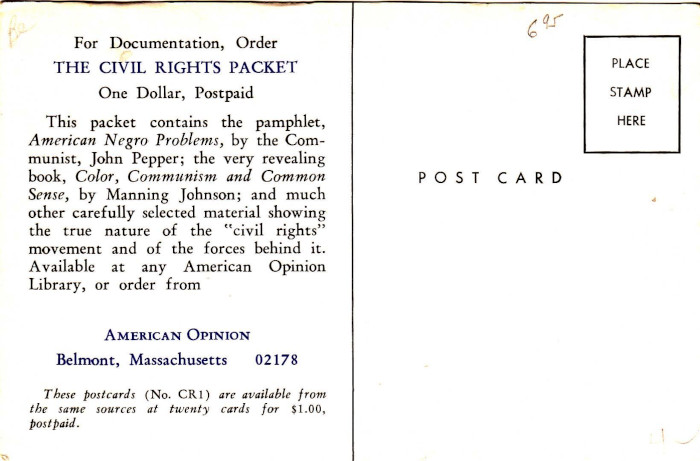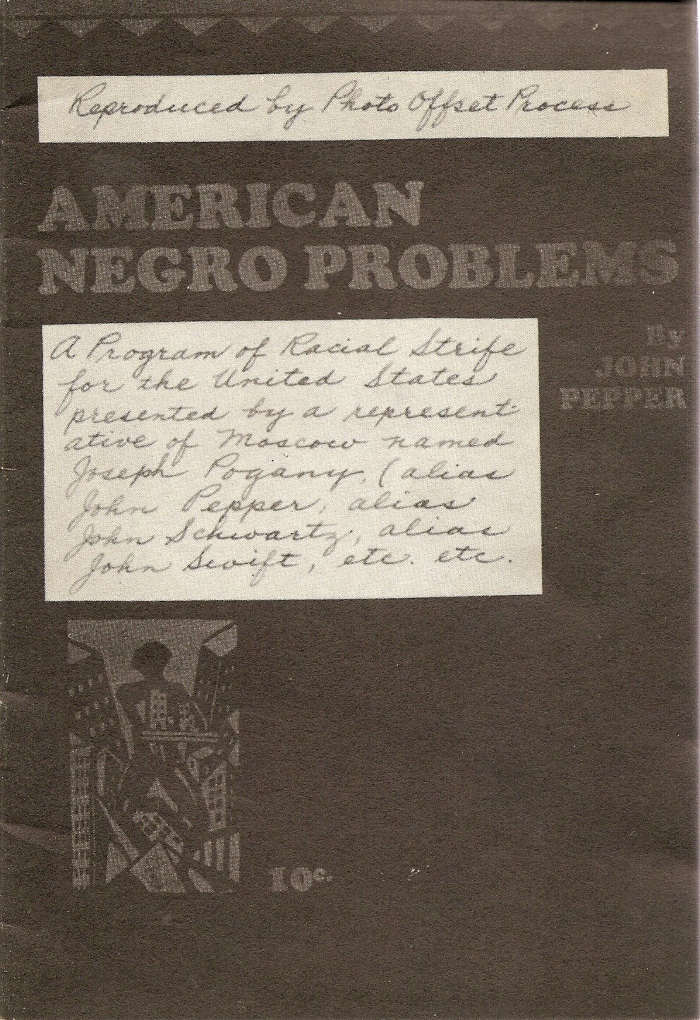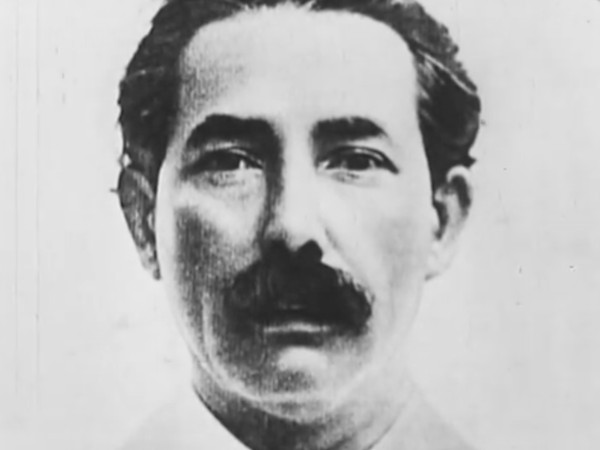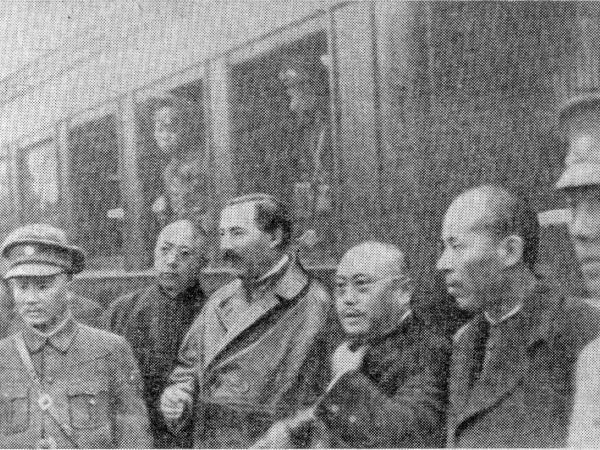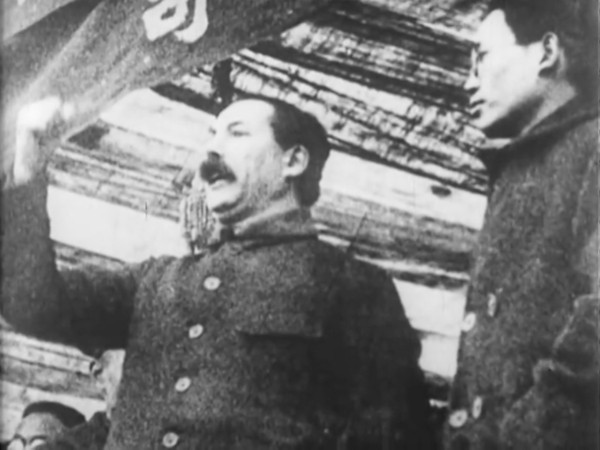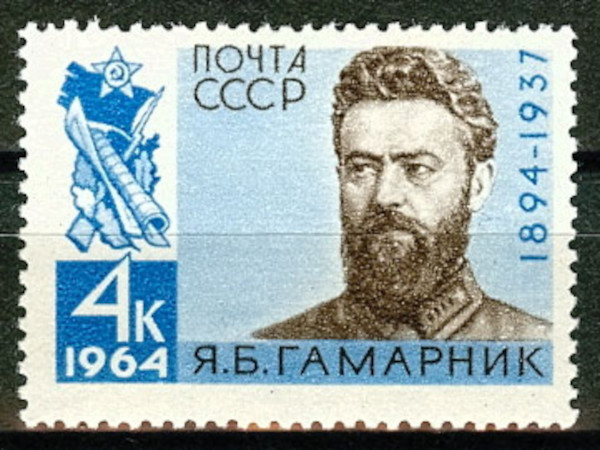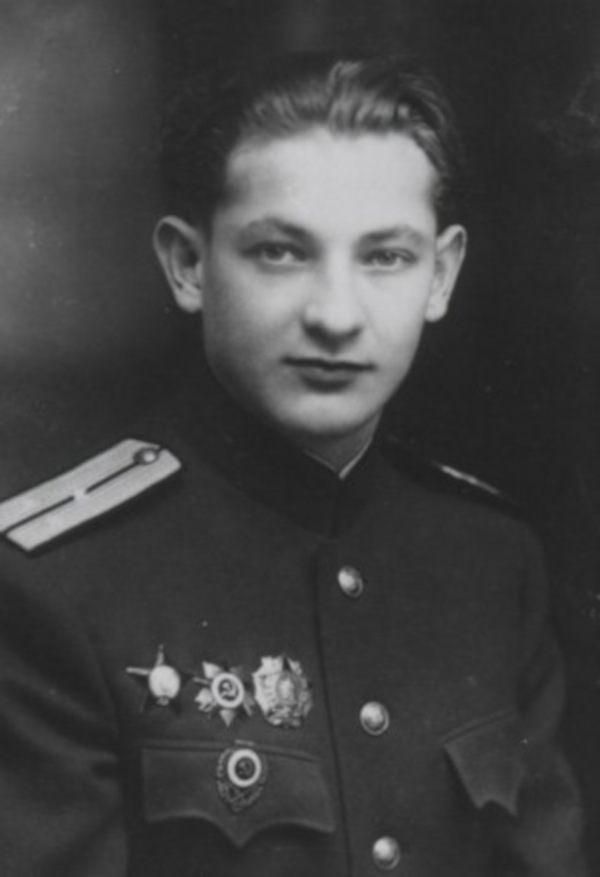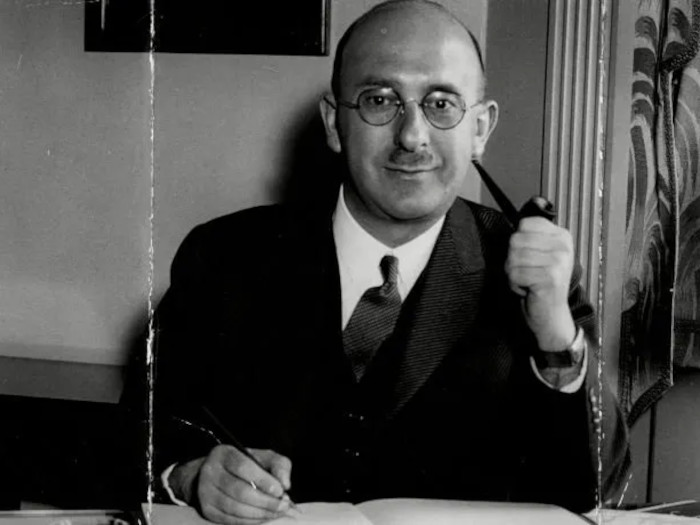
Der Bolschewismus - Grosse antibolschewistische Schau in den Messehallen Stettin vom 25. bis 10 Okt. 1937.
Bolsheviks, 1919-1957
In 1917, the Bolshevik Party seized power during the Russian Revolution and in 1922 created the Soviet Union, the world's first self-declared socialist state. As many as 10 million lives were lost as a result of the Russian Civil War, and the overwhelming majority of these were civilian casualties. Perceived opponents of the Bolsheviks were murdered by the Cheka, the direct death toll of this Red Terror claimed the lives of 2 million people.
Introduction
The Bolsheviks also known in English as the Bolshevists, were a far-left, revolutionary Marxist faction founded by Vladimir Lenin that split with the Mensheviks from the Marxist Russian Social Democratic Labour Party (RSDLP), a revolutionary socialist political party formed in 1898, at its Second Party Congress in 1903.
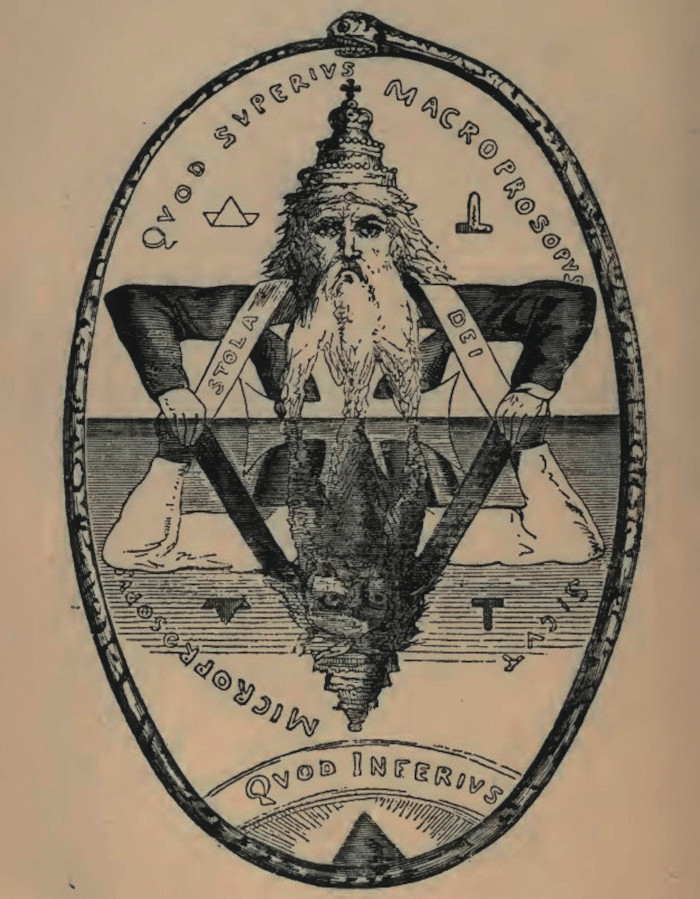
“There is much in the fact of Bolshevism itself, in the fact that so many Jews are Bolshevists, in the fact that the ideals of Bolshevism at many points are consonant with the finest Ideals of Judaism.”
After forming their own party in 1912, the Bolsheviks took power during the October Revolution in the Russian Republic in November 1917, overthrowing the Provisional Government of Alexander Kerensky, and became the only ruling party in the subsequent Soviet Russia and later the Soviet Union. They considered themselves the leaders of the revolutionary proletariat of Russia. Their beliefs and practices were often referred to as Bolshevism.
The main theorist of Bolshevism was Vladimir Lenin; besides him, the theoreticians of Bolshevism include Leon Trotsky, Nikolai Bukharin and Yevgeni Preobrazhensky. Bolo was a derogatory expression for Bolsheviks used by British service personnel in the North Russian Expeditionary Force which intervened against the Red Army during the Russian Civil War. During the Cold War in the United Kingdom, trade union leaders and other leftists were sometimes derisively described as Bolshies. The usage is roughly equivalent to the term "commie," "Red," or "pinko" in the United States during the same period.
“The Russian Revolution was made by Jews. We have created Secret societies, planned the Reign of Terror. The Revolution succeeded by our convincing propaganda and our mass assassinations in order to form a government truly ours”!
The expression "Bolshevism", as well as "communism" later, has become established in Western historiography in the sense of a certain set of features of Soviet power in a certain political period. At present, the very name "Bolsheviks" is actively used by various groups of Marxist–Leninists and Trotskyists.
“The positive significance of Bolshevism may be that having removed the mask and showed everyone Satan in his undisguised form, he led many through confidence in the reality of Satan to faith in God.”
In a total of 545 members the Bolshevist administration comprised of:
447
Jews
30
Russians
34
Letts
22
Armenians
12
Germans
3
Finns
2
Poles
1
Georgian
1
Czech
1
Hungarian
The Bolsheviks had a spectacular growth in membership. Whereas, in February 1917, the Bolsheviks were limited to only 24,000 members, by September 1917 there were 200,000 members of the Bolshevik faction. In August 1903, a small band of dedicated but argumentative political activists held a fractious conference in London. It consisted of Vladimir Lenin, Leon Trotsky and about 50 other committed agitators who wanted to overthrow the autocratic rule of the Russian Tsar Nicholas II.
"The 1903 London congress is regarded as decisive in the development of Bolshevism - it's hugely significant. Most people on the revolutionary left would say this is the decisive break between revolution and reform, A lot of liberal commentators would see it as the tiny seed from which ultimately grows the gulags and the labour camps of the 1930s".
To avoid being monitored during their conference, the Russians moved from venue to venue over a fortnight, often using meeting rooms in pubs recommended by friendly British trade unionists. This was when the Russian revolutionary movement divided into the two rival factions of Bolsheviks and Mensheviks. The Bolsheviks, described as the 'hards' and led by Lenin, wanted a tightly centralised and disciplined political party; the Mensheviks or 'softs' favoured a looser, broader-based alliance with sympathetic forces.
Regicide of Nicholas II
According to the account of Bolshevik officer Yakov Yurovsky (the chief executioner), in the early hours of 17 July 1918, the royal family was awakened around 2:00 am, got dressed, and were led down into a half-basement room at the back of the Ipatiev house. The pretext for this move was the family's safety, i.e. that anti-Bolshevik forces were approaching Yekaterinburg, and the house might be fired upon.
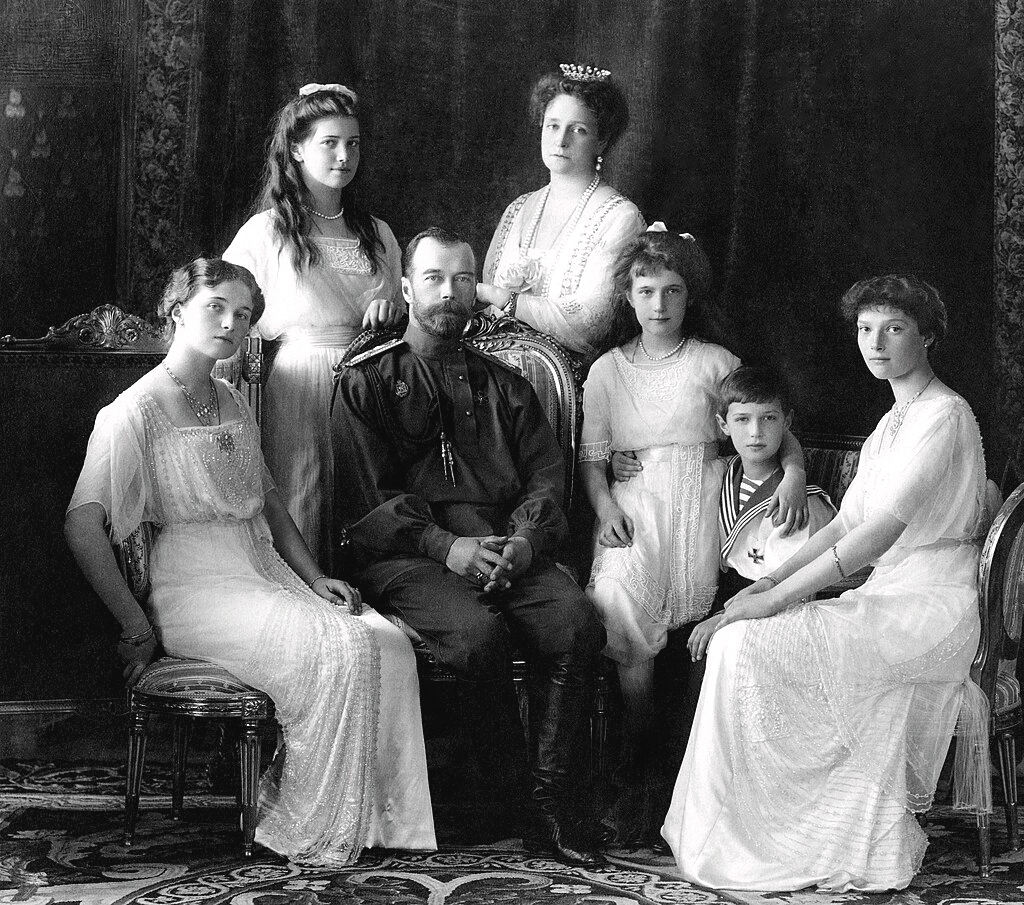
Present with Nicholas, Alexandra and their children were their doctor and three of their servants, who had voluntarily chosen to remain with the family: the Tsar's personal physician Eugene Botkin, his wife's maid Anna Demidova, and the family's chef, Ivan Kharitonov, and footman, Alexei Trupp. A firing squad had been assembled and was waiting in an adjoining room, composed of seven Communist soldiers from Central Europe, and three local Bolsheviks, all under the command of Yurovsky.
Accomplishments of Tsar Nicholas II reign:
- Increased the Russian population by 50 million in 20 years.
- Greatly expanded labor rights, did not suppress trade unions, introduced workplace insurance.
- He won the First World War.
- Established the first peace conference in world history (Hague 1898).
- Public education was made free, primary education made compulsory from 1908.
- 10,000 schools were opened every year between 1894 and 1913.
- Income tax fluctuated between 3.1% and 5% (7-8 times lower than the British Empire, which controlled many overseas colonies including India, African countries, etc ).
- Russia had the highest number of educated (University level) women in the world.
- Overall Farmer, peasant & Cossack land ownership skyrocketed from 133 to 261 million hectares .
- 100% Of all farmland in Asian Russia (Siberia) is controlled by Russian farmers.
- 90% of all farmland in European Russia is controlled by Russian farmers .
- The Russian Empire during Nicholas ii’s reign was undoubted the most ‘Christian supremacist’ country in the world:.
- Between 1894 & 1917: 10,000 completely new churches & cathedrals were built (more than anywhere in the world).
- 250 new monasteries were constructed .
- Between 1881 and 1914, 1.5 million Jews left Russia and went to the United States (left the Russian Empire).
- During his entire reign the Tsar refused to dissolve the ‘Pale of Settlement’, despite enormous pressure from the ‘international community’.
- The monetary wealth of the average Russia increased almost threefold, which can be seen in smaller account holdings of Russian banks (Savings increased from 330 million to 1.2 billion rubles between 1894 & 1908).
- The number of horses increased from 26.6 million to 37.5 million (37%) in 19 years.
- The number of cattle, goats & sheep increased from 31.6 million to 52 million (52%) in 19 years.
- Freemasonry remained completely illegal. All lodge members needed to act in complete secrecy & were at risk.
- Pornography was completely illegal.
- LGBTQ+ Acts & values were completely illegal.
- Prostitution was legal, however heavily controlled. Whores could not legally marry, and would be buried outside of Christian cemeteries (regular funerals not permitted).
- Tsar Nicholas not being Germanophobic, would never have allowed the ‘Weimar experiment’ to take place .
- The Tsar was against any form of ‘parliamentary monarchy’.
- Abortion was a crime.
- The Babylonian Talmud was illegal, no printing or translating was allowed.
Nicholas was carrying his son. When the family arrived in the basement, the former tsar asked if chairs could be brought in for his wife and son to sit on. Yurovsky ordered two chairs brought in, and when the empress and the heir were seated, the executioners filed into the room. Yurovsky announced to them that the Ural Soviet of Workers' Deputies had decided to execute them. A stunned Nicholas asked, "What? What did you say?" and turned toward his family. Yurovsky quickly repeated the order and Nicholas said, according to Peter Ermakov, "You know not what you do."
“Anastasia, Tatiana, Olga, and Maria were stabbed with bayonets and finally shot at close range in their heads.
The executioners drew handguns and began shooting; Nicholas was the first to die. Yurovsky took credit afterwards for firing the first shot that killed the tsar, but his protege—Grigory Nikulin—said years later that Mikhail Medvedev had fired the shot that killed Nicholas. "He fired the first shot. He killed the Tsar," he said in 1964 in a tape-recorded statement for the radio. Nicholas was shot several times in the chest (sometimes erroneously said to have been shot in his head, but his skull bore no bullet wounds when it was discovered in 1991).
Red Terror
The Red Terror in Soviet Russia was a campaign of political repression and executions which was carried out by the Bolsheviks, chiefly through the Cheka, the Bolshevik secret police. It officially started in early September 1918 and lasted until 1922. Arising after assassination attempts on Vladimir Lenin and Petrograd Cheka leader Moisei Uritsky in retaliation for Bolshevik atrocities, the latter of which was successful, the Red Terror was modeled on the Reign of Terror of the French Revolution, and sought to eliminate political dissent, opposition, and any other threat to Bolshevik power.
There is no consensus among the Western historians on the number of deaths from the Red Terror. One source gives estimates of 28,000 executions per year from December 1917 to February 1922. Estimates for the number of people shot during the initial period of the Red Terror are at least 10,000. Estimates for the whole period go for a low of 50,000 to highs of 140,000 and 200,000 executed. Most estimations for the number of executions in total put the number at about 100,000.
“Without Jews, there would never have been Bolshevism. For a Jew, nothing is more insulting than the truth. The bloodthirsty Jewish terrorist have murdered sixty-six million in Russia from 1918 to 1957.”.
According to Vadim Erlikhman's investigation, the number of the Red Terror's victims is at least 1,200,000 people. According to Robert Conquest, a total of 140,000 people were shot in 1917–1922, but Jonathan D. Smele estimates they were considerably fewer, "perhaps less than half that many". Candidate of Historical Sciences Nikolay Zayats states that the number of people shot by the Cheka in 1918–1922 is about 37,300 people, shot in 1918–1921 by the verdicts of the tribunals — 14,200, i.e. about 50,000–55,000 people in total, although executions and atrocities were not limited to the Cheka, having been organised by the Red Army as well.
In 1924, an anti-Bolshevik Popular Socialist Sergei Melgunov (1879–1956) published a detailed account on the Red Terror in Russia, where he cited Professor Charles Saroléa's estimates of 1,766,188 deaths from the Bolshevik policies. He questioned the accuracy of the figures, but endorsed Saroléa's "chracterisation of terror in Russia", stating it matches reality. Modern historian Sergei Volkov, assessing the Red Terror as the entire repressive policy of the Bolsheviks during the years of the Civil War (1917–1922), estimates the direct death toll of the Red Terror at 2 million people.
“Every Jew who is sincerely interested in the plight of the Jews… should realise that the best sons of the Jewish people are the Jewish Communists, and that the most faithful ally of the Jews… is the Communist Party”.
In December 1917, Felix Dzerzhinsky was appointed to the duty of rooting out counterrevolutionary threats to the Soviet government. He was the director of the All-Russian Extraordinary Commission (aka Cheka), a predecessor of the KGB that served as the secret police for the Soviets. From early 1918, the Bolsheviks started physical elimination of opposition and other socialist and revolutionary fractions, anarchists among the first:
“Of all the revolutionary elements in Russia it is the Anarchists who now suffer the most ruthless and systematic persecution. Their suppression by the Bolsheviki began already in 1918, when — in the month of April of that year — the Communist Government attacked, without provocation or warning, the Anarchist Club of Moscow and by the use of machine guns and artillery "liquidated" the whole organisation. It was the beginning of Anarchist hounding, but it was sporadic in character, breaking out now and then, quite planless, and frequently self-contradictory.”.
On 11 August 1918, prior to the events that would officially catalyse the Terror, Vladimir Lenin had sent telegrams "to introduce mass terror" in Nizhny Novgorod in response to a suspected civilian uprising there, and to "crush" landowners in Penza who resisted, sometimes violently, the requisitioning of their grain by military detachments. In a mid-August 1920 letter, having received information that in Estonia and Latvia, with which Soviet Russia had concluded peace treaties, volunteers were being enrolled in anti-Bolshevik detachments, Lenin wrote to E. M. Sklyansky, deputy chairman of the Revolutionary Military Council of the Republic: Great plan! Finish it with Dzerzhinsky. While pretending to be the "greens" (we will blame them later), we will advance by 10–20 miles (versts) and hang kulaks, priests, landowners. Prize: 100.000 rubles for each hanged man.
Leonid Kannegisser, a young military cadet of the Imperial Russian Army, assassinated Moisey Uritsky on August 17, 1918, outside the Petrograd Cheka headquarters in retaliation for the execution of his friend and other officers. On August 30, Socialist Revolutionary Fanny Kaplan unsuccessfully attempted to assassinate Vladimir Lenin. Kaplan referenced the Bolsheviks' growing authoritarianism, citing their forcible shutdown of the Constituent Assembly in January 1918, the elections to which they had lost. When it became clear that Kaplan would not implicate any accomplices, she was executed in Alexander Garden. The order was carried out by the commander of the Kremlin, the former Baltic sailor P. D. Malkov and a group of Latvian Bolsheviks on September 3, 1918 with a bullet to the back of the head. Her corpse was bundled into a barrel and set alight. The order came from Yakov Sverdlov, who only six weeks earlier had ordered the murder of the Tsar and his family.
“You must understand. The leading Bolsheviks who took over Russia were not Russians. They hated Russians. They hated Christians. Driven by ethnic hatred, they tortured and slaughtered millions of Russians without a shred of human remorse. The October Revolution was not what you call in America the “Russian Revolution.” It was an invasion and conquest over the Russian people. More of my countrymen suffered horrific crimes at their bloodstained hands than any people or nation ever suffered in the entirety of human history. It cannot be understated. Bolshevism was the greatest human slaughter of all time. The fact that most of the world is ignorant of this reality is proof that the global media itself is in the hands of the perpetrators.”.
These events persuaded the government to heed Dzerzhinsky's lobbying for greater terror against opposition. The campaign of mass repressions would officially begin thereafter. The Red Terror is considered to have officially begun between 17 and 30 August 1918. While recovering from his wounds, Lenin instructed: "It is necessary – secretly and urgently to prepare the terror." In immediate response to the two attacks, Chekists killed approximately 1,300 "bourgeois hostages" held in Petrograd and Kronstadt prisons.
The first official announcement of a Red Terror was published in Izvestia on September 3, titled "Appeal to the Working Class": it had been drafted by Dzerzhinsky and his assistant Jēkabs Peterss and called for the workers to "crush the hydra of counter-revolution with massive terror!"; it would also make clear that "anyone who dares to spread the slightest rumor against the Soviet regime will be arrested immediately and sent to a concentration camp". Izvestia also reported that, in the 4 days since the attempt on Lenin, over 500 hostages had been executed in Petrograd alone.
“Revolutionaries, socialists, Bolshevists, majority or minority socialists, under whatever name we may call them, are Jews, and they are to be found in every revolutionary movement as leaders or propagandists”.
Subsequently, on September 5, the Council of People's Commissars issued a decree "On Red Terror", prescribing "mass shooting" to be "inflicted without hesitation;" the decree ordered the Cheka "to secure the Soviet Republic from the class enemies by isolating them in concentration camps", as well as stating that counter-revolutionaries "must be executed by shooting [and] that the names of the executed and the reasons of the execution must be made public.". In Crimea, Béla Kun and Rosalia Zemlyachka, with Vladimir Lenin's approval, had 50,000 White prisoners of war and civilians summarily executed by shooting or hanging after the defeat of general Pyotr Wrangel at the end of 1920. They had been promised amnesty if they would surrender. This is one of the largest massacres in the Civil War.
On 16 March 1919, all military detachments of the Cheka were combined in a single body, the Troops for the Internal Defense of the Republic (a branch of the Cheka), which numbered at least 200,000 in 1921. These troops policed labor camps, ran the Gulag system, conducted prodrazvyorstka (requisitions of food from peasants), and put down peasant rebellions, riots by workers, and mutinies in the Red Army (which was plagued by desertions). Among the victims of the Red Terror were tsarists, liberals, non-Bolshevik socialists, anarchists, members of the clergy, ordinary criminals, counter-revolutionaries, and other political dissidents. Later, industrial workers who failed to meet production quotas were also targeted.
“You are starving? This is not famine yet! When your women start eating their children, then you may come and say we are starving”.
The first victims of the Terror were the Socialist Revolutionaries (SR). Over the months of the campaign, over 800 SR members were executed, while thousands more were driven into exile or detained in labor camps. In a matter of weeks, executions carried out by the Cheka doubled or tripled the amount of death sentences pronounced by the Russian Empire over the 92-year period from 1825 to 1917. While the Socialist Revolutionaries were initially the primary targets of the terror, most of its direct victims were associated with the preceding regimes.
The Internal Troops of the Cheka and the Red Army practiced the terror tactics of taking and executing numerous hostages, often in connection with desertions of forcefully mobilised peasants. According to Orlando Figes, more than 1 million people deserted from the Red Army in 1918, around 2 million people deserted in 1919, and almost 4 million deserters escaped from the Red Army in 1921. Around 500,000 deserters were arrested in 1919 and close to 800,000 in 1920 by Cheka troops and special divisions created to combat desertions. Thousands of deserters were killed, and their families were often taken hostage.
“Without exaggeration, it may be said that the great Russian Revolution was indeed accomplished by the hands of the Jews”.
Estimates suggest that during the suppression of the Tambov Rebellion of 1920–1921, around 100,000 peasant rebels and their families were imprisoned or deported and perhaps 15,000 executed. During the rebellion, Mikhail Tukhachevsky (chief Red Army commander in the area) authorised Bolshevik military forces to use chemical weapons against villages with civilian population and rebels. Publications in local Communist newspapers openly glorified liquidations of "bandits" with the poison gas.
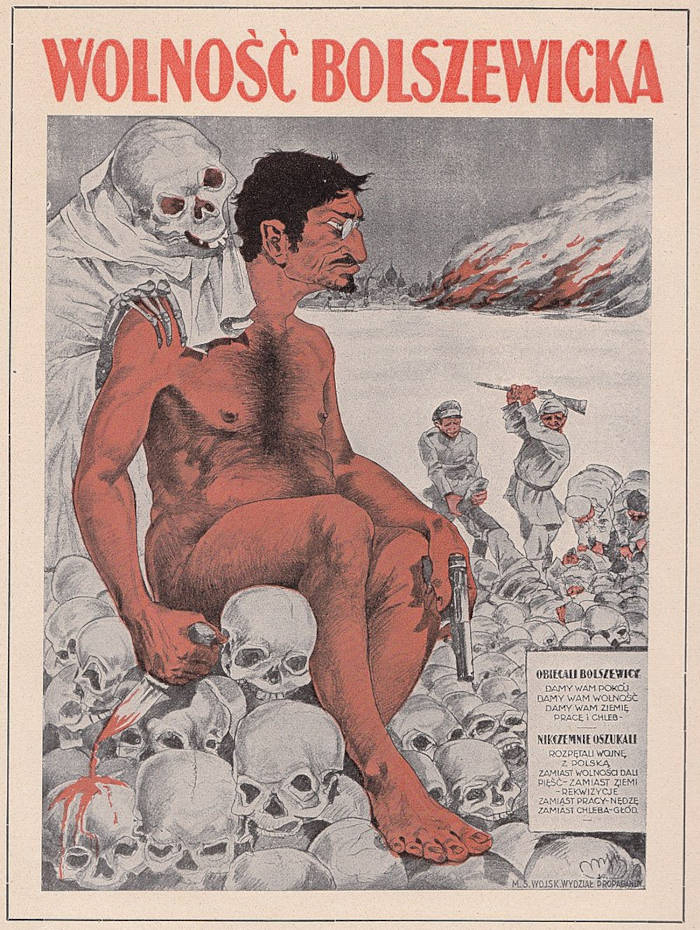
This campaign marked the beginning of the Gulag, and some scholars have estimated that 70,000 were imprisoned by September 1921 (this number excludes those in several camps in regions that were in revolt, such as Tambov). Conditions in these camps led to high mortality rates, and "repeated massacres" took place. The Cheka at the Kholmogory camp adopted the practice of drowning bound prisoners in the nearby Dvina river. Occasionally, entire prisons were "emptied" of inmates via mass shootings prior to abandoning a town to White forces.
Members of the clergy were subjected to particularly brutal abuse. According to documents cited by Alexander Yakovlev, then head of the Presidential Committee for the Rehabilitation of Victims of Political Repression, priests, monks and nuns were crucified, thrown into cauldrons of boiling tar, scalped, strangled, given Communion with melted lead and drowned in holes in the ice. An estimated 3,000 were put to death in 1918 alone. The Red Terror was significant because it was the first of numerous Communist terror campaigns which were waged in Soviet Russia and many other countries. It also triggered the Russian Civil War according to historian Richard Pipes.
“If for the sake of Communism it is necessary for us to destroy 9/10ths of the people, we must not hesitate”.
The term 'Red Terror' was later used in reference to other campaigns of violence which were waged by communist or communist-affiliated groups. Some other events which were also called "Red Terrors" include:
- Hungarian Red Terror — the execution of 590 people who were accused of being involved in the counterrevolutionary coup against the Hungarian Soviet Republic on 24 June 1919.
- Spanish Red Terror — assassinations which were carried out during the Spanish Civil War.
- Red Terror (Greece) — a campaign of repression which was waged in Greece by the Communist organisations of the Greek Resistance (during the Axis occupation of Greece which coincided with World War II) and the Greek Civil War (1943–49).
- Ethiopian Red Terror — a campaigned of repression which was waged by the Derg during the rule of Mengistu Haile Mariam.
- Chinese Red Terror — a campaign of repression which is believed to have begun with the Red August of the Cultural Revolution. According to Mao Zedong himself: "Red terror ought to be our reply to these counter-revolutionaries. We must, especially in the war zones and in the border areas, deal immediately, swiftly with every kind of counter-revolutionary activity."
- Indian Red Terror — a name which was given to the "Nandigram violence" (November 2007) in Nandigram, West Bengal, critics use it in order to allude to the actions of the local administration Communist Party of India, the ruling party in West Bengal. The situation was also called a "Red Terror" by the media.
- Finnish Red Terror — the 1918 Civil War in Finland.
- Yugoslavian Red Terror — another name for the period from 1941 to 1942 in Yugoslavia known as the "Leftist errors."
Crimes against humanity under communist regimes occurred during the 20th century, including forced deportations, massacres, torture, forced disappearances, extrajudicial killings, terror, ethnic cleansing, and enslavement, as well as deliberate starvation of people (during the Holodomor and the Great Leap Forward. Additional events included the use of genocide, conspiracy to commit genocide, and complicity in genocide. Such events have been described as crimes against humanity.
“Bolshevistic and atheistic Communism, which aims at upsetting the social order and at undermining the very foundations of Christian civilization", had destroyed "as far as possible every church and every monastery”.
In 1924, Russian writer Sergei Melgunov published a detailed account of violence and torture during the Bolshevik Red Terror. In this grim extract, he outlines some of the extreme torture methods employed by CHEKA agents (here referred to as “Excommers”). It should be acknowledged that Melgunov was a liberal-socialist who was bitterly opposed to the Bolshevik regime. His research was thorough, however, and cites many verified documentary sources and anecdotal accounts:
“Physical and mental torture is carried out. This is how they torture in Ekaterinodar: they stretch a victim on the basement floor. Two burly Excommers pull the victim by the head and shoulders, stretching the neck, while the third one slams a blunt object, usually a butt of a handgun, into the neck. The neck bloats, blood flows from nose and mouth. The victim suffers immensely…
Dombrovsky, a teacher, whose only fault was that during a search they found a suitcase with officer clothes left behind by a family member passing through the town, was tortured in a solitary cell. Dombrovsky confessed of that but the Excommers had a tip that she was hiding gold jewellery received from a relative, some general. That was enough to subject her to torture.
Firstly she was raped and abused… Then she was tortured in order to extract information of where she was hiding gold. First, they carved her naked body with knives, then crushed the fingertips with pliers. Suffering and bleeding, the victim pointed at some place in a barn on Medvedev Street where she lived. She was executed at 9 PM and an hour later the Excommers searched that addressed and supposedly found a golden wristband and several rings.
An iron glove is used for torture in Kavkazskaya village. It is a massive chunk of steel, worn around the right hand and studded with small nails. Besides pain from the mass of iron, the victim suffers immensely from the shallow wounds left by the nails, that quickly inflame. ion Efremovich Lelyavin was subjected to that torture, among others, while the Excommers questioned where he was hiding gold and paper money of the monarchy.
A headband is used for torture in Armavir. It is simply a leather strip, connected with a screw and nut. The band is wrapped around the head and the nut is tightened, squeezing the head and causing immense physical pain.
The chair of Pyatigorsk CHEKA operations Richman flogs the questioned with rubber whips, giving 10-20 lashes. He was the one who sentenced some sisters of charity [nuns] to 15 whips for providing medical care to wounded Cossacks…
A number of witnesses testified to the savage beating of Admiral Myazgovski in 1919. [There is] printed testimony of a commoner from Lugansk of how he was tortured [by] drenching in ice-cold water, pulling the fingernails with pliers, inserting needles, carving with a razor, etc…
In Simferopol, the CHEKA used a novel method of torture: administering enemas with crushed glass and setting burning candles under the genitals. They used to sit the [victim] onto a hot frying pan and used iron rods, rubber hoses with a metal tip, twisted arms, fractured bones…”
“We Jews have erred grievously. We who have posed as having given the world 'the' Saviour, are today nothing else than its destroyers, its incendiaries, its executioners. We, who have promised you a New Heaven, have given you a New Hell”.
Laboratory 12
The poison laboratory of the Soviet secret services, alternatively known as Laboratory 1, Laboratory 12, and Kamera (which means "The Cell" in Russian), was a covert research-and-development facility of the Soviet secret police agencies. Prior to the dissolution of the Soviet Union, the laboratory manufactured and tested poisons and was reportedly reactivated by the Russian government in the late 1990s. The laboratory activities were mentioned in the Mitrokhin archive.
- 1921: First poison laboratory within the Soviet secret services was established under the name "Special Office". It was operated by the Cheka and headed by professor of medicine Ignatii Kazakov, according to Pavel Sudoplatov.
- 1926: The laboratory was under the supervision of Genrikh Yagoda, a deputy of OGPU chairman Vyacheslav Menzhinsky, who became NKVD chief in 1934 after Menzhinsky's death.
- February 20, 1939: It becomes Laboratory 1 headed by Grigory Mairanovsky. The laboratory was under the direct supervision of NKVD director Lavrenty Beria and his deputy Vsevolod Merkulov from 1939 to March 1953. Victims included the American Isaiah Oggins.
- March 14, 1953: It was renamed to Laboratory 12. V. Naumov became the newly appointed head. Lavrenty Beria and Vsevolod Merkulov were executed after Stalin's death. Immediate NKVD supervisor of the laboratory, Pavel Sudoplatov, received a long term in prison.
- 1978: Expanded into the Central Investigation Institute for Special Technology within the First Chief Directorate of the KGB.
- Since 1991: Several laboratories of the SVR (headquartered in Yasenevo near Moscow) were responsible for the "creation of biological and toxin weapons for clandestine operations in the West".
Mairanovsky and his colleagues tested a variety of lethal poisons on prisoners from the Gulags, including mustard gas, ricin, digitoxin, curare, cyanide, and many others. The objective of these experiments was to identify a tasteless, odorless chemical that could not be detected post-mortem. Candidate poisons were administered to the victims along with a meal or drink, disguised as "medication". Ultimately, a preparation meeting the desired criteria was developed and referred to as C-2 or K-2 (carbylamine choline chloride).
“The ideals of Bolshevism at many points are consonant with the finest ideals of Judaism.”.
According to witness testimonies, the victims experienced physical changes, such as a rapid weakening and diminishment in height, followed by a calm and silent demeanor, culminating in death within 15 minutes. Mairanovsky intentionally brought individuals of various physical conditions and ages into the laboratory to comprehensively understand the effects of each poison. Pavel Sudoplatov and Nahum Eitingon only approved specialised equipment (namely, poisons) if it had been tested on "humans", as revealed in the testimony of Mikhail Filimonov.
"Our very special attitude towards communism is well known to [the] US government and to [the] world. It is our interest that communism not infiltrate into any area of the Middle East. In opposing communism, we do so on basic religious belief and Islamic principle, in which we believe with all of our heart, and not to please America or western states. My position, in particular, of Moslem Arab King, servant to Holy Shrines, looked up to by 400 million Moslems in East and West, is extremely delicate and serious before God, my nation, and history."
Vsevolod Merkulov stated that these experiments received authorisation from NKVD chief Lavrenty Beria. Following Stalin's death and Beria's subsequent arrest, Beria attested on August 28, 1953, that "I gave orders to Mairanovsky to conduct experiments on people sentenced to the highest measure of punishment, but it was not my idea". In addition to human experimentation, Mairanovsky personally executed people with poisons, under the supervision of Sudoplatov.
Prominent victims included:
- 1930: The leader of the Russian All-Military Union, general Alexander Kutepov, was drugged and kidnapped in Paris and died from a heart attack due to an overdose of the administered drug.
- 1936: Nestor Lakoba, Abkhaz Communist leader.
- 1937: One of the leaders of the White movement and head of the Russian All-Military Union, Russian general Evgenii Miller, was drugged and kidnapped in Paris and later executed in Russia.
- 1938: Abram Slutsky (17 February 1938).
- 1940: Nikolai Koltsov, famous Russian biologist
- 1947: Cy Oggins was taken to Laboratory Number One (the "Kamera"), where Grigory Mairanovsky injected him with curare, which takes 10 to 15 minutes to kill.
- 1947: Archbishop Theodore Romzha of the Ukrainian Catholic Church was killed by injection of curare provided by Mairanovsky and administered by a medical nurse who was a Ministry for State Security agent.
- 1971: Nobel prize laureate and dissident Alexander Solzhenitsyn was poisoned with what was later determined to be ricin. Solzhenitsyn survived the attempt.
- 1978: Dissident Bulgarian writer Georgi Markov was assassinated in London using a tiny pellet from an umbrella gun poisoned with ricin; the necessary equipment was prepared in this laboratory. In a Discovery Channel television program about his illustrated book of espionage equipment called The Ultimate Spy, espionage historian H. Keith Melton indicates that once the Bulgarian secret service had decided to kill Markov, KGB specialists from the Laboratory gave the Bulgarians a choice between two KGB tools that could be provided for the task: either a poisonous topical gelatin to be smeared on Markov, or an instrument to administer a poison pellet, as was eventually done.
- 1979: Attempted poisoning of the second President of Afghanistan Hafizullah Amin on December 13, 1979. Department 8 of KGB succeeded in infiltrating the illegal agent Mitalin Talybov (codenamed SABIR) as a chef of Amin's presidential palace. However, Amin switched his food and drink as if he expected to be poisoned, so his son-in-law became seriously ill and, ironically, was flown to a hospital in Moscow.
Alleged victims:
- Lechi Ismailov, a Chechen rebel commander sentenced in Russia for nine years in prison died in September 2002 after an unsuccessful attempt to recruit him as an informer by FSB. Shortly after being transferred from the Lefortovo prison to a regular prison, he had a "farewell" cup of tea with the FSB officer after which fell fatally ill, lost his hair and died shortly after.
- Roman Tsepov, a Russian businessman close to Vladimir Putin and Tambov Gang circles.
- Amir Khattab, who was poisoned by a "a fast-acting nerve agent, possibly sarin or a derivative" transferred on a letter delivered by an FSB-recruited courier.
- Yuri Shchekochikhin, a Russian journalist for the newspaper Novaya Gazeta, Shchekochikhin investigated apartment bombings allegedly directed by the Russian secret services and the Three Whales Corruption Scandal which involved high-ranking FSB. Shchekochikhin died from a fast and mysterious disease shortly before his departure to the US to testify before FBI investigators. His medical documentation was classified as "state secret" by Russian authorities.
- Journalist Anna Politkovskaya. During the Beslan school hostage crisis in September 2004 and while on her way to Beslan to help in negotiations with the hostage-takers, Politkovskaya fell violently ill and lost consciousness after drinking tea given to her by an Aeroflot flight attendant. She survived. The drug was allegedly prepared in the FSB poison facility. Politkovskaya was later shot to death in her Moscow apartment building in 2006.
- Former KGB agent Alexander Litvinenko. He was poisoned in a sushi bar in London in 2006. Traces of polonium-210 were found in his body. In a farewell letter, Litvinenko accused President Vladimir Putin of being behind the attack on his life. Litvinenko was critical of the Putin regime and accused the FSB of being behind the 1999 attacks in Russia. He died on 23 November 2006.
- Viktor Kalashnikov, a freelance journalist and former KGB colonel, and his wife Marina Kalashnikova. In December 2010, the Charité hospital in Berlin discovered that they had been poisoned with mercury. Viktor Kalashnikov claimed it was the work of the FSB.
- Karinna Moskalenko, a human rights lawyer who defended Litvinenko and other anti-Putin dissidents in court. She fell ill from mercury poisoning in October 2008, just prior to a hearing regarding the assassination of Anna Politkovskaya. Although initially alleged to be an attempt on her life, it was found by French police to be the result of a barometer broken in the car by the previous owner.
- Viktor Yushchenko, the third President of Ukraine. Yuschenko was found to have been poisoned with TCDD dioxin during the 2004 Ukrainian presidential election campaign. In 2009, he accused Russia of shielding a number of witnesses to his poisoning, and called on the Russian government to turn them over.
- Pyotr Verzilov, spokesman for the protest band Pussy Riot. Verzilov was admitted to a hospital in Moscow in September 2018, before being transferred to the Charité in Berlin. The German doctors believed it was "highly probable" that Verzilov was poisoned.
- Vladimir Kara-Murza, opposition politician. Kara-Murza suddenly fell ill during a meeting in Moscow in May 2015, and was in a coma for more than a month. Coming on the heels of the assassination of Boris Nemtsov in Moscow that February, his family suspected he had been poisoned. Kara-Murza was hospitalised again for an alleged poisoning in February 2017.
- Sergei Skripal, former GRU officer and double agent for the British SIS, and his daughter Yulia. On 4 March 2018, the Skripals were poisoned with a Novichok agent in Salisbury, United Kingdom, where Sergei had been living since 2010. Both eventually recovered; in 2020, they were reported to be living under new identities in New Zealand.
- Emilian Gebrev, Bulgarian arms dealer. Gebrev, his son, and one of his business partners were allegedly poisoned in April 2015. British investigators traveled to Bulgaria in 2019 to investigate an alleged connection between Gebrev's poisoning and that of the Skripals in England in 2018.
- Alexei Navalny, anti-corruption advocate and opposition leader. Navalny fell ill on a flight from Tomsk to Moscow on 20 August 2020, and placed into an induced coma at a hospital in Omsk. He was transferred to the Charité in Berlin two days later. Five laboratories certified by the Organisation for the Prohibition of Chemical Weapons confirmed the presence of a new type of Novichok agent.
“The world revolution which we will experience will be exclusively our affair and will rest in our hands. This revolution will tighten the Jewish domination over all other people”.
“The fact of Bolshevism itself, the fact that so many Jews are Bolshevists, the fact that the ideal of Bolshevism so nearly resembles the cherished ideals of Judaism, should make the serious Jew reflect with Care”.
“There is no need to exaggerate the part played in the creation of Bolshevism and in the actual bringing about of the Russian Revolution, by these international and for the most part, atheistical Jews; it is certainly a very great one; it probably outweighs all others. With the notable exception of Lenin, the majority of the leading figures are Jews. Moreover, the principal inspiration and driving power comes from the Jewish leaders”.
“One death is a tragedy; one million is a statistic.”.
“Some call it Marxism — I call it Judaism.”.
“First of all, we have to understand what communism is, the Soviet communism, is basically a mask for Bolshevism, which is a mask for Judaism.”.
“No, Rothschild is English… No Baruch, Morgenthau, Cohen, Lehman, Warburg, Kuhn, Kahn, Schiff, Sieff or Solomon was ever born Anglo-Saxon. And it is for this filth that you fight. It is for this filth that you murdered your Empire. It is this filth that elects, selects, your politicians.”.
“The Communist Soul is the soul of Judaism”.
